National nurse and midwife health service launches in 2024

A glimpse into ICN’s Congress 2023 Over 6,000 nurses from around the world converge in Montreal
Leadership: How good leadership helps retain staff and improves patient care
Whistleblowing: Raising concerns over the unethical practices in the cosmetic industry
INSIDE
A PUBLICATION OF THE AUSTRALIAN NURSING AND MIDWIFERY FEDERATION VOLUME 28, NO.2 OCT–DEC 2023
When they put their trust in you, it’s vital to have information you can trust )
AMH Children’s Dosing Companion


July 2023 New ReleaseBook and Online



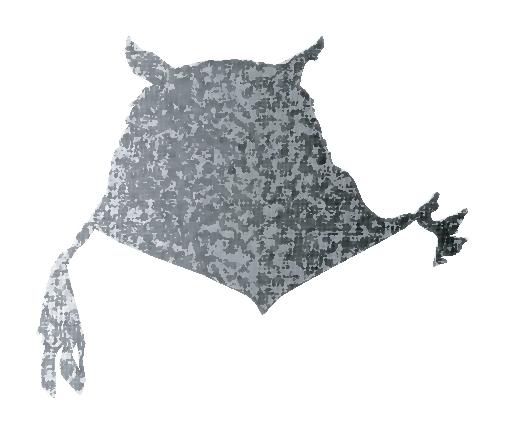


Be up to date with the latest version of the AMH Children’s Dosing Companion.
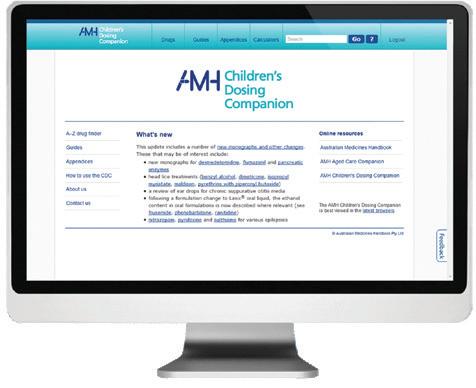
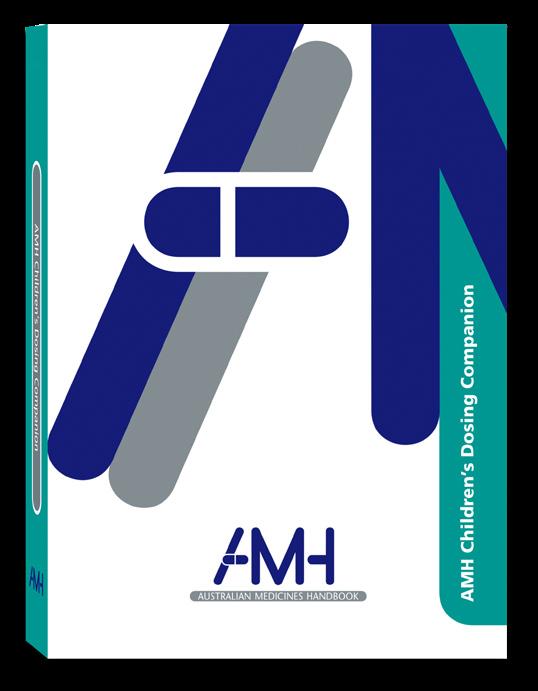
The 2023 release includes over 500 drugs, featuring new monographs and dose changes. Further details are outlined in the ‘Summary of Key Changes’.
The 2023 CDC edition marks a decade of publishing evidence-based information to support the dosing of medicines for young patients in Australia.
For more information go to www.amh.net.au
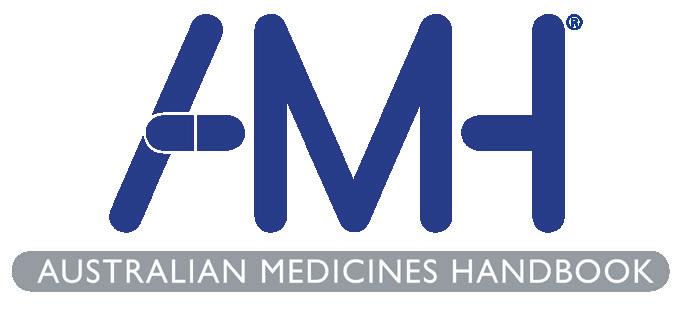
Celebrating 10 Years of the CDC!
Annie Butler
ANMF Federal Secretary
Earlier this year, the Albanese Government unveiled its May Budget, a commitment to review the scope of practice for healthcare professionals including nurses and midwives.
Acting on this commitment, the government recently introduced a workforce review aimed at examining how to enable health practitioners to work to their full scope of practice.
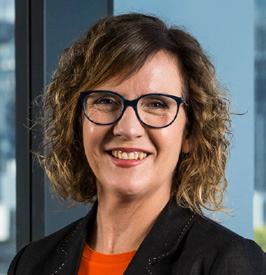
Initiated by the Strengthening Medicare Taskforce, this review seeks to expand and optimise the entire healthcare workforce. The goal is to promote broader community access and equity, particularly in regional, rural, and remote areas.
The review’s primary objective is to facilitate health practitioners in utilising their skills and training to the fullest extent, resulting in improved practitioner satisfaction and, crucially, improved health outcomes for our communities.
Nurses and midwives constitute a significant portion of the healthcare workforce, and possess the expertise, knowledge, and education necessary to enhance health equity and access throughout Australia.
The review must acknowledge the effectiveness, feasibility, appropriateness, and cost-efficiency of nurse and midwife-led care models, particularly those that are already in existence such as successful models of care using nurses and nurse practitioners to run preventive health clinics, Midwifery Group Practices, and Mental Health Nurse Incentive Programs.
Further, the review needs to address current barriers preventing nurses and midwives from working at their full capacity and identify policy and funding measures required to ensure optimal utilisation of all health practitioners, including nurses and midwives. When nurses and midwives work to their full scope across the health system, free from barriers that hinder the delivery of care, they can make a far greater difference to access to healthcare and outcomes such as reducing care fragmentation, keeping people well and living in their homes, and managing their healthcare and chronic conditions for as long as possible.
The Unleashing the Potential of our Health Workforce Review, will consult states, and territories, and health professions. The findings will be reported on in the latter half of 2024.
The aged care sector has witnessed substantial transformations as the Royal Commission’s recommendations come into effect. Building on the establishment of registered nurse 24/ 7 coverage and award wage increases for aged care workers earlier
this year, the enforcement of mandatory care minutes took effect on October 1st.
Under this legislation, aged care facilities must provide an average of 200 care minutes per resident each day, with at least 40 of those minutes delivered by a registered nurse.
This mandatory legislation is based on recommendations made by the Royal Commission, which sought to define the minimum daily allocation of staff time that should be provided to residents by a registered nurse each day. However, it was not stipulated how the remaining average care minutes should be distributed among ENs and carers.
Regrettably, this lack of clarity has bred confusion, leading to some aged care providers misinterpreting the requirement with some suggesting and communicating to their employees that ENs are not included in the Government’s funding for aged care reforms. Others are using this as a basis to reduce, or entirely cut, ENs from their rosters.
As ENs are integral and valued members of the aged care nursing team it is crucial this misinformation is dispelled.
The ANMF is actively advocating for legislative amendments that would stipulate minimum EN minutes, outlining their role and contributions to delivering quality care. This move is aimed at alleviating the confusion that has arisen due to the undefined distribution of care minutes.
Concluding the year on a powerful note is the ANMF’s upcoming 16th National Biennial Conference. This event brings ANMF delegates from across the country together to deliberate and resolve matters that will shape the union’s path for the next two years. The theme, ANMF: A Collective Force for Change, serves as a reminder of our past achievements and the results we can realise when collective efforts unite.
As this marks the final journal of the year, a sincere gratitude is extended to all our members who stand in solidarity, advocating for what is just for our patients, communities, and professions.
With eagerness, we turn our gaze towards 2024, brimming with aspirations of improving conditions for nurses, midwives, and carers, while fortifying healthcare and aged care systems for our communities. The future holds promise, and we remain resolute in our commitment to fostering positive change.
EDITORIAL Oct–Dec 2023 Volume 28, No. 2 1
DIRECTORY
ANMF FEDERAL & ANMJ
Level 1, 365 Queen Street, Melbourne Vic 3000 anmffederal@anmf.org.au
To contact ANMJ: anmj@anmf.org.au
FEDERAL SECRETARY
Annie Butler
FEDERAL ASSISTANT SECRETARY
Lori-Anne Sharp
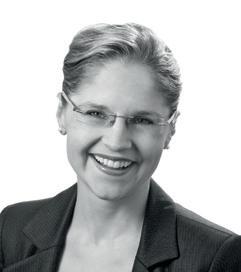
ACT
BRANCH SECRETARY
Matthew Daniel
NT
BRANCH SECRETARY
Cath Hatcher
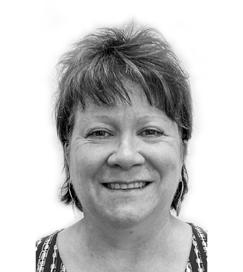
SA
BRANCH SECRETARY
Elizabeth Dabars
VIC
BRANCH SECRETARY
Lisa Fitzpatrick

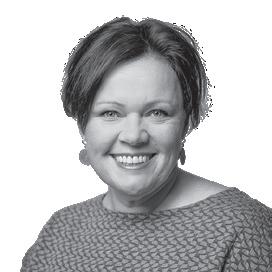
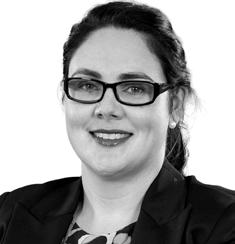



OFFICE ADDRESS
2/53 Dundas Court, Phillip ACT 2606
POSTAL ADDRESS
PO Box 4, Woden ACT 2606
Ph: 02 6282 9455
Fax: 02 6282 8447 anmfact@anmfact.org.au
NSW
BRANCH SECRETARY
Shaye Candish
OFFICE ADDRESS
16 Caryota Court, Coconut Grove NT 0810
POSTAL ADDRESS
PO Box 42533, Casuarina NT 0811
Ph: 08 8920 0700
Fax: 08 8985 5930 info@anmfnt.org.au
QLD
BRANCH SECRETARY
Kate Veach
OFFICE ADDRESS
191 Torrens Road, Ridleyton SA 5008
POSTAL ADDRESS PO Box 861 Regency Park BC SA 5942
Ph: 08 8334 1900
Fax: 08 8334 1901 enquiry@anmfsa.org.au
TAS
BRANCH SECRETARY
Emily Shepherd
OFFICE ADDRESS 535 Elizabeth Street. Melbourne Vic 3000
POSTAL ADDRESS
PO Box 12600, A’Beckett Street.
Melbourne Vic 8006
Ph: 03 9275 9333 / Fax: 03 9275 9344
MEMBER ASSISTANCE anmfvic.asn.au/memberassistance
WA
BRANCH SECRETARY
Janet Reah
OFFICE ADDRESS
50 O’Dea Avenue, Waterloo NSW 2017
Ph: 1300 367 962
Fax: 02 9662 1414
gensec@nswnma.asn.au
OFFICE ADDRESS 106 Victoria Street West End Qld 4101
POSTAL ADDRESS GPO Box 1289
Brisbane Qld 4001
Phone 07 3840 1444
Fax 07 3844 9387
qnmu@qnmu.org.au
OFFICE ADDRESS 182 Macquarie Street


Hobart Tas 7000
Ph: 03 6223 6777
Fax: 03 6224 0229
Direct information
1800 001 241 toll free enquiries@anmftas.org.au
OFFICE ADDRESS 260 Pier Street, Perth WA 6000
POSTAL ADDRESS PO Box 8240
Perth BC WA 6849
Ph: 08 6218 9444
Fax: 08 9218 9455
1800 199 145 (toll free) anf@anfwa.asn.au
Front cover
Photographer: Romy Photography
Editorial
Editor: Kathryn Anderson
Journalist: Robert Fedele
Journalist: Natalie Dragon
Production Manager: Cathy Fasciale Level 1, 365 Queen Street, Melbourne Vic 3000 anmj@anmf.org.au
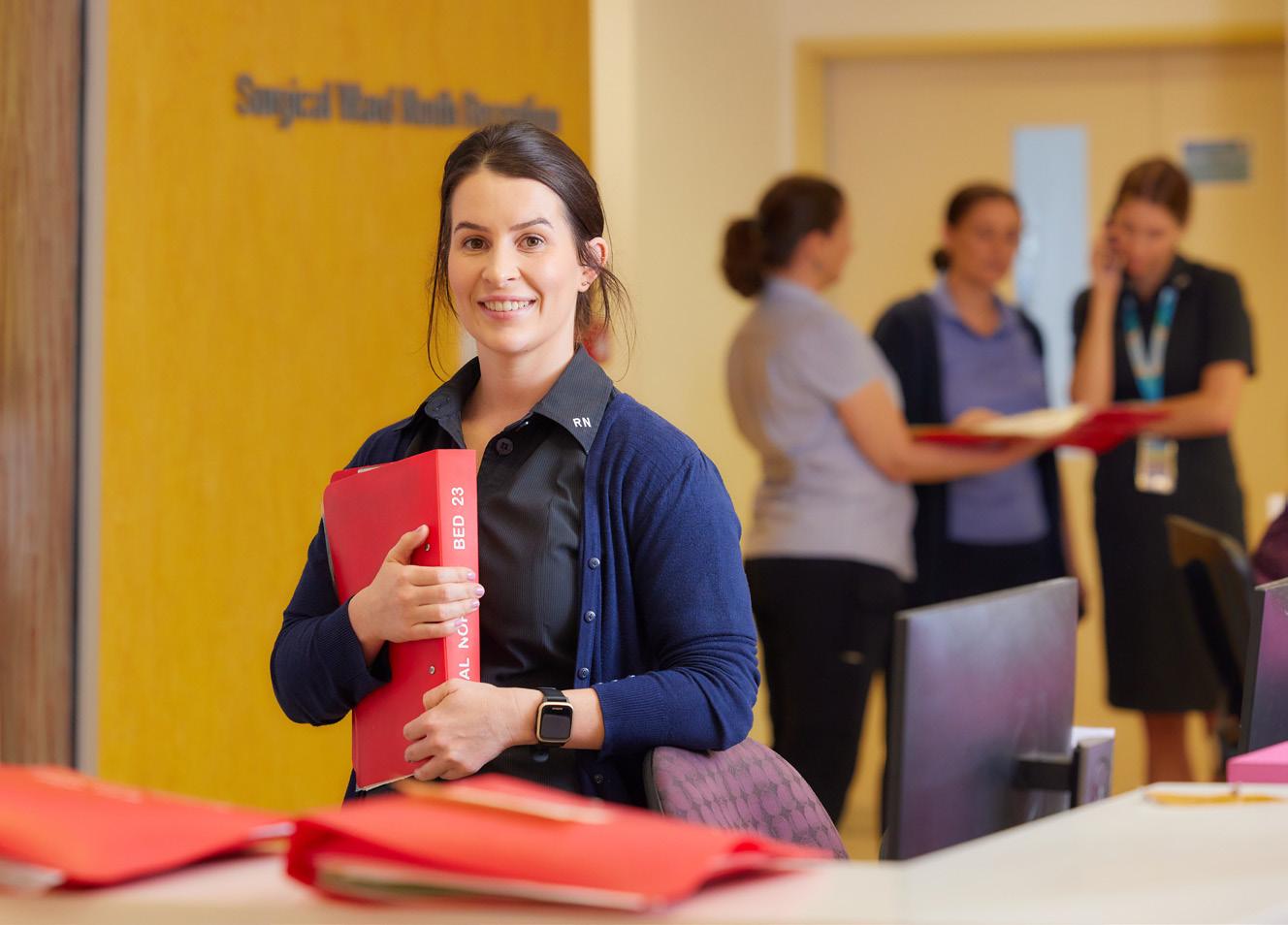
Advertising
Chris Masters cmasters@anmf.org.au
0428 052 138
Design and production
Graphic Designer: Blick Creative
Printing: IVE Group
Distribution: D&D Mailing Services
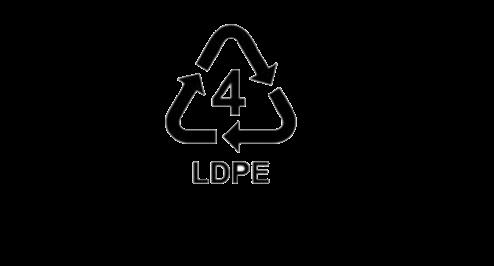
The Australian Nursing & Midwifery Journal is delivered free quarterly to members of ANMF Branches other than New South Wales, Queensland, Western Australia and ACT. Subscription rates are available via anmjadmin@anmf.org.au. Nurses and midwives who wish to join the ANMF should contact their state or territory branch. The statements or opinions expressed in the journal reflect the view of the authors and do not represent the official policy of the Australian Nursing & Midwifery Federation unless this is so stated. Although all accepted advertising material is expected to conform to the ANMF’s ethical standards, such acceptance does not imply endorsement. All rights reserved. Material in the Australian Nursing & Midwifery Journal is copyright and may be reprinted only by arrangement with the Australian Nursing & Midwifery Journal
Note: ANMJ is indexed in the cumulative index to nursing and allied health literature and the international nursing index
ISSN 2202-7114
Online: ISSN 2207-1512
Moving state.
Transfer your ANMF membership

If you are a financial member of the ANMF, QNMU or NSWNMA, you can transfer your membership by phoning your union branch. Don’t take risks with your ANMF membership – transfer to the appropriate branch for total union cover. It is important for members to consider that nurses who do not transfer their membership are probably not covered by professional indemnity insurance.
ANMJ is printed on A2 Gloss Finesse, PEFC accredited paper. The journal is also wrapped in post-consumer recycled (PCR) plastic.
The ANMJ acknowledges the Traditional Owners and Custodians of this nation. We pay our respects to Elders past, present and emerging. We celebrate the stories, culture and traditions of Aboriginal and Torres Strait Islander Elders of all communities. We acknowledge their continuing connection to the land, water and culture, and recognise their valuable contributions to society.
REGULAR COLUMNS 1 Editorial 2 Directory 4 News Bites 6 Lori-Anne 7 James 11 Legal 16 Environment & Healthcare 20 Nursing and midwifery leadership 22 Reflection 24 Issues 26 Viewpoint 29 Research & Policy 30 Reflection II 35 Industrial 36 Professional FEATURE
National nurse and midwife health service: coming to you in 2024 12 Global Unity and Resilience: A Glimpse into the International Council of Nurses Congress 2023 CLINICAL UPDATE
Nurse practitioner-led services supporting optimisation of treatment for depression in primary care FOCUS 37 Nursing and midwifery education: Part 1
8
32
8
2023
28, NO.2 @ANMJAUSTRALIA
OCT–DEC
VOLUME
CONTENTS
ANMJ bids farewell to legal columnist, Linda Starr
After more than a decade as the ANMJ’s resident expert in the field of nursing and the law, nurse academic Professor Linda Starr has penned her final column.

With a longstanding interest in crime, the nurse academic explored topical and important issues on all matters related to the professions and the law, such as documentation, criminal cases, and health professionals violating professional boundaries.
“I have mostly enjoyed the opportunity to explore the many legal and ethical
Mothers in prison embrace parenting program to strengthen bonds with separated children
A new prison parenting program has been developed to help ease the strain of separation experienced by women imprisoned in Australia and their children and maintain important mother-child bonding.
Developed in collaboration with women in prison, as well as prison staff and key members of the Aboriginal community in South Australia, the Mothers Matter program, led by University of South Australia midwife and researcher, Belinda Lovell, includes direct input from Aboriginal and/or Torres Strait Islander women, who make up 33% of the 3,000 female prisoners in Australia.
issues that impact on health professional practice and the health outcomes for consumers.” Linda told the ANMJ “The opportunity to share this information with colleagues through the journal and the gratitude that the journal has kept this focus – there are not many opportunities for the dissemination of this information, which I still believe to be so important to all areas of
practice. Cases are great opportunities to learn from others’ errors/poor decisions – they remind us that the value of education, adherence to professional policy, guidelines and standards are essential for practice and that even the slightest variation from these may have potential harm for the consumer and reputation of the profession.”
Her parting message to nurses and midwives is that everything health professionals do is underpinned by law and/or policy.
“That is the key point to remember – the law is pervasive and each and every one of us has the professional obligation to practice in accordance with those standards – where we draw the line and practice in a manner that does not meet the legal threshold we must accept the consequences that it was our choice to do so.”
Lovell has spent the past five years developing, implementing and evaluating the program with women at the Adelaide Women’s Prison. The pilot program involved nine mothers in prison – including three Aboriginal women – separated from a total of 22 children.
“There are multiple pathways that can lead to women offending,” Lovell said.
“Most of the women have complicated family histories that can include child abuse, sexual abuse, childhood neglect and family violence.
“There is also a high risk that their children may follow the same path. Introducing
some positive parenting skills in prison can help them to maintain a strong connect with their children, even while separated. “For mothers, connection with their children may be their only source of hope and motivation while they are in prison. If we can foster strong relationships between the caregiver and mother, this can encourage successful parenting after women are released from prison.”
Initial feedback from the program has been positive, with women embracing the chance to learn more about parenting and connecting with their children through letters, cards and telephone conversations.

NEWS BITES 4 Oct–Dec 2023 Volume 28, No. 2
Inclusive language kit for midwives to support diverse LGBTQ+ parents

A free inclusive birthing language kit is now available to all Australian midwives and birth workers to include in their workspaces.
The kit explains language preferences and pronouns, as well as comfortable ways to engage with LGBTQ+ parents who have different sexualities, gender and make up.
The project is a collaboration between Midwives Connecting Community and LGBTQ+ charity Rainbow Families. Gender inclusive birthing language makes LGBTQ+ parents more comfortable during the birth process by affirming their identities and avoiding assumptions based on traditional gender norms. It allows them to be recognised and acknowledged for who they are, which contributes to their emotional wellbeing during birth.
Queer midwives Nerida Grant and Katrina Molloy co-designed the inclusive language poster which has been informed by LGBTQ+ parents they have supported, and who have expressed the need for a more inclusive approach in their healthcare. The poster aims to equip midwives and birth workers with the right language to authentically support these families and boost their confidence in asking important questions.
“When midwives use inclusive language, they make their families feel respected and comfortable and build trust more easily. This approach allows for open and honest communication, which is crucial during the emotional and intimate process of childbirth,” said Queer midwife Katrina Molloy.
To register for a hardcopy of the poster, visit www.rainbowfamilies.com.au
Poor lifestyle in 60s linked to risk of aged care
Physical inactivity, smoking, poor diet and sleep disorders between the age of 60 and 64 are linked with more than double the risk of admission to aged care.

The University of Sydney study involving over 125,000 Australians, aged over 60 years assessed five key risk factors: smoking; physical activity levels; sitting time; sleep patterns; and diet.
Participants were categorised into low, medium, or high risk lifestyle groups. Medical records via the Medicare Benefits Schedule and hospital data allowed researchers to monitor for aged care admissions over 10 years.
Compared with over-60s in the low risk lifestyle group, the risk of aged care admission was 43% higher for those in the high risk group, and 12% higher for those in the medium risk group. All key lifestyle factors - bar diet - were independently associated with aged care admission. The risk of admission was highest (55%) for current smokers, compared with those who had never smoked. “While further research is needed, our results suggest that people could potentially modify their lifestyle to alter their risk of admission to a nursing home or aged care facility in the future.
“On a public health level this study suggests we should be looking at strategies to encourage older people to improve their lifestyle including focusing on smoking cessation, reducing sitting time, increasing physical activity and improving sleep to help reduce the burden on our aged care system,” said Dr Alice Gibson of the University of Sydney’s Charles Perkins Centre and Menzies Centre for Health Policy and Economics. — Journal of Epidemioloy & Community Health.
NEWS BITES Oct–Dec 2023 Volume 28, No. 2 5
Lori-Anne Sharp ANMF Federal Assistant Secretary
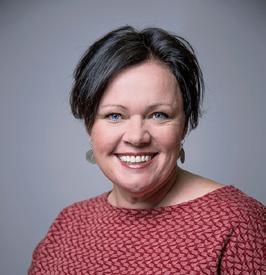
Getting to know our northern neighbours: A journey across the Timor Sea
As ANMF Federal Assistant Secretary, I have the privilege of sitting on several boards, including Union Aid Abroad APHEDA (Australian Peace for Health and Education Abroad)—the global justice organisation of the Australian union movement.

I discovered APHEDA while working as a district nurse and ANMF Victorian Branch Council member. Impressed by their union-building efforts in developing countries and work against asbestos, and many other projects, I became a paying member.
APHEDA has a unique connection with the ANMF, as its origins began with nurse and ANF member Helen McCue in 1983. Helen was inspired by her experiences nursing in the Middle East and proposed to the Australian Council of Trade Unions the establishment of APHEDA with the global justice movement being realised in 1984. ANMF remains a sponsoring partner of APHEDA, supporting global justice and stronger unions.
I joined an APHEDA study tour in Timor-Leste, witnessing their impactful programs like the Working Women’s Center, which empowers domestic workers to improve their working conditions. Recently, they won a significant victory in their campaign to establish a national minimum wage, maximum hours of work, paid leave and other essential conditions. Without unions, labour regulations or a robust social security system, domestic workers, 90% of whom are women, are particularly vulnerable.
The delegation of 12 Australian Unionists also visited APHEDA- supported farming projects aimed at improving food access. We met with many remote
area farm groups who are addressing the challenges of an insecure food system, climate change and the high cost of importing food by organising themselves into unions and food cooperatives. The farmers from Uniaun Agrikultores Ermera-UNAER explained how they educate farmers about modern farming practices, politics and economics. The goal of establishing a national farmer’s federation by 2025 is firmly in their sights.
Timor-Leste’s history includes an invasion and brutal occupation by Indonesia until 2002, followed by a remarkable journey to independence. Meeting Prime Minister Xanana Gusmao highlighted their resilience. Despite a tumultuous history and many challenges Timor-Leste has endured, we witnessed extraordinary strength and solidarity, which resonated in all the union leaders, women, farmers and government officials. It was an inspiring experience that has left a lasting impression.
To find out more about APHEDA visit: www.apheda.org.au
LORI -ANNE 6 Oct–Dec 2023 Volume 28, No. 2
Lori-Anne (second right) at the Working Women's Center
James Lloyd
 Federal Vice President
Federal Vice President
The Vivian Bullwinkel statue: Honouring a heroic legacy in nursing
The sculpture of Lieutenant Colonel Vivian Bullwinkel is the first to commemorate the service of an individual nurse or woman at the Australian War Memorial in Canberra. The recent unveiling of this statue in July 2023 is a powerful testament to nurses’ unwavering dedication, resilience, and sacrifice worldwide.
A collaborative project between the Australian College of Nursing (ACN) and the Australian War Memorial, the sculpture recognises not only Lieutenant Colonel Bullwinkel, but all Australian nurses who have lost their lives, survived atrocities or made sacrifices while serving their country.
Vivian Bullwinkel’s legacy is a tale of unimaginable bravery and strength in the face of adversity and the horrors of war. Vivian was born in 1915 in South Australia. In the 1930s, she trained as a nurse and midwife and embarked on a career that would soon lead her to the horrific events of World War II. In 1942, as a member of the Australian Army Nursing Service, Bullwinkel was aboard the SS Vyner Brooke when it was sunk by Japanese forces off the coast of Sumatra. Stranded on the beach, she and fellow nurses were forced to walk into the sea and machine gunned from behind, killing 21 of her colleagues. Feigning death after being shot, Bullwinkel later surrendered to the Japanese forces and spent over three years as a POW. In 1947, she became the Director of Nursing at Fairfield Infectious Disease Hospital. During the rest of her career, she devoted herself to the nursing profession and various charitable causes. Her commitment to nursing and midwifery was recognised with an MBE in 1973 and an AO in 1993. Led by the ACN, the unveiling of the Vivian Bullwinkel statue, represents more than a mere gesture - for nurses, it embodies the very essence of our profession - a beacon of light and hope in times of darkness, a source of comfort and care when all seems lost. It also serves as a reminder that nursing is not merely a job but a noble ethos that requires immense dedication and a willingness to go beyond the call of duty, as Bullwinkel did during her captivity as a POW. Her resilience and ability to provide solace to her fellow captives amidst the darkest days of the war have etched her name in the annals of nursing history.
Further, her legacy is not only a commemoration of the past but a call to action for the future. It serves as a source of inspiration for aspiring nurses. Just as Bullwinkel’s courage provided solace to her fellow prisoners, nurses today hold the power to heal, comfort, and uplift their patients, even in the most challenging circumstances.
As I reflect on the history of Vivian Bullwinkel, I am reminded that certain aspects of nursing have changed tremendously over the years. Vivian and her colleagues had far more limited access to medical technology and equipment; antibiotics were not widely available; PPE was limited; transportation more basic, mortality rates much higher, gender discrimination was more prevalent, and support services to help nurses cope with trauma were scarcer. However, other aspects of nursing remain unchanged: long work hours and heavy workloads, emotional and psychological stress and burnout, infection control, patient diversity, communication challenges, staff shortages, collaboration with the healthcare team, patient advocacy, adapting to technological changes, healthcare regulation changes, resource management, and balancing both personal and professional life.
As her statue stands tall, it is a timeless tribute to all nurses - past, present, and future - who continue to uphold the noble values of our profession. The legacy of Vivian Bullwinkel lives on in the hearts of nurses everywhere to provide care, comfort, and compassion to all they touch. The statue, a stunning tribute to the life and contributions of an extraordinary nurse, is an enduring symbol of courage and compassion, inspiring both current and future generations of nurses to embrace their pivotal roles in healthcare.
For more information on the Bullwinkel Project visit: https://foundation.acn.edu. au/Foundation/bullwinkel-project.
JAMES Oct–Dec 2023 Volume 28, No. 2 7
ANMF
National nurse and midwife health service: coming to you in 2024
 Natalie Dragon
Natalie Dragon
FEATURE
Photographer: Romy Photography
Become a NNMHS Ambassador or contributor
The NNMHS is looking for contributors to share their health and wellbeing stories, insights, experiences and self-care tips to help inspire others. Or join us and be part of a like-minded community as an ambassador to help promote the service and health and wellbeing in your workplace and at home.

For more information, email Deputy Director Mark Aitken maitken@anmf.org.au
“It’s really exciting that we’ve now entered this next stage and the service will soon be up and running to help meet the needs of nurses, midwives and students of the professions all around Australia - in any challenge they may be experiencing that impacts their health and wellbeing,” said National Nurse and Midwife Health Service (NNMHS) Director Heather Pickard. Research conducted for the NNMHS shows that nurses, midwives and students need services to support them to combat the increased challenges and burdens placed on them during and since COVID which are influencing intentions to leave their jobs or the professions altogether.1
The Australian Government has invested $25.2 million over five years to establish the NNMHS which will provide free, confidential and independent support, led by nurses and midwives, for nurses, midwives, and students with information, advice, treatment and specialist referrals. Findings from stakeholder groups held around the country during the establishment phase found widespread unmet need. Key issues impacting health and wellbeing of nurses, midwives and students are varied and include: stress and burnout, occupational violence, workplace bullying and harassment, substance misuse, mental health, trauma, family violence, lack of management support, COVID-19, and system pressures including workloads and high patient acuity.
Stress and burnout
Nurses and midwives highlighted high levels of stress and burnout especially as a result of the COVID-19 pandemic.
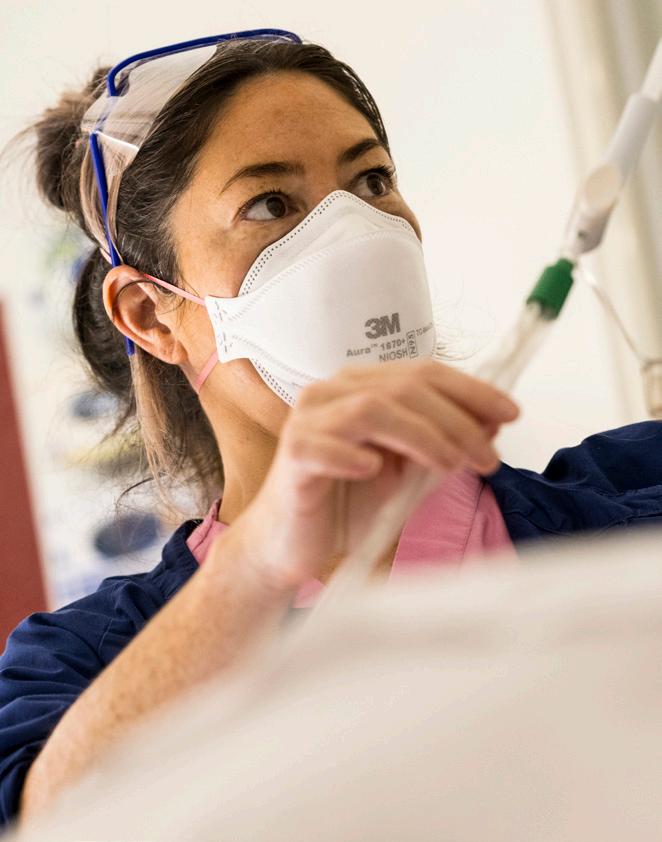
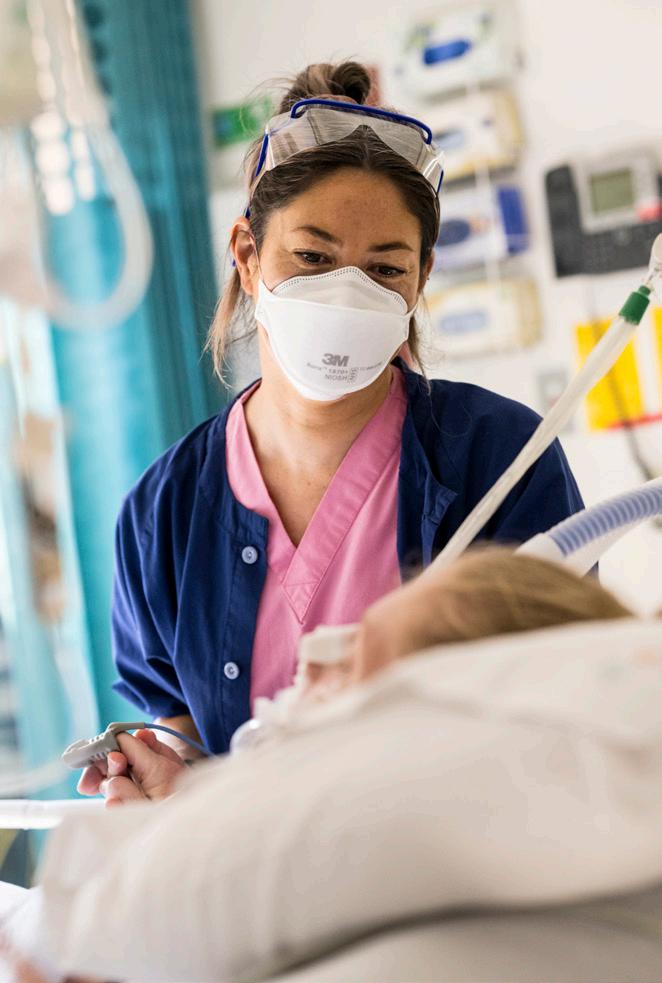
“If we know we’ve got to work really hard for 12 months because of COVID everyone gets on and does it. Our problem that we’re facing now is that it’s not ending soon, the cavalry’s not coming, we’ve had enough, we’re burnt out,” said a Western Australian nurse.

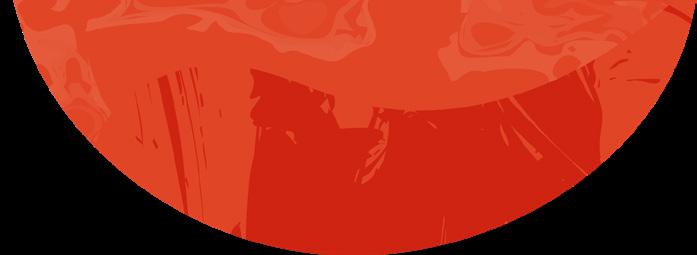
“Fatigue and burnout is a major one and that’s kind of associated with being the helper, not the person who gets help,” said a Victorian participant.
The pandemic has brought to light many vulnerabilities and weaknesses in healthcare systems internationally. Nurses and midwives are under extreme and persistent psychological pressure. A report commissioned by the NSW Nurses and Midwives’ Association (NSWNMA) revealed 15 in every 100 nurses and midwives surveyed were suffering symptoms of posttraumatic stress at clinical levels. Overwork, exhaustion and burnout were identified as key contributors.
A national service to support the health and wellbeing of nurses and midwives is now in implementation phase and on target to launch in early 2024.
FEATURE Oct–Dec 2023 Volume 28, No. 2 9
Photographer Chris Hopkins
Normalising help-seeking
A barrier to accessing support services is reluctance to seeking help, something nurses and midwives are not attuned to as identified anecdotally in the focus groups and supported by research.
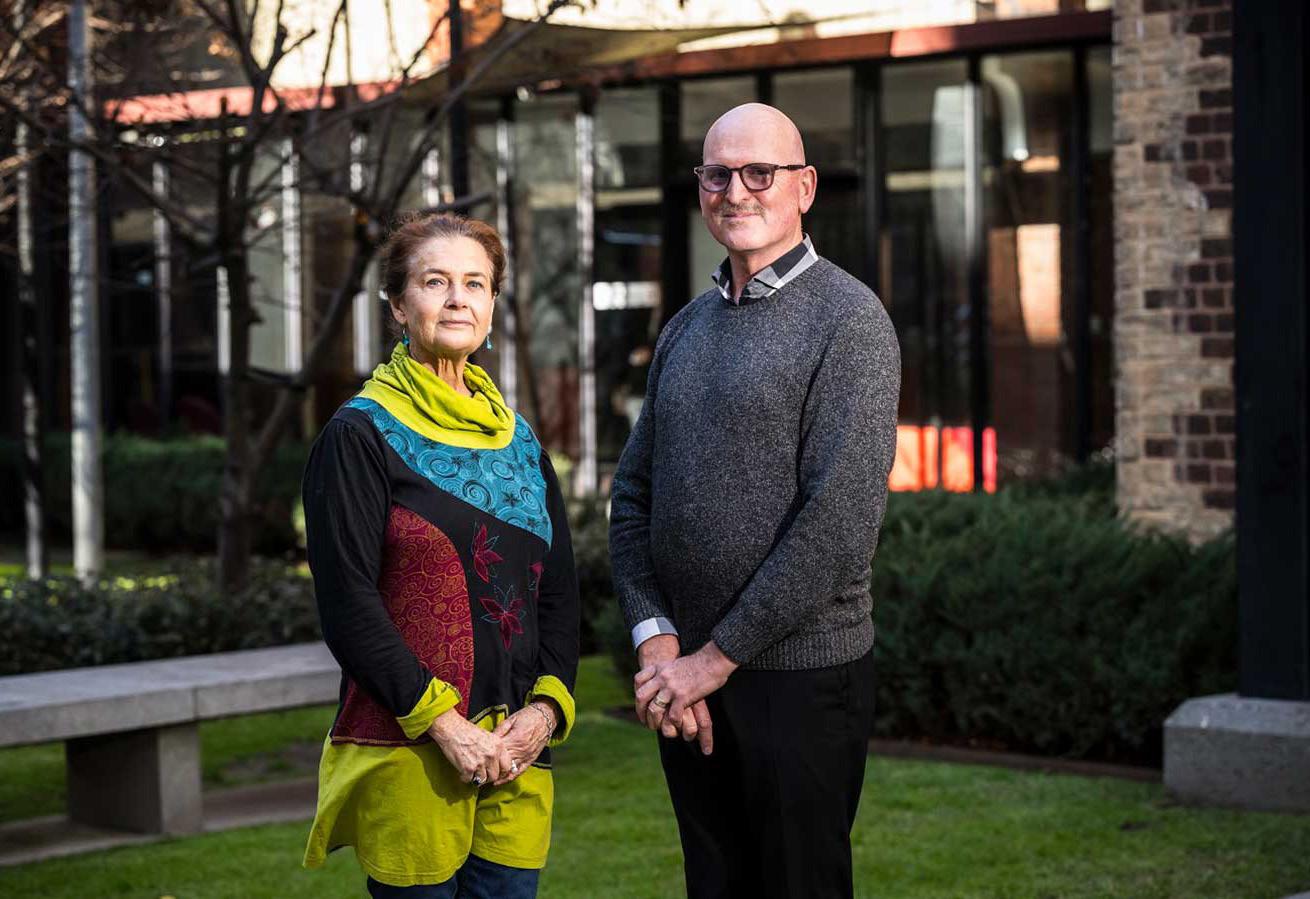
“I think there’s still unfortunately a little bit of not quite stigma that might be too strong a word. But being a nurse, if I access supports, I’m not coping, I’m not doing my job as a nurse,” a Queensland participant said.
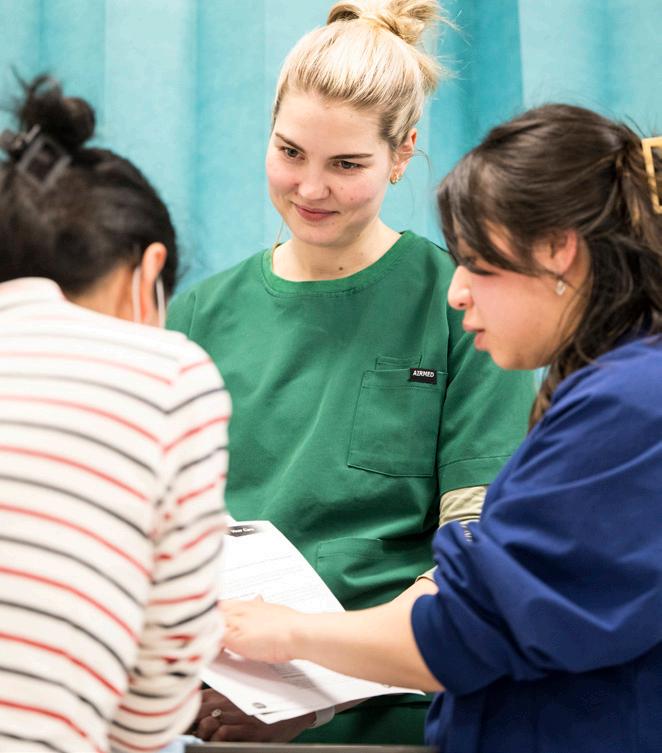
“I think there’s quite a lot of culture around shame of feeling upset about something,” a Victorian nurse said.
This is something the new service is keen to target – normalising help-seeking in the professions. Australian research shows low levels of help-seeking of health professionals in general. In a 2021 study, only 10% of participants who had reported mental health symptoms accessed formal support.2
Promisingly, nurses compared to doctors appear to be more likely to seek help from workplace programs or external supports which has been suggested to arise from higher rates of union membership.1
NNMHS Director Heather Pickard said nurses and midwives may be resistant to getting treatment due to the high regulatory framework they work in, and the culture within nursing and midwifery of being the helper. “We’re keen to help break down these barriers. It can happen to anybody – needing to ask for and receive help. We need to set aside any moral judgement and reach out to other nurses and midwives who understand - because help really is available.”
Person-centred peer support
Chronic workforce shortages across the health sector, the ongoing impact of the pandemic resulting in high levels of burnout and the effects of occupational violence has made it critical that nurses, midwives and students have person-centred health services with appropriately qualified and compassionate nurses and midwives available to provide services to support their health and wellbeing.
The focus groups strongly identified reluctance by nurses and midwives to use employee-assistance programs (EAPs) due to fears of concerns of confidentiality and perceived lack of independence from the health service. As one nurse manager said: “We operated the COVID ward and it was like a war zone, we couldn’t come out, we couldn’t go to the cafeteria. There was a lot of overtime being pulled because we just didn’t have enough staffing. I didn’t feel comfortable [using EAP] but I told my staff to go. It’s much better now thankfully and all of us have gone back to whichever ward we came from. But some have left [the hospital], and some have left nursing altogether which is sad because I don’t think we were ready, I think we were just slammed.”
Independence from the workplace is a key factor identified in the focus groups as critical to uptake of the new service by nurses and midwives. Along with accessibility, cultural sensitivity, confidentiality and normalising reaching out.
Some nurses and midwives highlighted the futility of reaching out for support while continuing to return to the same workplace under the same conditions.
NNMHS Deputy Director Mark Aitken acknowledged the service is not a panacea to some of the underlying workforce and other challenges the professions face, but it offers care and support for nurses and midwives experiencing sensitive issues in a welcoming, compassionate and nonjudgmental environment — providing a safe place to connect and heal.
“It may be that you need to take time out, or work out what you need in order to get well with someone who understands. There are so many options in nursing, you don’t have to stay where you are if it’s impacting your health and wellbeing. It’s about finding hope, direction and a way forward that best supports you in whatever you are dealing with.”
For more information contact Heather Pickard / Director: hpickard@anmf.org.au, or Mark Aitken/ Deputy Director: maitken@anmf.org.au
References
1. Peters, M, Marnie, C & Clarke, J. National Nurse and Midwife Health Service: a literature review. 2023. Australian Nursing and Midwifery Federation.
2. Smallwood N, Karimi L, Pascoe A, et al. Coping strategies adopted by Australian frontline health workers to address psychological distress during the COVID-19 pandemic. Gen Hosp Psychiatry. 2021; 72: 124-30.


3. Al Maqbali M, Al Sinani M, Al-Lenjawi B. Prevalence of stress, depression, anxiety and sleep disturbance among nurses during the COVID-19 pandemic: A systematic review and meta-analysis. J Psychosom Res 2021; 141: 110343.
4. Sharplin G, Brinn M, Eckert M. Impacts of COVID-19 and workloads on NSW nurses and midwives’ mental health and wellbeing. A report prepared for the New South Wales Nurses and Midwives’ Association. 2023. Adelaide, Australia.
Heather Pickard and Mark Aitken
FEATURE 10 Oct–Dec 2023 Volume 28, No. 2
Photographer Chris Hopkins
Linda Starr
Shifting focus of legal matters
As I was preparing for this last legal issues editorial that I will be writing for the journal, I was conscious of the shift in focus of legal matters concerning health professionals over the years.
With few landmark civil cases in recent years, the main arena for scrutiny of professional practice and conduct has been through the Coroner’s Court and the Tribunals, with a slight increase in criminal matters involving health professionals – or those pretending to be.
In fact, the Australian Health Practitioner Regulation Agency (Ahpra) has recently completed 100 criminal prosecutions protecting the public from unregistered health practitioners. These cases vary from practitioners who once held registration but let it lapse and continued to practice in their field unregistered, to those holding out as practitioners but have never qualified nor registered in the profession they were holding out in - including a fake dentist prosecuted twice by Ahpra for performing a wide range of dental procedures as well as administering prescribed medications without authorisation to do so.
On the other hand are registered practitioners such as Michael Dempsey, who held out 11 others as either qualified physiotherapists or occupational therapists in aged care homes who were actually taxi drivers or hospitality workers with no relevant qualifications or registration. The risk to public safety is clear in these cases – the obligation for systems to be in place ensuring only appropriately qualified and registered health professionals are engaged to provide services is obvious.
However, some qualified and registered health practitioners also pose a risk to public safety through abuse of power and the authority that comes with registration or poor clinical performance – often through normalisation of poor practice and a failure to reflect on actual or near miss events.
For example, during 2021/22, there were 925 notifications concerning possible failure to maintain professional boundaries – an increase of 63% on the previous year. The majority of these (81.4%) related to three professions – 43% medical practitioners, 26% nurses and 13% psychologists where there was a clear power imbalance between practitioner and client. As each profession has very clear guidelines for practitioners on this matter, and each practitioner declares annually that they understand their professional obligations regarding professional standards and codes of conduct, there is cause for concern that there is an increase in these notifications.
There have also been cases involving an abuse of authority through breaches of confidentiality, mismanagement of medications and fraudulent and unauthorised prescribing for self, family or patients. These cases can reveal a serious health impairment of the practitioner, well-meaning but misguided exercise of clinical judgement or just poor practice. They all involve some level of choice to adhere to professional standards and expected conduct or not.
Too often, poor practice leads to normalisation of the behaviour where both the practitioner and sometimes those working with them accept the conduct as standard and rationalise this through referring to poor staffing/skill mix or workplace culture rather than taking an objective and informed appraisal of the practice. In some cases, this review only occurs through the Coroner’s Court, where such events have led to an avoidable death.
Reference
Australian Health Practitioner Regulation Agency. Ahpra and National Boards annual report 2021/22. Melbourne 2022. https://www.ahpra.gov.au/ Publications/Annual-reports/ Annual-Report-2022.aspx
Editor’s note:
This is the last column Linda will write for the ANMJ. We thank Linda for her informative articles over the past 10 years and wish her the best in her retirement.
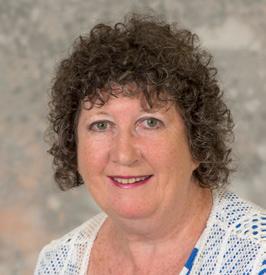
In the 2021/22 annual report, Ahpra regulated more than 850,000 practitioners across 16 professions. During that year, there were approximately 18,710 notifications about 14,313 health practitioners (1.7% of practitioners), a 6.2% rise from the previous year –mainly about clinical care. In more than 60% of these cases, no further regulatory action was required due to steps already taken by the practitioner and/or their employer addressing any risk to public safety. Some cases, however, warranted referral to tribunals where there has been actual or potential harm to patients, often due to choices made by the practitioner to act in a manner inconsistent with professional standards and public expectation.
We all make choices and draw a line in the sand as to what we are prepared to be accountable for – if we choose to practice in a manner that is less than the expected standard of our profession, then we choose to accept the consequences for this. The statistics tell us that only a small number of practitioners make this choice and that the majority of registered practitioners provide exceptional care to the public. However, that the number of notifications concerning practitioners increases annually should serve as a message to us all to be vigilant in maintaining professional standards of both ourselves and our colleagues.
I hope that the cases I have discussed over the years through this column have been useful in raising awareness and perhaps triggering some self-reflection around how we practice in line with professional and public expectations.
An expert in the field of nursing and the law Associate Professor Linda Starr is in the School of Nursing and Midwifery at Flinders University in South Australia
LEGAL Oct–Dec 2023 Volume 28, No. 2 11
Global Unity and Resilience: A Glimpse into the 29th ICN Congress 2023
Kathryn Anderson
In July this year, over 6,000 enthusiastic nurses from around the world converged in Montreal, Canada, transcending borders and backgrounds to tackle shared healthcare challenges.

I NTERNATIONAL COUNCIL OF N URSES CONGRESS 2023 12 Oct–Dec 2023 Volume 28, No. 2
Photography: Kathryn Anderson and NH Photographes
Under the theme Nurses Together: A Force for Global Health, the Congress illuminated the remarkable unity within the nursing profession.

At the opening of the four day event, Dr Pamela Cipriano, President of the International Council of Nurses (ICN), reflected on the pivotal role nurses played during the pandemic, emphasising their indispensable contribution to health and survival. She underscored that the pandemic brought to fore the urgent need for governments to invest in nursing education, jobs, leadership, and clinical practice, which were core themes of the Congress. Delegates, academics and nurse leaders also delved into other critical concerns such as the global nursing workforce crisis, ethical recruitment practices, innovative care models, primary care, and the recognition of advanced practice nurses.
Moreover, inspiring stories from nurses working in disaster zones further emphasised the unwavering dedication of the nursing community. As a testament to their commitment, the International Council of Nurses pledged continued support for nurses working in challenging environments worldwide. The gathering showcased not only the challenges nurses faced but also their resilience, determination to improve care, and their global impact on healthcare.
Opening ceremony
In a remarkable opening ceremony, nurses hailing from 126 different countries converged, dressed in national costumes transforming the venue into a tapestry of cultures. Thousands of attendees celebrated their profession at the event and eagerly anticipated the opportunity to exchange their experiences to improve the nursing profession and nursing care in their own country.
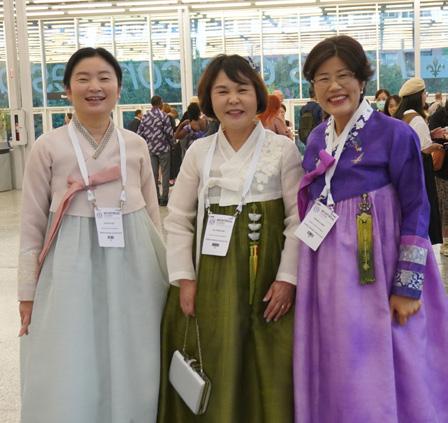
ANMJ
As the only nursing journal at the Congress, thousands of delegates from all corners of the world took the opportunity to discover some of the innovations, challenges and experiences in the Australian nursing landscape. Kate from the US wrote:
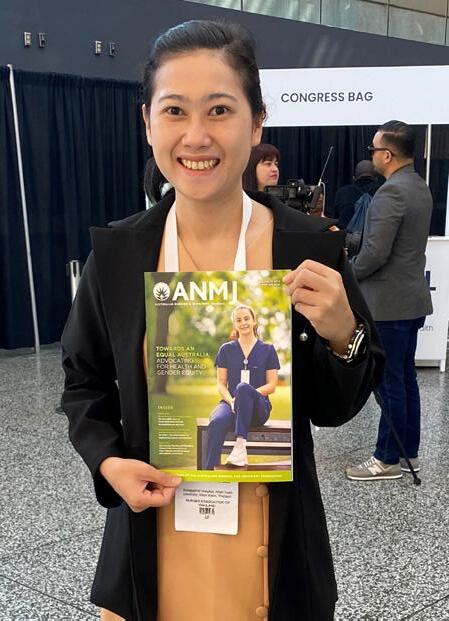


“I was so happy to pick up a copy of the Journal at the ICN this week. First off, it was generous to distribute so many. It was my first ICN and I was picking everything up. Your journal stood out for its content and production. I am so interested in the mental and physical health stories. We do work in the United States on healthy nurse healthy nation (ANA) the wellbeing initiative (the American Nurses foundation) and are always looking for models and elements to build the case for greater investment in nursing. Thank you for sharing the successes from Australia.”
“It’s very exciting your journal is here and we look forward to giving it a read,” they chorused.
Left: A group of excited South Korean nurses showed off their beautiful attire and were thrilled to be photographed for the ANMJ
Above: Nurses from the Bahamas, said they looked forward to reading the ANMJ and learn about nursing in Australia.
Left: Pongladda Paralee from Srinagarind Hospital and Khon Kaen University and the Nurses Association of Thailand posed proudly with the Journal.
Below: Botswana nurses were also eager to pose for the journal. “We are very excited to be here to learn from nursing leaders.”
I NTERNATIONAL COUNCIL OF N URSES CONGRESS 2023 Oct–Dec 2023 Volume 28, No. 2 13
Delegates
Delegates actively participating at the congress
Discussions from experts in the field
Strengthening health systems with the utilisation of advanced practice nurses-a global perspective.
ANMF Federal Secretary Annie Butler attended the ICN’s Council of National Nursing Association Representatives meeting before the Congress. She spoke with the President of the Polish Nurses Association who said her country took in three million refugees from the Ukraine, which is 10% of Poland’s population.
Nursing experts and academics presented on the need for investment in primary healthcare and its workforce. This was recognised as key to improving health outcomes and help reduce the burden on the acute care sector.
Part of these discussions included a more consistent international and national approach for advanced practice nurses working in specialty areas.

Nursing and midwifery recruitment practices hurting low-income countries
Nursing and midwifery shortages are a phenomenon experienced in most countries worldwide. While shortages continue to grow, governments are grappling to fill the shortfall, with many turning to recruitment from low-income countries. However, these practices often come at a high cost to the countries they recruit from.
The Philippines, which has long been seen as a source of health workers for other countries, is now experiencing nurse shortages to support their healthcare system adequately.

Fely Marilyn Elegado-Lorenzo, Professor of Health Policy and Administration at the College of Public Health, said the Philippines was thought of as “the big producer of nurses”.
“But actually, we are in shortage and have difficulty actually meeting the country’s needs,” she said.
Pushing boundaries in digital health crucial for healthcare
Nurses from El Salvador said it was an extreme privilege to attend the Congress and despite poor resources in their country they hoped to bring back new ways to improve patient care.


Professor Natasha Phillips, a former UK Chief Nursing Officer and the founder of Future Nurses said historically, the focus on the digital transformation of healthcare has been on electronic health records.
“While these are essential for information sharing, they’re not themselves transformative. In fact, what we have too often seen is the translation of old ways working into digital systems. This has led to overburdened nurses spending considerable time documenting care and actually adversely effective critical thinking of some.”
But as technology rapidly evolves nurses must lead the charge in healthcare, she said.
The Canadian Nurses Association co-hosted the Congress with the International Council of Nurses. BC Nurses Union Professional Officers Laura Alasalay and Rena Sine attending the Leadership presentation posed for the ANMJ



 Annie poses with Singapore nurses, who hosted the last Congress before COVID.
ANMF Federal Secretary Annie Butler with Emeritus Professor Christine Duffield
Researchers and specialists in Advanced Practice Nursing
Annie poses with Singapore nurses, who hosted the last Congress before COVID.
ANMF Federal Secretary Annie Butler with Emeritus Professor Christine Duffield
Researchers and specialists in Advanced Practice Nursing
I NTERNATIONAL COUNCIL OF N URSES CONGRESS 2023 14 Oct–Dec 2023 Volume 28, No. 2
Professor Natasha Phillips.
Disaster zone
War, natural disasters, climate change and pandemics have touched more people than ever before and have a very direct impact on global health, said CEO of the International Council of Nurses Howard Catton who convened the Disasters and Healthcare session.
“These issues severely harm our healthcare systems, straining resources and diverting money and staff from healthcare, and they are more frequent in low and middle income countries where healthcare systems are underfunded and under resourced. What is really concerning is that this is not only a violation of international treatments and grievance, but in some situations it looks like it might be a deliberate part of military strategies.”
Amongst other nurses speaking about disaster zones in their own countries, Chief Nursing Officer of Ukraine, Kateryna Balabanova, spoke about the extreme hardship of communities, and healthcare as a result of the attack from Russia.
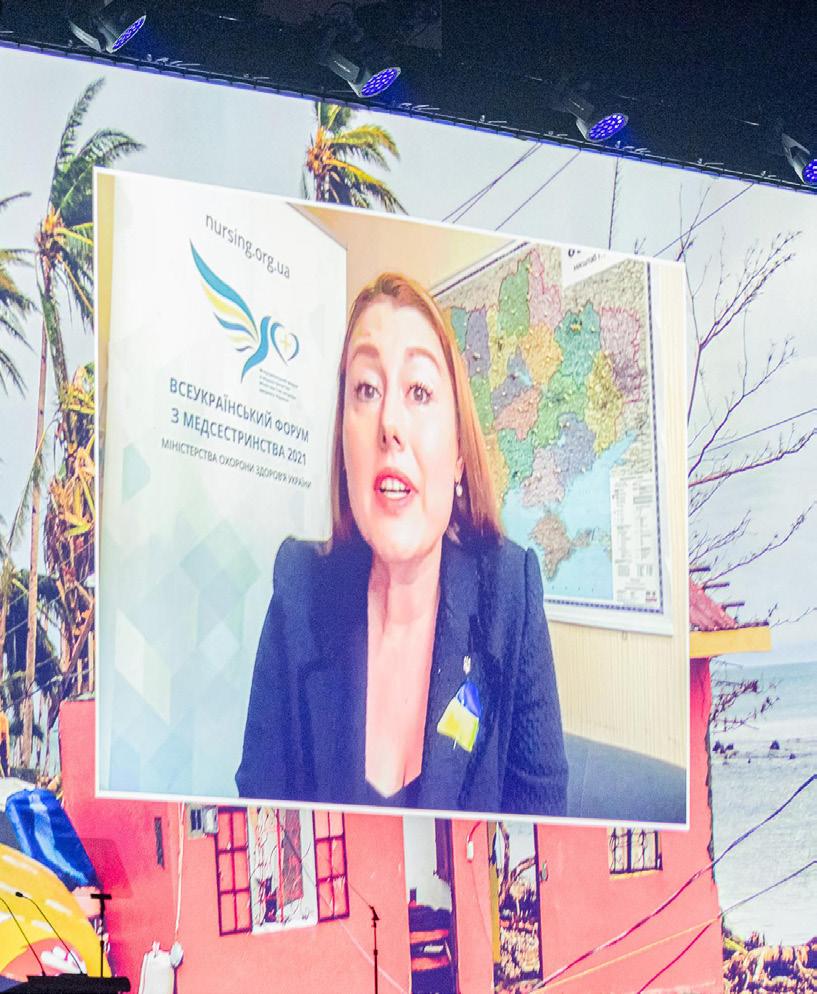
“Despite all this awful bombing and attacks we carry on despite the awful song we have in our hearts.”
Kateryna said around 35,000 nurses and doctors have died as a result of the conflict.
After she spoke, thousands of nurses applauded showing their solidarity and support for their Ukrainian counterparts. Kateryna was overcome with emotion and gratitude in response.
Scientific Program
The scientific program was a major focus of the conference. The enormity of poster presentations showed the depth and breadth of international research, analysis and action to improve outcomes for nurses and the communities they care for.
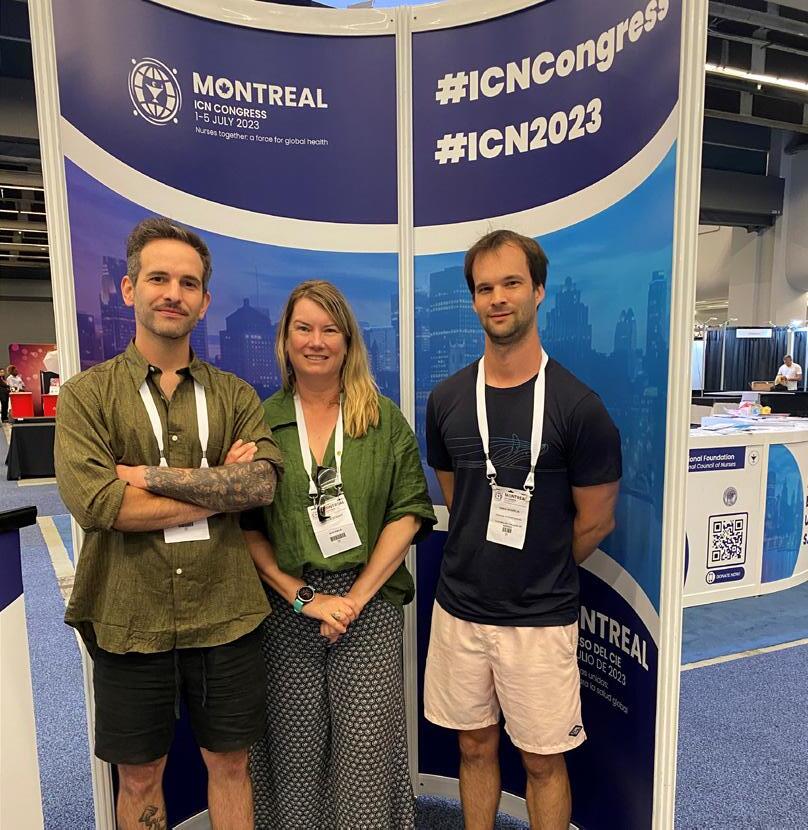

Director of ANMF’s National Policy Research Unit Dr Micah DJ Peters (adjacent) presented, evidence-based, mandated minimum staffing levels and skills mix from campaign to government policy and nurse practitioner models of care in Australian aged care: a scoping review. Both were prepared by Micah DJ Peters and Casey Marnie from the Unit.
Professor Marion Eckert, Director of the Rosemary Bryant AO Research Centre, who leads the Australasian Nursing and Midwifery Clinical Trials Network (featured in the AprilJune Vol 27, No.11 ANMJ) posed with Director of ANMF’s National Policy Research Unit Dr Micah DJ Peters (L) and The Rosemary Bryant AO Research Centre’s Research and Strategy Manager Greg Sharplin (R)
For deeper insights on these stories visit ANMJ.org. au or scan the QR code

I NTERNATIONAL COUNCIL OF N URSES CONGRESS 2023 Oct–Dec 2023 Volume 28, No. 2 15
Midwives go green in bid to reduce waste footprint
Robert Fedele

A recent ‘Green Maternity Intervention’ program led by midwives at Western Health’s Joan Kirner Women’s and Children’s Hospital in Victoria resulted in a 71% decrease in clinical waste and a 48% reduction in waste management costs.

The project, which ran throughout 2021, was funded by the Executive Director of Nursing and Midwifery at Western Health through an annual midwifery research grant. “Waste disposal is a significant cost to healthcare organisations and incorrect waste segregation, like putting unrecyclable items in recycling bins, can increase that cost,” explains Professor Linda Sweet, midwife researcher from Deakin University’s Institute for Health Transformation and Chair in Midwifery
at Western Health, who steered the project with support from the Institute’s Dr Vidanka Vasilevski, and the team of midwives.
“We wanted to understand if a midwifeled intervention on improving waste management in a maternity hospital could help increase staff knowledge and reduce waste and waste management-related costs.” While midwives value sustainable healthcare practices, factors such as high
ENVIRONMENT
16 Oct–Dec 2023 Volume 28, No. 2
Midwives at Joan Kirner Women’s and Children’s Hospital
AND HEALTHCARE
patient turnover, lack of time, inconvenient bin locations, and a perception that all waste is ‘clinical’ created challenges, Dr Vasilevski adds.
The intervention involved empowering midwife sustainability champions, education sessions, posters detailing correct waste preparation and disposal, monthly newsletters outlining key waste management strategies, and incentives to promote engagement.
Midwife and nurse Jessica Huynh was among staff who stepped up to become a Sustainability Champion because of her concerns over the amount of waste hospitals generate.

Prior to the project beginning, she says one of the biggest contributors to waste involved midwives opening up items like extra gauze, dressing packs, and IV cannulas, in preparation for obstetric emergencies, which then don’t always get used and end up in the bin. Inaccurate waste segregation was another issue, she reveals.
Staff were surveyed on their waste management knowledge and attitudes before and after the intervention.
A waste audit was also conducted at the beginning, middle, and end of the project to gauge whether the intervention resulted in improved segregation. Waste audit data found reductions in ‘clinical waste’ and that waste segregation improved from the beginning to the end of the intervention, resulting in a reduction in waste management costs.

“When tailored education is provided, effective waste segregation increases. Our findings suggest that targeted education about what items go into what bin is useful, and that the maternity staff found the instructional signage helpful,” Professor Sweet says.
“Having dedicated sustainability champions among the clinical staff – with allocated time to take on this role – was critical in encouraging behavioural change.”
Midwife Jessica says the intervention was well received among staff and resulted in noticeable change. Monthly recycling themes included PVC recycling, clinical waste and sharps disposal, reducing waste in the staff tearoom, and reducing waste from baby care and feeding. Newsletters also communicated educational facts.
“Projects like this are important for a greener future. It just baffles me how much waste we contribute in healthcare and I think that even minor changes that we tried to implement helped make a difference.”
The research team is currently evaluating the initiative and the potential to roll it out on other wards at the hospital.
For interventions to be even more successful, and permanent, Jessica believes health services must employ a dedicated person to drive sustainability practices and monitor adherence.
“The acuity at our hospital is very high and it’s very hard to educate people when they’re in a hurry. If it’s an emergency they’re just going to do what they’re going to do.
“But if I think if there was someone in our maternity space who was communicating that information all the time and driving this change it would be possible to make an even bigger difference. Us on the floor working clinically, it was sometimes hard to survey all the changes and things people were doing.”
As for advice for nurses and midwives looking to embrace healthcare sustainability in their workplaces, Jessica suggests starting with something small and trying to secure some funding to help drive the changes. Having a business case always helps as well, as hospitals and health services are always looking at their bottom lines and trying to save money.
The full research paper is published in the Journal of Advanced Nursing
Vasilevski, V., J. Huynh, A. Whitehead, C. Noble, C. Machado, and L. Sweet (2023). “The Green Maternity project: A midwife-led initiative to promote correct waste segregation on an Australian postnatal ward.” Journal of Advanced Nursing DOI: https://doi.org/10.1111/ jan.15789
Prior to the project beginning, she says one of the biggest contributors to waste involved midwives opening up items like extra gauze, dressing packs, and IV cannulas, in preparation for obstetric emergencies, which then don’t always get used and end up in the bin. Inaccurate waste segregation was another issue
ENVIRONMENT AND HEALTHCARE Oct–Dec 2023 Volume 28, No. 2 17
Midwives at Joan Kirner Women’s and Children’s Hospital
Message in a bottle: Nurse drives sustainability on the NICU ward
Robert Fedele

A Clinical Nurse Consultant on the Neonatal Intensive Care Unit (NICU) at the John Hunter Children’s Hospital in Newcastle, NSW, Justine Parsons’ passion for healthcare sustainability began with baby steps but continues to grow and grow.

Nearly three years ago, as part of targets to become carbon waste and neutral by 2030, the hospital put a call out for Sustainability Champions to help lead the way within their workspaces. Justine jumped at the opportunity.
“Working in healthcare, you see huge amounts of waste,” she explains, adding that the health system produces about 10% of all of waste across Australia.
“I was looking around my neonatal intensive care unit, and could absolutely identify many things that needed to, or could, change.
“[But] one just can’t rock up and say ‘well from now on, we’re going to start recycling or we’re going to start reusing things’. You actually need some sort of backing to be able to do that in a program. That’s why I signed up, because I thought NICU could make a bit of a difference.”
Knowing she couldn’t activate changes alone, Justine engaged some like-minded staff to help, and quickly established a Sustainability Action Group.
Canvassing the group’s ideas for improvement, numerous potential projects were put in the pipeline.
One of the biggest areas of concern identified was baby bottles. The NICU ward uses single use baby bottles, so every time
a baby is fed; the bottle is thrown in the bin. Justine did the math, uncovering that the ward was using about 100,000 plastic bottles each year, which were going straight into landfill.
Unable to reuse the bottles due to infection control issues, Justine and the team moved to establish a recycling procedure, connecting with a private company that would pick up the plastic.
“We rinsed and collected them, and we’ve been doing that now for about two years and it’s been quite successful and is hopefully saving about 90-100,000 bottles going to landfill. It now goes to a recycler and is being made into things like building materials, retaining walls, outdoor furniture, and gumboots, all kinds of stuff.”
While buoyed by the success, Justine admits that making sustainability changes like this within healthcare are far more complicated than they seem.
“There was so much red tape. The trouble with hospitals and healthcare is that they’re filled with bureaucracy, red tape, barriers, hurdles, all kinds of things. Contracts is another thing; if that’s locked in you have a lot of difficulty changing that to a more eco-friendly product but hopefully that will change as time goes on.”
Undeterred, Justine and the team have added more recycling projects to their sustainability agenda including recycling feeding syringes and nappies.
Before recycling efforts, the NICU was using about 2,000 disposable nappies per week, all non-compostable, taking 200 years to break down.
To combat the problem, Justine and the team conducted a review of compostable eco-friendly nappies on the market that would also suit the NICU’s cohort of patients. After some legwork, a suitable company was found, and the ward managed to transition to eco-friendly, compostable nappies, which instead take four weeks to break down in landfill.
In other areas, the ward is handing over its single-use stainless steel scissors, previously thrown in the bin, to a local metal recycler. While the next target is IV bags.
Each issue we will be highlighting a sustainability in health champion. To nominate yourself or someone else,
the ANMJ
Left to right, Justine Parsons, Clinical Nurse Consultant, Lily Sands, Registered Nurse, and Nicole Johns, Equipment Officer, all members of John Hunter Children’s Hospital’s Neonatal Intensive Care Unit (NICU) Sustainability Action Group.
contact
at ClimateActionForHealth @anmf.org.au
ENVIRONMENT AND HEALTHCARE 18 Oct–Dec 2023 Volume 28, No. 2
Sustainability in health champion
Healthcare sustainability tips and hints


SUSTAINABILITY AT HOME
For climate action in our home some of our activities include:
Riding my bike to the gym daily and leave the car at home, using the clothes line and not the dryer, double glazed windows in our home, we don’t run the heater above 21 degrees, turn appliance off at the wall, toilets are connected to the water tank for flushing, we reduce our plastic.
 Yvette Gladwell
Yvette Gladwell
WEDDING DECORATIONS
At my workplace, we collect Paracetamol IV bottles, remove label and give thorough clean and have used it as centrepieces for wedding tables.
 Christina Luu
Christina Luu
Sustainability tips or questions
We don’t need to reinvent the wheel to find ways to reduce our impact on the planet.
Share your sustainable at work and at home tips with the ANMJ so nurses and midwives nation-wide can do their bit to save the planet. One lucky contributor will also receive a $50 e-voucher from Koala Eco. Contact ANMJ with your tip at ClimateActionForHealth@ anmf.org.au

COFFEE POD RECYCLING

CHRISTMAS CHEER
On the ward, we save the plastic caps from antibiotic vials and with a bit of imagination we use them as Christmas decorations.
 Molly Smart
Molly Smart
BLISTER PACK SUSTAINABILITY

On our ward, I started a blister pack recycling program which are collected, sorted, weighed for data collection and sent via a pharmacy to be made into sustainable items. We also used the blister packs in our annual Christmas cheer competition in 2021, decorating our ward for patients and staff morale.
Julie Hawkins
At Lorne Community Hospital (Great Ocean Road Health, Victoria), we have enacted several recycling projects. Some of these initiatives include:
• Recycling coffee pods. In a month, we were able to recycle 8.5kg of pods.
• Our health service also uses TerraCycle Zero Waste Boxes. These are expensive, but it saves waste going into expensive biohazard bags, or into general waste.
• Use sharps bins as intended, including yellow and red receptacles.
On a nursing placement, I saw a lot of general rubbish going into sharps containers, such as used gloves, cotton balls, wound dressings, used medicine patches, and expired steritubes. Nursing management should provide clarification and use laminated poster with pictures, to discern waste.
Indra Doresamy
More sustainability resources can be found at: anmfvic.asn.au/healthenvironmentalsustainability
ENVIRONMENT AND HEALTHCARE Oct–Dec 2023 Volume 28, No. 2 19
How exceptional leadership can improve retention and ignite better nursing and midwifery care
By Kathryn Anderson
Creating better leaders is the linchpin to happier people, better organisations and societies, according to Simon Sinek, worldrenowned speaker, author, ethnographer and founder of the Optimism Company in the US.
Speaking to over 1,000 nurses at the recent International Council of Nurses Congress, Montreal, Canada, Sinek emphasised that nowhere was good leadership more essential than in healthcare. He suggested that providing good leadership would ensure better healthcare systems, quality patient care, and staff retention and recruitment.
Yet despite this need, Sinek argued that healthcare leadership styles were poor, lagging 10 to 15 years behind other industries.
“Too many hospitals are run by business people, where profit margins are the bottom line, rather than being run by people with experience in healthcare.
“And when the margin is everything, sacrifices are made in healthcare; unfortunately, those sacrifices are people. But if you sacrifice
your own people, you’re going to sacrifice healthcare,” said Sinek.
According to Sinek, the number one priority in any hospital or health organisation should be caring for the people who are taking care of the people.
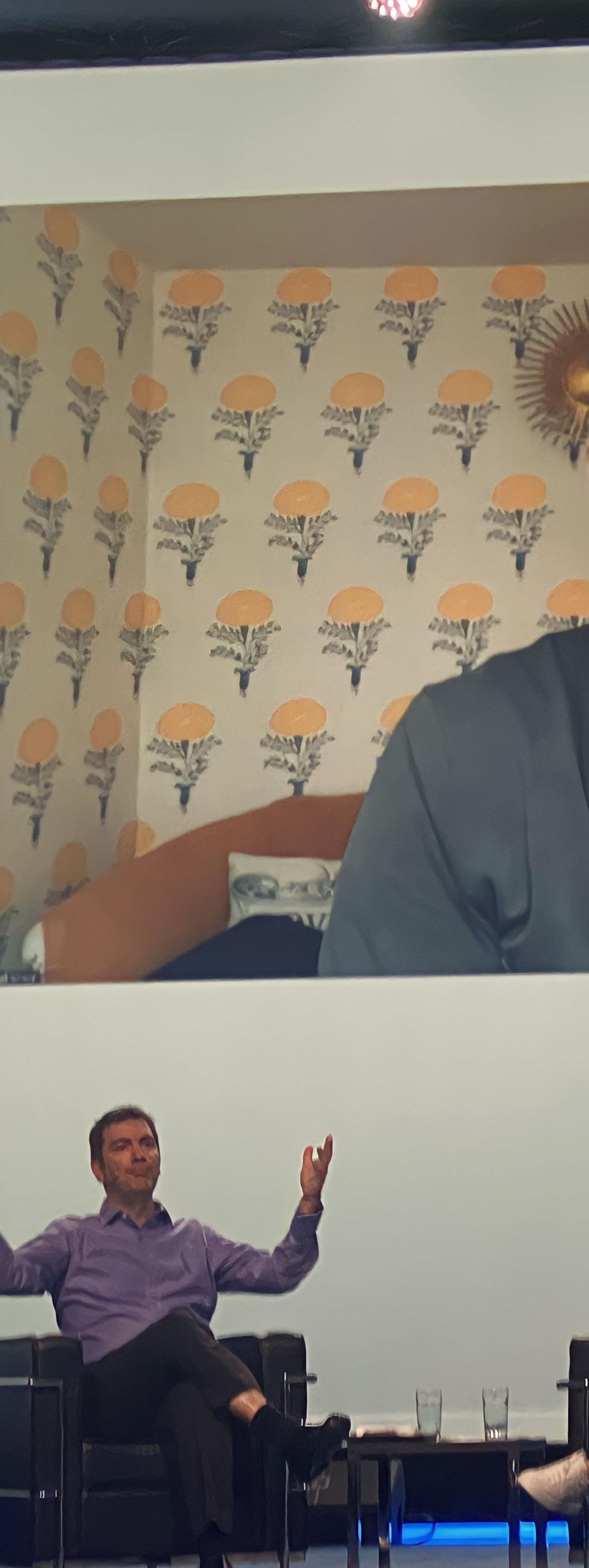
“If the people providing the care feel taken care of, all their energy goes towards the patient,” Sinek said. “But if the people doing the care feel like leadership doesn’t have their back, they’re going to be distracted trying to protect themselves from their own leaders. And guess who suffers? The patient.”
Sinek said the principles of leadership apply at all levels of nursing and midwifery management, adding that leadership was a learned skill that required practice.
“The skill set of being a leader is different than that of being a nurse.
“We know that they don’t teach leadership at nursing school. They don’t teach it at medical school. And there’s very little leadership curriculum for people to take when they work for an organisation,” Sinek said.
“In other words, if you’re not learning it, how are you going to do it? And so what I always recommend to people who are middle management or below is be the leader you wish you had.”
Sinek also recommends reading articles, books, and watching talks and having conversations with each other about how to solve difficult leadership problems.
Equally important is to learn empathy.
“I think as nurses, you probably have empathy for your patients, but do you have empathy for each other?
NURSING AND MIDWIFERY
20 Oct–Dec 2023 Volume 28, No. 2
“Too many hospitals are run by business people, where profit margins are the bottom line, rather than being run by people with experience in healthcare — and when the margin is everything, sacrifices are made in healthcare.”
LEADERSHIP
“That’s a big one. So I know you have the skill. The question is, are you practising it on each other? Are you giving each other the benefit of that?”
It’s also essential for leaders to create the right work environment. Sinek said part of that mix includes finding joy and passion in what you do.
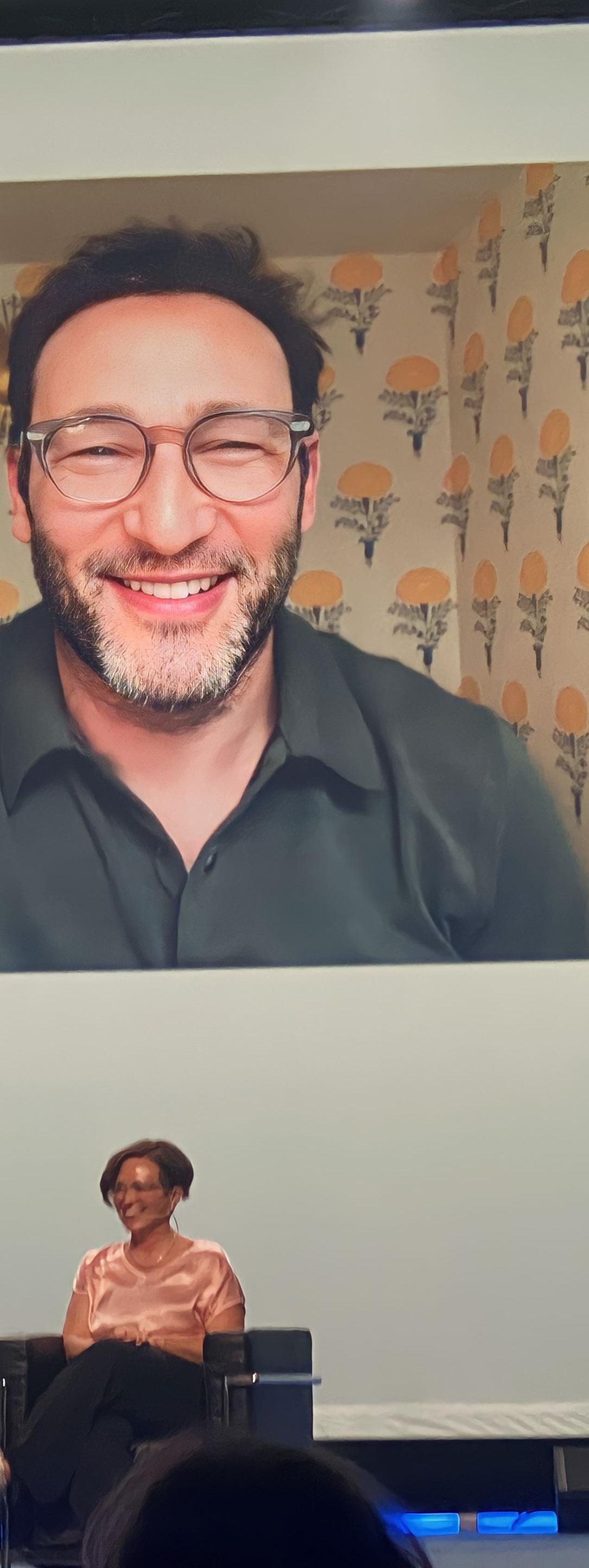
“It isn’t just the work, because you can get into a profession like nursing because you love the work, but if you work in a bad culture, you’ll stop loving it.
“I think when we take care of each other, then the patients are taken care of. When somebody’s exhausted or has made a stupid mistake, the quickest thing we can do is say to them, are you okay?
“Okay is the question we should ask of each other and be there for each other. We can still be stressed and be overworked, but for some reason, it feels intensely joyful when we know we have each other’s back. It’s a strange thing about human beings.”
According to Sinek, this does not mean being blindly positive.
“People who think they have to be blindly positive because they believe that’ll have a positive impact on their team actually find that it ends up backfiring when things are difficult.
“[People’s reaction to blind positivity is], I see my leader who’s always positive, all the time, but I’m not feeling it, so maybe it’s me because it actually makes things worse.”
Alternatively, Sinek said leaders are better to be optimistic.
“Optimism is not naive. Optimism is not blindly positive. Optimism is the undying belief that the future is bright and we can go through a difficult time.
“Optimists can say, this is the hardest
thing we’ve ever done, and I don’t know how long it’s going to last, but I know one thing for sure, we will get there. There is a light at the end of the tunnel, and if we take care of each other, we will get through this stronger than we went in - it’s the camaraderie that gets us through.”
Sinek said the reason there are bad leaders is because they don’t know what leaders do.
“They think it’s about being in charge or the final point of authority, which is just not.
“When we are young in our careers, all you have to do is be good at your career,” Sinek explained. “You just have to be good at your job, and if you’re really good at your job, they’ll start promoting you, and eventually you get promoted in a position where you’re now largely responsible for the people who do the job you used to do. And it’s our temptation to micromanage - tell them what to do because we actually are better at their job, except that’s not your job anymore.”
Sinek said good leaders create an environment where others can achieve greatness for themselves and the team.
“It’s to set each other up for success. That’s what it actually is.
“Being a parent, you want your kids to do really well. That’s the same for leaders - you want your people to do well.
“So I think we have to know what the job is as a manager before we start acting in it.”
At the end of the day, Sinek suggests remembering that we work with human beings who have fears, ambitions, egos and insecurities.
“And sometimes they’re just tired, and sometimes they’ve got stuff going on at home with their own kids and their own families, and that stress is brought to work, and all you need is one person just to break that and say, I got you.”
“I think when we take care of each other, then the patients are taken care of. When somebody’s exhausted or has made a stupid mistake, the quickest thing we can do is say to them, are you okay?”
Above: Simon Sinek
NURSING AND MIDWIFERY LEADERSHIP Oct–Dec 2023 Volume 28, No. 2 21
Below: ICN Deputy Chief Nursing Officer David Stewart and Canadian Chief Nurse Leigh Chapman
Multilingual parenting: Common concerns and how to address them
By Suzanne Grasso
In 2021-22 I observed 11 Victorian Maternal and Child Health consultations and conducted follow up interviews with 13 parents, 10 nurses and six team leaders as part of my PhD research.
Both consultations and interviews revealed an overwhelmingly supportive attitude towards raising children in their home languages. Parents I interviewed were very grateful for their nurse’s encouragement, but they also expressed a wish for more proactive, nuanced and evidence-based discussion around their multilingual parenting concerns.
COMMON LANGUAGE CONCERNS
The messaging I observed around home language use from nurses and team leaders was always ‘be consistent’, as per the government issued posters in MCH consultation rooms urging parents to ‘Speak in the language you know best’1 to their children. However, it is not always that simple, and my participants commonly wondered if they should avoid speaking a home language to their child if:
• Their child seems to have language delay in either their home language or English.
• Their child refuses to respond in the home language/only wants to speak in English.
• They mix languages with a child, especially if they have atypical development, so as not to confuse them.
• Their partner or extended family don’t understand the language, so as not to exclude them.
• They or their child receive unwanted attention/feel uncomfortable for standing out amongst their monolingual peers.
INFORMATION AND RECOMMENDED STRATEGIES TO ADDRESS THESE CONCERNS ARE AS FOLLOWS: CONFUSION AND LANGUAGE DELAY
Health professionals in my study reported varying beliefs around language delay. A systemic review of research on the topic revealed that multilingual children may
progress at a different rate and demonstrate a distinct pattern of language development from their monolingual peers, but there is no evidence to suggest that multilingual children will definitely experience language delay, nor are there set timeframes around how long it might take multilingual children to acquire language.2 Additionally, children with atypical development such as autism are not adversely affected by being raised multilingually.3 Therefore, there is no need to dissuade parents from raising their children in their home language for fear of creating confusion or contributing to language delay. In contrast, providing evidence-based reassurance can allay parents’ concerns, which is what my participants were looking for.

22 Oct–Dec 2023 Volume 28, No. 2
REFLECTION
HOME LANGUAGE USE
My participants reported fear around their child’s anticipated rejection of their home language and refusal to respond in languages other than English. Below are some time-honoured strategies4 that nurses can suggest to parents:

Minimal grasp
Adult indicates no comprehension of the child’s language choice
Expressed guess Adult asks a yes/no question using the home language
Repetition
Move on
Adult repeats the content of the child’s utterance, using the home language
Adult continues the conversation in the home language
Code switch (Mix) Adult code switches/mixes languages
MIXING LANGUAGES
Mixing languages, also known as code-switching, has traditionally been discouraged in favour of speaking in one language at all times. However, mixing is a legitimate strategy that can address and alleviate communication barriers and promote harmonious bilingualism.5 Contemporary research argues for mixing to be recognised as a practice that reflects and celebrates multilingual families, rather than discouraged as a mistake to be avoided.6
This is particularly true for multilingual parents who speak more than one home language, where the One Parent, One Language strategy, also referred to as OPOL* is not practical. As my participants attested, if parents routinely mix or code-switch between languages when they are with their co-parent, extended family, or with other social networks in the community, instructing them to exclusively speak one language with their children is unrealistic. Parents may choose to mix languages so as not to exclude others from conversation when they don’t understand the home language.7 Parents may also mix languages for expedience or ease of communication when engaging children in time critical tasks, such as finding their shoes to get out the door to school on time, which takes precedence over creating teachable moments in a home language that children may struggle to understand or respond to in a timely way.
TIME AND PLACE
Language choice can be emotionally rather than linguistically motivated,8 and is not always as straightforward as simply speaking consistently in a home language and avoiding English altogether. My participants reported that there were situations where their family’s harmony, wellbeing or safety is at stake, which is where Time and Place based language decisions are recommended.5
Time and Place involves using languages at specific times and places rather than just when at home/ outside the home. This strategy could be used during activities such as mealtimes, storytime, at the playground, in early childhood education, when visiting extended family, shopping, or attending places of worship, so that children associate a specific time or place with a language.
This strategy is especially useful for multilingual families who speak more than one home language; when grandparents or the extended family live with or have frequent contact with the family;9 or when parents or their children would rather use English when in public because they feel self-conscious, threatened, experience outright racism, or just want to fit in.10
* One parent speaks to the child exclusively in the majority language (the native or more fluent speaker) and one parent speaks to the child exclusively in the home language
References
1. State Government Victoria. 2022. Speak to your child in the language you know best. https:// www.vic.gov.au/speak-yourchild-language-you-know-best
2. Hambly H, Wren Y, McLeod S, & Roulstone S. 2013. The influence of bilingualism on speech production: A systematic review. International Journal of Language & Communication Disorders, 48(1), 1–24.
3. Bodea Hategan C, & Tala D. 2014. Issues in bilingualism in the context of autism spectrum disorders: Case study report. Romanian Journal of Experimental Applied Psychology, 5(3), 1–14.
4. Lanza E. 1992. Can bilingual twoyear-olds code-switch? Journal of Child Language, 19, 633–658.
5. De Houwer A. 2020. Harmonious bilingualism: Well-being for families in bilingual settings. In A. C. Schalley & S. A. Eisenchlas (Eds.), Handbook of Home Language Maintenance and Development (pp. 63–83). De Gruyter Mouton. https://doi. org/10.1515/9781501510175-004
6. Lanza E, & Lomeu Gomes R. 2020. Family language policy: Foundations, theoretical perspectives and critical approaches. In A. C. Schalley & S. A. Eisenchlas (Eds.), Handbook of home language maintenance and development (pp. 153–173). Mouton de Gruyter.
7. Yagmur K, & Bohnacker U. 2022. It is not the ideology but the resources: Family language policy in a comparative perspective. Journal of Multilingual and Multicultural Development, 43(9), 817–820. https://doi.org/10.1080/01434632 .2022.2053139
8. Sevinç Y, & Dewaele JM. 2018. Heritage language anxiety and majority language anxiety among Turkish immigrants in the Netherlands. International Journal of Bilingualism, 22(2), 159–179.
9. Smith-Christmas C. 2014. Being socialised into language shift: The impact of extended family members on family language policy. Journal of Multilingual and Multicultural Development, 35(5), 511–526. https://doi.org/10.1080/0 1434632.2014.882930
10. Pascual y Cabo D, & RiveraMarín G. 2021. Understanding and addressing linguistic aggressions in the Spanish heritage language classroom. Estudios Del Observatorio/ Observatorio Studies, 73, 1–30.
Author: Suzanne Grasso, BA (Hons), MA, PhD Candidate at Monash University.
Oct–Dec 2023 Volume 28, No. 2 23
REFLECTION
Positions vacant: The unintended adverse effects of ‘nurse influencers’ on nurse recruitment
By Lucy Gardam
School leavers have more career options available to them now than ever before. Female leavers who traditionally account for most of the student nurse cohort are actively being encouraged to consider careers in a wider range of fields.
With predictions of a nursing shortfall of 85,000 in Australia by 2025 and 123,000 by 2030, how do we tempt the social media generation en masse into a profession that is frequently portrayed as being badly remunerated and associated with a poor work-life balance?

While the nurses who weathered the COVID storm may find the gallows humour of ‘nurse influencers’ on social media amusing, these influencers are potentially having an enormous adverse effect on the very generation that we should actively be using social media to recruit.
Instagram, TikTok, YouTube, and Facebook have between eight and 20 million active users each per month in Australia alone. Some nurse influencers have followers numbering in the multiple millions with each new post attracting a million plus views.
Popular topics for posts include reasons not to date nurses, how poorly nurses are paid, how terrible nurses look after their shifts, how hard it is for nurses to have a social life, and how exhausting it is being a nurse.

In stark contrast, NSW Health only has 136,000 followers on Instagram and a mere 82,000 on TikTok. Their Facebook page has the largest following of their social media accounts with 992,000 followers. The number of likes for NSW Health Facebook posts ranges from 50 to 1,000 per post, with the majority attracting less than 200.
It is becoming increasingly obvious that the healthcare industry desperately needs to find a way to turn their social media image around.
Imagine seeing an advertisement for a position that says, ‘Seeking university-
qualified professional for a highly stressful position where the lives and health of clients are constantly at risk. Must be willing to work shift work, including night shifts, with no regular pattern. High risk of regular abuse by clients and their families. Overtime and double shifts are frequently required, and new graduates will be paid less than those in the engineering, banking, legal, software, mining, and technology industries.’ It sounds ridiculous, unbelievable even, yet this is exactly the image of nursing that influencers are portraying to Australian teenagers.
There is no denying that nursing is a physically demanding career. Far from being glamorous, there is a very real possibility of suffering occupational violence at the hands of patients as well as regularly being covered in bodily fluids, working through breaks, and being at a higher risk of workplace-related injury and illness. Previously, the reality of this was largely unknown to potential future nurses until they commenced studying and started their practical work placements, but the rise of social media has laid bare all the truths and realities of ‘hash tag’ daily nurse life.
Nurses who come to job interviews seeking regular, family-friendly hours in hospitals are sometimes surprised to discover that the position requires fully rotating shift work. Potential employees with childcare needs or regular weekly commitments simply don’t want to work in an organisation where the roster is only done a month in advance and changes from week to week.
Learning these truths via social media as high school students means that a nursing career is often discounted by school leavers before they complete their first university application.
It is no secret that workforce modelling predicts a large deficit in Australia’s future nursing workforce. Unsurprisingly, in the wake of a decade that has included a pandemic, nurses have been leaving the industry in droves with the percentage of registered Australian nurses and midwives working in clinical roles trending down since 2019. The nursing shortage is not just a national problem either with an estimated nine million more nurses needed worldwide by 2030.
Recently Australians have wholeheartedly embraced workplace flexibility such as working from home and family-friendly hours. New graduate nurses, who are still primarily young women, have begun to take this into account when deciding on a career
ISSUES 24 Oct–Dec 2023 Volume 28, No. 2
path and if given the choice of a familyfriendly career where you can choose your hours, pick your children up from school, and where an error doesn’t potentially endanger someone’s life, nursing is going to come off second best for the confident women of Generation Alpha. Every single time.

So, what can we do to address these issues? Those in the industry know the awful truth. There is no magic bullet or quick, easy fix. The nursing profession needs to drastically modify its approach to recruitment, retention, and workplace flexibility on multiple levels to stand any chance of thriving in the future. Change of this magnitude will take time, and time is a luxury that the profession may not have.
Investigation into the viability of more family-friendly flexible working arrangements, shared roles, and childcare facilities on-site would be worth pursuing. Higher wages across the board and implementation of wage consistency across the country may prevent the states and territories from competing for the same staff. Zero tuition fees for nurses who agree to work in specific specialities or rural locations should be considered. An apprentice wage for nursing students in their final year of study with increased hours spent on practical placements to ease the workload in tertiary hospitals.
One way we demonstrate value in society is with money. When the average wage and work-life balance for nurses is unable
to compete with other degree-qualified professionals and tradespeople then it is impossible to make nursing an attractive option for young people. What does it say about us as a society when we place a higher value on electricians and supermarket workers than our frontline nurses? The healthcare industry has always relied heavily on the altruistic nature of its workforce which may prove to be its downfall as the women who make up most of the nursing profession are taught to place a higher value on themselves.
Author:
 Lucy Gardam GradDipN, BNurs, RN is a Clinical Nurse Consultant MN (Anaesthetics and Recovery), at Royal Hobart Hospital
Lucy Gardam GradDipN, BNurs, RN is a Clinical Nurse Consultant MN (Anaesthetics and Recovery), at Royal Hobart Hospital
ISSUES Oct–Dec 2023 Volume 28, No. 2 25
Speaking up against injustice and unfairness
Speaking up against injustice and unfairness, even when others around me remain silent, is a value I hold close to my heart.

VIEWPOINT 26 Oct–Dec 2023 Volume 28, No. 2
My name is Justin Nixon (pictured), and I am a registered nurse and a whistleblower who raised concern over the unethical practices I witnessed firsthand while working in the cosmetic surgery industry.

My experience led to my participation in several media stories that shone a light on the substandard practices in many cosmetic surgery clinics, including ABC’s Four Corners episode “Cosmetic Cowboys”, 60 Minutes “A Bad Look”, and “A Worse Look”, and the 7.30 Report’s “How cosmetic surgeons are taking advantage of Medicare”.1
I recently spoke on the issue of cosmetic surgery reform at the 2023 Informa Cosmetic Surgery Safety Conference.2
At this conference, I expressed that the cosmetic surgery industry has strayed from the accepted path of good medical practice in so many ways – the lack of standards, a focus on marketing that masks poor clinical training, and the paucity of accountability among medical practitioners in this field. One of the most shocking aspects of the industry was the total devaluation of education and accredited surgical programs when it came to cosmetic surgery. Practitioners who had never completed an accredited surgical program could operate on patients with impunity and expose them to enormous risk.
I believe that any standards the cosmetic industry may once have had, have been gradually eroded. Compliance with and enforcement of legislation and guidelines has fallen by the wayside somewhere along the line.
A culture of enforcement, with patient safety as the number one priority, is not self-propagating. It is something that needs to be nurtured and fiercely safeguarded. Practitioners should ask themselves – am I complying at the minimum level required to get by or to the best of my ability? The healthcare sector is entrusted with an incredibly important responsibility - ensuring the health and wellbeing of its patients. Unethical practice drastically undermines public
VIEWPOINT Oct–Dec 2023 Volume 28, No. 2 27
I believe that any standards the cosmetic industry may once have had, have been gradually eroded. Compliance with and enforcement of legislation and guidelines has fallen by the wayside somewhere along the line.
confidence in the medical profession and hinders adequate healthcare uptake.
Practitioners must uphold their ethical standards and champion greater accountability while prioritising patient safety in all stages of their medical practice. I believe it is of the utmost importance for medical professionals to speak out when they see poor practices before it is too late, but for whatever reason, few people speak out against it when they see it.
Under-reporting of bad or dangerous practices is a well-documented and longstanding issue within the medical community, and I implore my colleagues who know about objectionable behaviour to speak out against it.
As reported by Adele Ferguson: “Between 1 July 2018 and December 2021, no mandatory reports were made by practitioners in cosmetic surgery. Whether the lack of reporting was due to doctor coercion and intimidation – something patients have experienced when they post negative reviews about their cosmetic surgeons – apathy, or a lack of confidence in Ahpra following through, needs to be investigated.”3
I am aware of several patients who presented to hospitals during this period suffering from perforated organs, necrotising wounds, and persistent infections.4 Emergency Departments and the health professionals who worked there were all too aware of the culprits but remained dangerously silent. Perhaps this lack of reporting was due to the diffusion of responsibility – where individuals in a group feel less responsible for taking action when others
are present.5 In such circumstances, an individual is less likely to assume responsibility to help or intervene, and they may believe that someone else will act or be more capable of handling the situation.5 By acknowledging the importance of individual responsibility and encouraging proactive reporting of incidents where they may occur, we can combat the effects of the diffusion of responsibility. Perhaps the medical industry would benefit from introducing a cab rank rule, where the first clinician to treat or encounter a needlessly injured patient must be the clinical to report it.
Why did I speak up when many others wouldn’t?
It took the smallest shift in my thinking. It dawned on me – who will if I don’t speak up? I attribute much of this shift to reading about the bravery of whistleblower Toni Hoffman. She blew the whistle on her colleague Jayant Patel, who was ultimately connected with some 80 deaths.6 Of 1,400 patients he operated on, 1,200 required some form of corrective procedure.7 I assume that many medical professionals that encountered Patel’s butchered patients are still haunted by the guilt of knowing they remained silent while patients were harmed. I believed that patients would die at the hands of rogue cosmetic surgeons if I didn’t blow the whistle on what I saw, and this wasn’t something I could live with.
Many of the patients I met over the course of my time in the cosmetic surgery industry were just ordinary everyday Australians. Some were not medically literate. They weren’t confident. The practitioners who operated on them sold them a dream that could never be made a reality. They spent their superannuation or life savings on these surgeries that they believed would be life-changing, and they did not deserve to be taken advantage of in this way.
Medical scandals such as this must be confronted for better outcomes in the healthcare sector. Clinicians, patients and the public alike can learn from this. Regulators should engage with those who have lived experience in the sectors, particularly the registered nurses working day in and day out in operating theatres and consulting rooms. They can provide invaluable insights into where the risks lie inside these practices and can present practical, real-world solutions for reform. Hearing from the people involved in medical scandals allows for a more comprehensive understanding of the issues and for practical suggestions on addressing them.
For more information or to submit a concern go to: https://www.ahpra.gov.au/Resources/ Cosmetic-surgery-hub.aspx
References
1. Cosmetic surgery trilogy investigation reveals horrific evidence about cosmetic surgery in Australian [Internet]. Adele Ferguson. [cited 2023 19 June]. Available from: https:// www.adeleferguson.com.au/ journalism/bad-look
2. Cosmetic Surgery Safety Conference • Informa Connect Australia [Internet]. Informa Connect Australia. [cited 2023 19 June]. Available from: https:// www.informa.com.au/event/ conference/healthcare-nursing/ cosmetic-surgery-safetyconference/
3. Ferguson A. Cosmetic surgery reforms need more than a nip and tuck [Internet]. The Sydney Morning Herald. 2022 [cited 2023 19 June]. Available from: https:// www.smh.com.au/politics/ federal/cosmetic-surgeryreforms-need-more-than-a-nipand-tuck-20220831-p5bede.html
4. Ferguson A. “What have you done to me?”: Lanzer clinic patients reveal more harrowing experiences [Internet]. The Sydney Morning Herald. 2021. Available from: https://www.smh.com.au/ business/consumer-affairs/ what-have-you-done-to-melanzer-clinic-patients-revealmore-harrowing-experiences20211109-p597ab.html
5. Diffusion of ResponsibilityEthics Unwrapped [Internet]. Ethics Unwrapped. 2013. Available from: https://ethicsunwrapped. utexas.edu/glossary/diffusionof-responsibility
6. Queensland’s “Dr Death” linked to 80 deaths [Internet]. The Age 2005. Available from: https:// www.theage.com.au/national/ queenslands-dr-death-linkedto-80-deaths-20050525-ge089n. html
7. A publication of the Australian Nursing & Midwifery Federation [Internet]. Available from: https://anmj.org.au/ wp-content/uploads/2019/05/ ANMJ-%E2%80%93-Apr-Jun-2019LO-RES-COMPLETE-correx.pdf
Author:
Justin Nixon Bachelor of Nursing (University of Tasmania) 2009, Post Grad Cert in Mental Health (University of Tasmania) 2022 works at the Acute Care Team, Southern Mental Health Tasmania
I am aware of several patients who presented to hospitals during this period suffering from perforated organs, necrotising wounds, and persistent infections.4 Emergency Departments and the health professionals who worked there were all too aware of the culprits but remained dangerously silent.
VIEWPOINT 28 Oct–Dec 2023 Volume 28, No. 2
“Between 1 July 2018 and December 2021, no mandatory reports were made by practitioners in cosmetic surgery. Whether the lack of reporting was due to doctor coercion and intimidation – something patients have experienced when they post negative reviews about their cosmetic surgeons – apathy, or a lack of confidence in Ahpra following through, needs to be investigated.”3
Micah DJ Peters
Adjunct Associate Professor Dr Micah DJ Peters is the Director of the ANMF National Policy Research Unit (Federal Office) and a Senior Research Fellow in the Rosemary Bryant AO Research Centre, UniSA Clinical & Health Sciences, University of South Australia

Recommendations for inclusive, safe, high-quality breast cancer screening for transgender people
The term transgender describes a diverse group of individuals who transcend culturally defined categories of gender.
The gender identity of transgender people differs to varying degrees from the sex they were assigned at birth. Where gender identity refers to a person’s intrinsic sense of being male, female, or an alternative gender, male or female sex is assigned at birth, usually based on the appearance of the external genitalia. For most ‘cisgender’ people, gender identity and expression are consistent with their sex assigned at birth. For transgender people, gender identity or expression differs from their sex assigned at birth.
Transgender people face barriers to accessing culturally safe, inclusive healthcare in many countries, including Australia. Along with a widespread lack of awareness of the specific needs, preferences, and experiences of transgender people, including common occurrences of discrimination, hostility, and violence, these barriers often result in inequitable healthcare experiences and outcomes, including poorer engagement with preventive healthcare and cancer screening services. Transgender people are at greater risk of later cancer diagnosis, less effective treatment, and ultimately greater risk of morbidity and mortality in comparison with cisgendered patients.
While change is slow, there is a gradually improving recognition of the need for more and better evidence to inform breast cancer screening guidelines and services for transgender people. Increased awareness of breast cancer screening evidence, best practice, and cultural safety considerations are needed to bridge the gaps in healthcare outcomes experienced by transgender people, maximise earlier detection of breast cancer, and minimise poor physical, psychological, and financial consequences of over-screening.
I recently worked with researchers in the Rosemary Bryant AO Research Centre at the University of South Australia on a scoping review to identify evidence for breast cancer risk and screening guidelines for transgender people.1 We sought to examine the potential impact of gender-affirming hormone therapy (GAHT), report on factors influencing screening decision-making and behaviours, and identify considerations for providing culturally safe, high-quality screening services.
Reference
We searched for evidence in several databases and included people of any age and ethnicity if they were defined within the source of evidence as transgender. This included people who had used gender-affirming interventions (ie. surgical or hormonal) as well as transgender people who have not had gender-affirming interventions.
As evidence in this area is currently relatively limited, we found inconclusive evidence on rates of breast cancer screening among transgender people, how rates compare with those for cisgender people, and the association between
GAHT and breast cancer risk. We did, however, identify many factors reported to negatively affect cancer screening, including socioeconomic barriers, stigma, and lack of health provider awareness and understanding of transgender health issues. We identified that transgender men who have not had chest surgery were generally recommended to undergo screening consistent with guidelines for cisgender women. Recommendations for screening transgender women were less consistent and differed based on the history of breast surgery, hormone use, and other risk factors. We observed that published recommendations for breast cancer screening of transgender people were often inconsistent and not based on empirical evidence, highlighting the need for more high-quality studies. Further investment and research are needed to consolidate existing and new evidence into clinical practice guidelines. Despite the overall limitations of the literature, we were able to develop a series of recommendations to help guide clinicians and decision makers in this space:1
RECOMMENDATIONS
1. Provide staff education and training on culturally sensitive and inclusive care to improve transgender health knowledge, awareness, and cultural competencies. This should include guidance on interactions with transgender patients as well as information about transgender-related health issues, terminology, and resources.
2. Examine how existing breast screening services may discriminate against or exclude transgender patients and modify organisational policies and procedures to be inclusive.
3. Ensure documentation allows patients to self-disclose their sex assigned at birth, gender identity, preferred name, preferred pronoun, and medical history.
4. Ensure that patients’ preferred names and pronouns are used consistently in correspondence, electronic health records, and by all staff.
5. Make facilities welcoming and inclusive by avoiding gendered language and signage, ensuring access to gender neutral bathrooms, and displaying signs of inclusion and/or non-discrimination.
1. Ramsey I, Kennedy K, Sharplin G, Eckert M, Peters MDJ. Culturally safe, appropriate, and high-quality breast cancer screening for transgender people: A scoping review. Int J Transgend Health. 2023;13;24(2):174-94.
RESEARCH & P OLICY Oct–Dec 2023 Volume 28, No. 2 29
The resource we need but hope never to use- Pandemic Quarantine Facility Guide
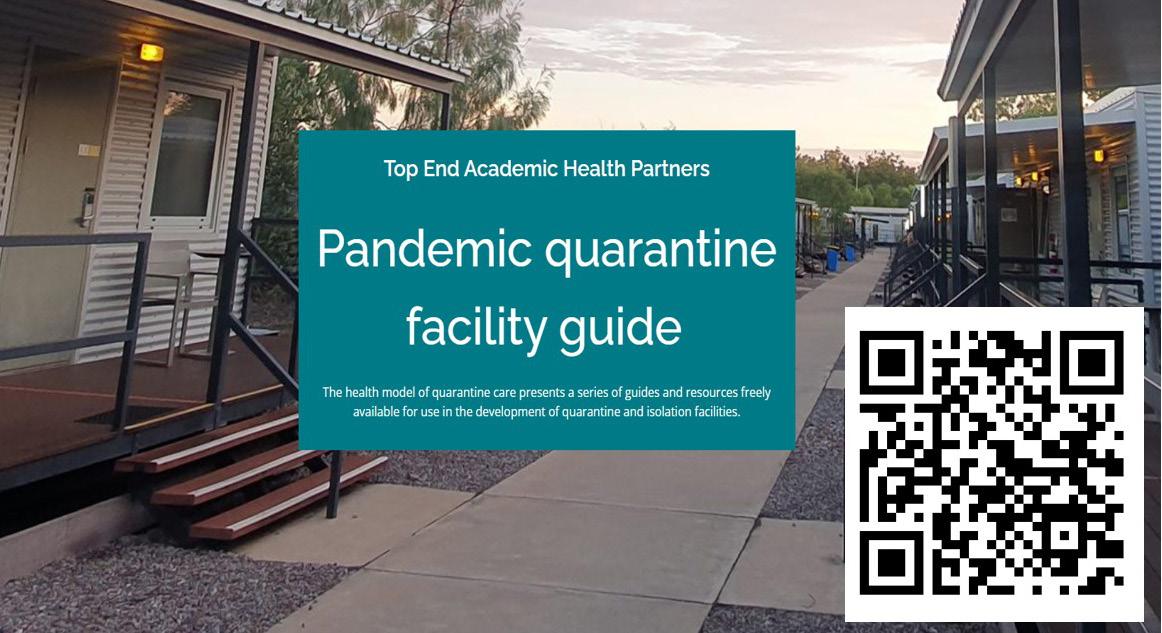 By Angela Sheedy
By Angela Sheedy
For any nurses working on the frontline early in the COVID-19 pandemic, the health system was evidently unprepared to respond to such a large-scale event.
The introduction of quarantine facilities presented an opportunity to reduce the impact on acute care services whilst keeping the wider community safe. However, many facilities faced challenges in meeting infection prevention and control management whilst maintaining residents’ health and wellbeing.1,2
In Darwin, the Centre for National Resilience, Howard Springs Quarantine Facility (HSQF) emerged as a leading quarantine service able to host over 30,000 residents across humanitarian, repatriation, domestic, and international travellers whilst maintaining a record of no COVID-19 transmission between staff and residents.3
Situated in regional Darwin, the quarantine service was led by health professionals who developed many innovative approaches to resident care based on a primary health model. Most of the HSQF workforce consisted of nurses across all levels, including student nurses employed through an assistant in nursing (AIN) position. During the pandemic, the AIN presented a new workforce role established in the Northern Territory to build the health workforce capacity. Now, with experts predicting the next pandemic as inevitable, this project sought to determine those aspects of HSQF workforce and service delivery which contributed to the success of the site and present these in an open-access web resource.
“It is better to be proactive and have a resource ready for pandemic preparedness than fall back to a reactive response where resources and workforces can fall short.”
The project received a Medical Research Future Fund grant with the Top End Academic Health Partners as part of the Translational Research to Improve Health Outcomes [grant number RARUR000143]. After analysing data and information from the site’s operational period, reviewing resident surveys conducted onsite, and running staff and leadership team surveys, a number of original actions and processes were identified. These included innovative workforce models with both health and non-health staff, nursing leadership strategies to support workforce and resident health and wellbeing, core elements vital to resident care in quarantine and public health strategies to manage large-scale resident care operations (noting HSQF often cared for 2,000 residents onsite at any time).
Pandemic toolbox webpage QR code REFLECTION 30 Oct–Dec 2023 Volume 28, No. 2
These outcomes contributed to the identification of six quarantine service areas to base a quarantine toolbox.4
SIX QUARANTINE SERVICE AREAS
1. Processes, infrastructure and communicationLogistical and environmental considerations for a quarantine service. Standard operations of practice to establish and maintain a quarantine facility.

2. Infection prevention and control- disease transmission, personal protective equipment, viral screening, vaccination, cleaning, resources and strategies.
3. Health workforce- leadership and staff team models, recruitment, education and training, and staff management and support.
4. Resident care-resident-centred model of care, resident arrival, management and exit processes.
5. Health, wellbeing and clinical carehealth and wellness strategies for a primary health model in quarantine.
6. Northern Territory COVID-19 responseNorthern Territory pandemic response teams, Chief Health Officer directions.4
The resulting toolbox offers evidence-based strategies to model quarantine service delivery with a residentcentred approach. This places the resident as central to the quarantine service design and processes
ensuring their health and wellbeing are prioritised. The guides present everything from workforce models and orientation session delivery to infrastructure recommendations (such as ventilation requirements) and communication strategies. As quoted by Professor Dianne Stephens, a key contributor to the resource development:
Too often in health, we fail to capture and translate important lessons learned during health emergencies into guidance for the future – we hope this project reflects our lived experience at the Howard Springs Quarantine Facility in a way that is helpful the next time we need to stand up quarantine facilities in this country and beyond our borders.4
The Pandemic Quarantine Facility Guide has now been completed and is available for health departments to access and adapt as required. Even though guides are based on COVID-19 experiences, it is recognised that many resources within the toolbox can be translated for use in any disaster or emergency event which requires the initiation of quarantine and isolation. Importantly it highlights the nurse’s role during the pandemic and demonstrates the versatility of this workforce in an emergency response. Access the toolbox here: https://quarantine- guide.cdu.edu.au/
References:
1. Inquiry, C-HQ. 2020. COVID-19 Hotel Quarantine Inquiry, Final Report and Recommendations, Parl paper no. 191 (2018–2020) ISBN 978-0-6450016-1-7). V. G. P. D. 2020. https://www. parliament.vic.gov.au/file_ uploads/0387_RC_Covid-19_ Final_Report_Volume_1_v21_ Digital_77QpLQH8.pdf
2. Australian Government, DoHaAC. 2020. National Review of Hotel Quarantine. Australia: Department of Health and Aged Care. https://www.health. gov.au/resources/publications/ national-review-of-hotelquarantine?language=en
3. Curtis SJ, Trewin A, McDermott K, Were K, Walczynski T, Notaras L, & Walsh N. 2022. An outdoor hotel quarantine facility model in Australia: best practice with optimal outcomes. Australian and New Zealand Journal of Public Health, 46(5), 633-639. https://doi. org/10.1111/1753-6405.13275
4. Charles Darwin University. 2023. Pandemic Quarantine Facility Guide. Top End Academic Health Partners. https:// quarantine-guide.cdu.edu.au/
Author:
Angela Sheedy is a Senior Research Officer at CDU Menzies School of Medicine, Faculty of Health, Northern Territory, Australia
During PPE training 2021
REFLECTION Oct–Dec 2023 Volume 28, No. 2 31
Nurse Practitionerled services supporting optimisation of treatment for depression in primary care
 By Rasa Kabaila
By Rasa Kabaila
CLINICAL
32 Oct–Dec 2023 Volume 28, No. 2
UPDATE
The Australian Institute of Health and Welfare2 reports that spending on mental health services in Australia increased from 9.3 billion in 2016-2017 to 11.6 billion in 2020-2021.

The goal of treatment for depression is complete remission from depressive symptoms. Achieving remission is crucial as residual depressive symptoms are the strongest predictor of early relapse and are strongly associated with poorer functional outcomes.3 Achieving earlier remission from a depressive episode may be associated with reductions in the considerable indirect economic costs of the condition.4
However, STAR*D, the largest clinical trial examining outcomes for treatments of depression, highlighted that only a third of patients achieved remission on firstline treatments and up to four successive trials of different regimes were required to double the remission rate.5
However, clinicians often treat depression sub-optimally.6 Where treatment is initiated, clinicians often wait until at least six weeks prior to attempting optimisation of dosages or changing medications, with patients sometimes remaining on ineffective or even harmful treatments for six weeks or longer.6
Extended periods of suboptimal treatment result in a lost opportunity to achieving earlier remission and functional recovery, and thereby reduce the direct and indirect economic cost of depression.6
Optimising treatment may take many months, with the lost opportunity of potentially achieving earlier remission and functional recovery, and a failure to realise the potential indirect economic savings for society.6
In order to address this need for timely and effective treatment for depression and anxiety, OptiMA2 was introduced. OptiMA2 was a pilot, mixed methods, service implementation study that used a novel software, Psynary, to support a Nurse Practitioner (NP)-led depression treatment optimisation care pathway, in a NSW primary care setting.7 The focus group data from clients and GPs involved in OptiMA2 demonstrated that OptiMA2 was a safe and effective care pathway.7
This study was completed in 2021. OptiMA3 ‘stress-tested’ this care pathway with larger client numbers. OptiMA3 focused on quantitative outcomes, where machine learning was used to predict outcomes. Results of OptiMA3 are discussed in this paper.
STUDY PROCESS:
A naturalistic cohort follow-up study was undertaken to compare clinical outcomes of the Nurse Practitioner (NP)led depression treatment optimisation care pathway to published literature and other parallel OptiMA studies. The primary outcome prediction is that over the course of three months of treatment optimisation will achieve an equivalent increase in cumulative remission rates seen in the STAR*D study (which reports 12-month outcomes of 37% after first line treatment and 67% after four iterations of treatment).
Primary outcomes include quantitative clinical outcomes measured by Psynary, which covers all the symptom domains associated with depressive and anxiety disorders. The R8 Depression scale is used within Psynary to measure depression symptom severity and establish remission.8
Depression is often a recurrent or chronic condition across a person’s lifespan.1 As well as the direct impact on health, depression has substantive direct and indirect costs for the individual, their families and society.
The goal of treatment for depression is complete remission from depressive symptoms. Achieving remission is crucial as residual depressive symptoms are the strongest predictor of early relapse and are strongly associated with poorer functional outcomes.3
CLINICAL UPDATE Oct–Dec 2023 Volume 28, No. 2 33
Achieving earlier remission from a depressive episode may be associated with reductions in the considerable indirect economic costs of the condition.4
This measure was validated in OptiMA1 in a dataset from sites in New Zealand and Japan.8 The R8 Depression scale is calibrated for remission rates of mild, moderate and severe depression, which in turn map onto NICE guidelines for staging interventions for depression.8 Psynary also includes the PHQ-9 scale used widely to identify and stratify presentations of depression in primary care.9 There are also measures of patientand clinician-rated global improvement, alcohol and illicit drug use over time, side-effect burden from treatments, patient treatment adherence, subjective cognitive functioning and progress towards patientdefined outcome goals.
ANALYSIS:
We calculated a Kaplan-Myer curve with confidence intervals for readmission using the survival package in R. 10,11
OUTCOMES AND RECOMMENDATIONS:
In OptiMA we defined remission as ≤17 on the R8 Depression scale and found remission at 12 weeks to be 46% (95% confidence interval: 31–58%). The remission rate was 35% (95%CI: 21-64%) at eight weeks.

As a comparison, STAR*D used two measures of remission: HAM-D (Hamilton 1967) with which they measured a remission rate of 33% at 12 weeks, and the Quick Inventory of Depressive Symptomatology-self- Report (QIDSSR), where, for a score of ≤5, they found a remission rate of 27% at 12 weeks. As different instruments were used to define remission,
these are not directly comparable to OptiMA, however the high rate of remission reported in OptiMA is encouraging.
IMPLEMENTATION AND EVALUATION:
The OptiMA2 and OptiMA3 studies demonstrated the effectiveness of the Nurse Practitioner (NP)-led depression treatment optimisation care pathway in providing a timely and effective depression and anxiety treatment. Because of these studies, Rasa Kabaila continues to provide depression and anxiety treatment using the OptiMA methodology in her practice as a Nurse Practitioner. She sees a broad array of people in the community, and aims to reduce barriers to accessing care. She sees people face to face where possible or alternatively delivers care via telehealth, which is particularly effective for people living in rural areas where they have difficulties accessing care.
ACKNOWLEDGMENTS:
I’d like to express a big thank you to Dr Andrew Kissane and to Dr Richard Tranter, staff specialists in Psychiatriy, founders of Psynary and OptiMA chief investigators, for their support and collaboration in OptiMA3
References:
1. Judd LL, Akiskal HS, Maser JD, Zeller PJ, Endicott J, Coryell W, Paulus MP, Kunovac JL, Leon AC, Mueller TI, Rice JA, & Keller MB. 1998. A prospective 12-year study of subsyndromal and syndromal depressive symptoms in unipolar major depressive disorders. Archives of General Psychiatry, 55(8), 694–700. https://doi.org/10.1001/archpsyc.55.8.694
2. Australian Institute of Health and Welfare (AIHW). 2023. Indirect costs of depression and other mental and behavioural disorders for Australia from 2015 to 2030. Retrieved from: https://www.ncbi.nlm.nih.gov/pmc/articles/ PMC6520529/
3. Tranter R, O’Donovan C, Chandarana P, & Kennedy S. 2002. Prevalence and outcome of partial remission in depression. Journal of Psychiatry & Neuroscience: JPN, 27(4), 241–247.
4. Wade AG, Fernández JL, François C, Hansen K, Danchenko N, & Despiegel N. 2008. Escitalopram and duloxetine in major depressive disorder: a pharmacoeconomic comparison using UK cost data. PharmacoEconomics, 26(11), 969–981. https://doi.org/10.2165/00019053-200826110-00008
5. Rush AJ, Trivedi MH, Wisniewski SR, Nierenberg AA, Stewart JW, Warden D, Niederehe G, Thase ME, Lavori PW, Lebowitz BD, McGrath PJ, Rosenbaum JF, Sackeim HA, Kupfer DJ, Luther J, & Fava M. 2006. Acute and longer-term outcomes in depressed outpatients requiring one or several treatment steps: a STAR*D report. The American Journal of Psychiatry, 163(11), 1905–1917. https://doi.org/10.1176/ajp.2006.163.11.1905
6. Lecrubier Y. 2007. Widespread underrecognition and undertreatment of anxiety and mood disorders: results from 3 European studies. The Journal of Clinical Psychiatry, 68 Suppl 2, 36–41.
7. Kabaila R. 2021. Implementation of an Innovative Nurse led Service to Support Depression in Primary Care. Australian Nursing and Midwifery Journal 27 (2), 22-23.
8. Takao Y, Figueroa E, Berna KFJ, Jo Y, Kissane LA, Yoshimura K, Tranter R, & Porter RJ. 2021. Validation of a novel online depression symptom severity rating scale: the R8 Depression. Health and Quality of Life Outcomes, 19 (1), 163. https://doi.org/10.1186/s12955-020-01654-z.
9. Kroenke K, Spitzer RL, & Williams JB. 2001. The PHQ-9: validity of a brief depression severity measure. Journal of General Internal Medicine, 16(9), 606–613. https://doi. org/10.1046/j.1525-1497.2001.016009606.x
10. Terry M, Therneau T, Grambsch PM. 2000. Modeling Survival Data: Extending the Cox Model. Springer, New York. ISBN 0-387-98784-3
11. R Core Team. 2020. R: A language and environment for statistical computing. R Foundation for Statistical Computing. Retrieved from: https://www.R-project.org/.
12. Rush AJ, Trivedi MH, Wisniewski SR, Nierenberg AA, Stewart JW, Warden D, Niederehe G, Thase ME, Lavori PW, Lebowitz BD, McGrath PJ, Rosenbaum JF, Sackeim HA, Kupfer DJ, Luther J, & Fava M. 2006. Acute and longer-term outcomes in depressed outpatients requiring one or several treatment steps: a STAR*D report. The American Journal of Psychiatry, 163(11), 1905–1917. https://doi.org/10.1176/ajp.2006.163.11.1905
13. Therneau T & Grambsch PM. 2000. Modeling Survival Data: Extending the Cox Model. Springer: New York.
Author:
Rasa Kabaila is a Nurse Practitioner running her own holistic service - Broadleaf in Port Macquarie New South Wales, Australia
Also, a huge thank you to Dr Gordana Popovic, Research Fellow in the School of Mathematics and Statistics UNSW and Dr Emma Schofield, lecturer with the UNSW School of Clinical Medicine, Rural Clinical Campus and the UNSW medical students Aidan Cousins and Scott Flemming for their valuable knowledge, support and assistance with study design and data analysis thank you also to the Mid North Coast Local Health District who sponsored OptiMA3
Legend: Estimated remission rate (red line) and 95% CI (pink shaded) from zero to 20 weeks for all patients.
CLINICAL UPDATE 34 Oct–Dec 2023 Volume 28, No. 2
Daniel Crute Federal Industrial Officer

Psychosocial hazards in the spotlight
Work health and safety (WHS) laws are largely harmonised across Australia through a set of uniform laws (the model WHS laws). All states and territories other than Victoria have implemented the model WHS laws. Victoria has similar duties under its Occupational Health and Safety Act 2004 (Vic).
Under these WHS laws, a person conducting a business or undertaking (PCBU) must manage the risk of psychosocial hazards in the workplace. For workers, the main PCBU is usually their employer.
A psychological hazard is a hazard that arises from or in relation to the design or management of work, the working environment, plant at a workplace, or workplace interactions or behaviours that may cause psychological and/or physical harm. Workplace psychosocial hazards are related to the psychological and social conditions of a workplace rather than just the physical conditions.
Common psychosocial hazards at work include (but are not limited to) low job control, poor organisational change management, remote or isolated work, poor physical environment, violence and aggression, bullying, harassment (including sexual harassment), and poor workplace relationships and interactions. Violence, bullying and harassment are, unfortunately, some of the more common psychosocial hazards that ANMF members face.
In December 2018, Marie Boland published the Review of the Model Work Health and Safety Laws Final Report (Boland Report) at the request of Safe Work Australia. Its second of 34 recommendations was that regulations deal with psychological health. This recommendation was widely supported by the Australian union movement, leading WHS academics and WHS professional bodies.
a code of practice, which came into operation on 28 May 2021. The current codes include:
• Code of Practice: Managing psychosocial hazards at work (NSW)
• Managing the risk of psychosocial hazards at work Code of Practice 2022 (Queensland)
• Model Code of Practice: Managing psychosocial hazards at work (NT and Tasmania)
• Code of Practice: Psychosocial hazards in the workplace (Western Australia)
These codes of practice are especially useful for employers and workers because they provide practical examples of hazards and ways to address them. An example scenario in the NSW code deals with a situation in a healthcare setting where an emergency department in a public hospital triages people requiring mental healthcare.2 It identifies the psychosocial hazards as role overload, exposure to traumatic events and occupational violence. It then suggests controls, reviews, and improves mechanisms based on the NSW code.
References
1. M. Boland, independent reviewer, Review of the model work health and safety laws final report December 2018 (p34) https://www.safeworkaustralia. gov.au/system/files/ documents/1902/review_of_ the_model_whs_laws_final_ report_0.pdf
2. Code of Practice Managing Psychosocial Hazards at Work, (Appendix A, Scenario 1) SAFEWORK NSW, May 2021 www.safework.nsw. gov.au/__data/assets/ pdf_file/0004/983353/ Code-of-Practice_Managingpsychosocial-hazards.pdf
3. Managing the risk of psychosocial hazards at work Code of Practice 2022 (at 3.3.2), Work place Health and Safety Queensland www.worksafe. qld.gov.au/data/assets/pdf_ file/0025/104857/managing-therisk-of-psychosocial-hazards-atwork-code-of-practice.pdf
The Boland Report identified that whilst bullying and harassment were widely recognised as psychosocial hazards, these psychosocial hazards were often dealt with on an individual basis, with “…diversion into grievance processes and the removal of the original basis for the complaint from any assessment of the broader WHS organisational safety culture.”1
The majority of states and territories have now implemented regulations concerning psychosocial hazards. However, Victoria, the Australian Capital Territory and South Australia are yet to do so. The Commonwealth government has also yet to finalise a code with respect to those workers in the Comcare WHS scheme (Australian Public Service [APS] and a few private sector employers).
Jurisdictions that have updated their WHS laws to specifically include psychosocial hazards have also developed codes of practice. NSW was the first to have
The codes are not the same in content. For example, the Queensland code mandates that the hierarchy of controls must be followed if it is not reasonably practicable to eliminate psychosocial risk.3 Other codes do not do this. The hierarchy of control is a detailed system for controlling WHS risks in the workplace. It ranks risk controls from the highest level of protection and reliability to the lowest and least reliable protection.
PCBUs are legally obliged to consult with workers when managing psychosocial hazards. A PCBU must consult workers who carry out work for them and their health and safety representative(s) (HSR(s). Consultation involves sharing information, giving affected workers reasonable opportunities to express views, taking those views into account before making decisions on WHS matters, and advising workers of the consultation’s outcomes in a timely and appropriate manner.
ANMF members working in jurisdictions with a psychosocial hazards code of practice should familiarise themselves with the content of the code. Bring the code to the attention of your HSR and/or your health and safety committee. The code could be an important new tool to assist in making your workplace safer.
INDUSTRIAL Oct–Dec 2023 Volume 28, No. 2 35
Julianne Bryce Senior Federal Professional Officer
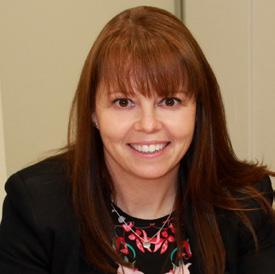
NPs made to wait
After more than a decade of lobbying and advocacy, the May Federal Budget saw the introduction of funding for long-awaited reforms for NPs and for, most importantly, the people for whom they provide care. But the joy felt following the Budget announcement was short-lived, as NPs, yet again, have been made to wait.
Health Minister Mark Butler announced there would be $46.8 million to fund Medicare rebates for care provided by NPs, and that the rebate would increase by 30%. A great outcome, given the recommendation for a significant increase to the rebate from the NP Reference Group to the MBS Taskforce under the previous government, was ignored.
Listed as a 2022-23 budget initiative, this increase was expected to start in July.
But 1 July 2023 came and went with no explanation for the delay.
It wasn’t until the Commonwealth Chief Nursing and Midwifery Officer’s newsletter was circulated that peak nursing groups became aware that the rebate increase wouldn’t come into effect until 1 July 2024, a year later than promised.
As devastating as this delay is for NPs, people trying to access healthcare, particularly disadvantaged and marginalised people, will be impacted most.
This is not new territory for NPs. NP roles have been limited in growth and number by both policy and funding restrictions since their inception.
Once again, delays to real, meaningful reform to a health system under immense strain right now will impact the health and wellbeing of people seeking care.
The ANMF, along with our colleagues at nursing colleges with NP members, wrote to the Federal Health Minister and Assistant Health Ministers, Mark Butler, Ged Kearney and Emma McBride, to voice our deep concern and disappointment that this increase is not being implemented as a matter of urgency.
It was highlighted that delaying the rebate rise would cause undue disadvantage to people seeking access to NP care and affect the sustainable delivery of services. The increased pressure caused by the current cost of living crisis makes this particularly significant. This is of greatest concern, where an NP may be the only locally accessible primary healthcare provider.
We also noted that other MBS budget announcements, namely the increase in bulk billing incentive for GPs, are being prioritised for implementation in November 2023, and called for the rebate increase for NPs to be treated with the same urgency.
As a result, the ANMF, ACNP, CATSINaM, CRANAplus, APNA and the ACMHN met with Minister Butler at Parliament House in August. Collectively, we conveyed our dismay and frustration, and that of our members, about the delay. We sought to understand the reasons for the long wait and requested that the date for implementation be aligned with that of our medical colleagues, November 2023.
Nevertheless, we were told the rebate increase is part of a package of reforms and that there will be no possibility of earlier implementation. Feedback already received from the Department of Health and Aged Care was that they need advance notice, specifically a minimum of 12 months, to adjust even an existing item number and that all changes must be sent to the AMA at least three months prior. What’s that about? These rules don’t appear to have applied to the MBS item changes for GPs. This bureaucratic go-slow has ensured that this NP 2022-23 Budget initiative won’t even begin until midway through 2024.
Policy mechanisms to limit access to NP services are harming an already underutilised and undervalued workforce, and reducing healthcare access to those most in need, particularly disadvantaged and marginalised populations. In the interests of equality, mechanisms to improve access to MBS items for NP services requires urgent action.
Following, the meeting with Minister Butler, the group also briefed Minister Kearney about our concerns with the implementation delay for the rebate. The ANMF will continue our advocacy for change at every opportunity and every level of government.
For too long, NPs have been made to wait to provide the care they know they can deliver. These NP reforms cannot come soon enough for those who are desperate for access to care right now.
It’s time for the Government to recognise NPs true worth and how crucial they are to improving access to quality care for people when and where they need it, particularly in rural and remote areas, where crippling workforce shortages continue to impact healthcare.
PROFESSIONAL 36 Oct–Dec 2023 Volume 28, No. 2
Nursing and midwifery education: Part 1

Oct–Dec 2023 Volume 28, No. 2 37 FOCUS
Digital professionalism includes using artificial intelligence (AI) for safety and quality outcomes
By Carey Mather, Allison James and Tracy Douglas
How we perform our jobs and the choice of resources we use to inform our decisions are constantly changing.
Graduates will now use artificial intelligence (AI) tools in their future careers, and it needs to be embedded into curricula and linked to student graduate attributes.
Consequently, as educators, we need to model safety and quality while using AI on campus, in clinical roles and in other professional environments. AI is a component of digital professionalism. Regardless of what we study, digital professionalism is required. Educators need to model and promote digital identity, prepare students for proficiency in digital literacy and be able to model digital professionalism, which is a component of Domain 1 of the National Nursing and Midwifery Digital Capability Framework.1
and midwifery graduate work readiness for safety and quality outcomes in healthcare environments. AI-influenced education is transforming and invigorating traditional teaching strategies and energising class discussion. This new way of working can invigorate online, distance on - and off-campus learning experiences for nursing and midwifery students. Students can engage in disciplinary knowledge through AI and connect that knowledge to skills and critical thinking applicable to their future workplaces.3
For some educators, returning to in-class tests to manage the use of AI and academic integrity may seem tempting. However, AI is a powerful opportunity to rethink and design assessments that focus on what students need to know to be successful in the future and prepare to become work-ready graduates. As educators and health professionals, we have a responsibility to protect against issues that may arise from integrating AI into educational experiences. As we learn more about the potential of AI, we have become aware of new risks to safety and quality outcomes. AI can generate information that is inappropriate or incorrect information. AI can also be accompanied by emergent data privacy, security, and confidentiality risks. Data privacy and confidentiality breaches need careful educative strategies. Preparing graduates includes cautioning about placing
References
1. Australian Digital Health Agency, 2020. National Nursing and Midwifery Digital Health Capability Framework. Australian Government: Sydney, NSW. National Nursing and Midwifery Digital Health Capability Framework, v1.0, available at nursing-midwifery. digitalhealth.gov.au.

2. Mather C, Douglas T, O’Brien J. Identifying opportunities to integrate digital professionalism into curriculum: A comparison of social media use by health profession students at an Australian University in 2013 and 2016. Informatics. 2017; 4(2):10. https://doi.org/10.3390/ informatics4020010.
3. Douglas T, James A, Mather C, Reimagining the role of discussion boards to engage richly diverse students and improve graduate success, Australia-ASEAN Academics Forum, June 2023.
4. Zhang A. https://www. hrmonline.com.au/dataprotection/three-legal-riskschatgpt-work/ (Accessed 21 July 2023).
Authors:
Figure 1 National Nursing and Midwifery Digital Capability Framework: Domain 1 Digital professionalism1
Our educative experiences enable us to provide students with personalised, flexible, and adaptable learning experiences. When guided to use AI, students receive immediate feedback, which they have ‘shaped’ to inform their needs.
As educators, we influence and scaffold individual, team, and collective learning.2 AI can be a study buddy, tutor, and idea generator in classrooms. However, more importantly, it can improve nurse
sensitive, identifiable, or confidential information into AI tools where information can be harvested and reused, as it is a potential breach of digital professionalism. Furthermore, even though AI tools are trained on large amounts of data, bias can be introduced by those who build the tools, as developers choose which information is used to train AI algorithms. Other AI tools have limits, such as date ranges or the capacity to link data logically, as AI
tools cannot rationalise or think logically as humans or clinicians can.4
While AI tools can augment learning and assist with efficient resource use, they will not replace nursing and nursing care. In this evolving world of AI, educators need to be vigilant and coach students to be digitally literate, so they can be work-ready at graduation to ensure safety and quality outcomes within healthcare environments.
Dr Carey Mather RN BSc G.Cert ULT G.Cert Creative Media Tech, G.Cert Research P.Grad Dip Hlth Prom, MPH, PhD, MACN, FAIDH, FHEA, Senior Lecturer, Australian Institute of Health Service Management, University of Tasmania, Launceston, Tasmania, Australia.
Allison James B.Bus (Dist) (UCCQ), MBA (CQU), Grad Dip FET (USQ). Senior Lecturer, Australian Maritime College, Centre for Maritime & Logistics Management, University of Tasmania, Launceston, Tasmania, Australia.
Tracy Douglas SFHEA, BSc (Hons), MMEdSc, GradCertULT. Senior lecturer, School of Health Sciences, University of Tasmania, Launceston, Tasmania, Australia.
FOCUS 38 Oct–Dec 2023 Volume 28, No. 2
The use of 3D animation to enhance midwifery education
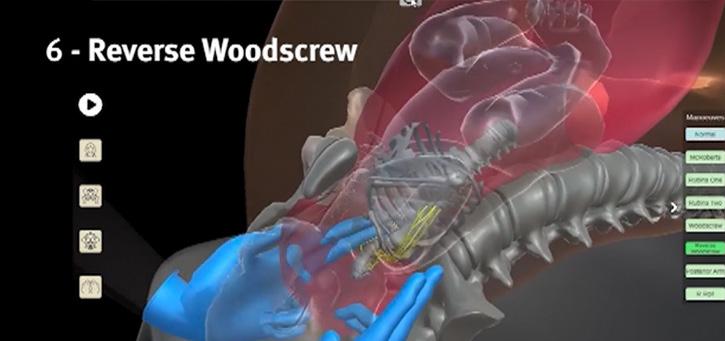 By Kirsty McLeod, Lisa Peberdy, Mia McLanders, Megan Barker and Lauren Kearney
By Kirsty McLeod, Lisa Peberdy, Mia McLanders, Megan Barker and Lauren Kearney
BACKGROUND
Two-dimensional models (2D) (eg. pictures in textbooks) have traditionally been used to teach and guide complex clinical procedures. However, research suggests that introducing threedimensional (3D) models can reduce workload and improve performance in clinical skills training.1
3D materials provide additional spatial information and have been found to assist in developing stronger mental models of internal anatomical structures and functions than 2D materials.1,2 3D displays have also been found to support the development of minimally invasive surgical skills by helping to overcome visualisation and psychomotor challenges.3
OVERVIEW OF EXISTING 3D ASSETS
Using a traditional apprenticeship-style approach to train high-risk and uncommon clinical procedures can jeopardise patient safety. Simulation-based training mitigates this risk by allowing clinicians to practice repeatedly in a safe space. However, accessing simulation-based training can be particularly difficult for rural and remote clinicians, and it often requires extensive time, resources, and financial commitments.4
A market scan and informal training needs analysis revealed the limitations of current teaching aids in simulation-based shoulder dystocia and breech birth training - specifically, the limitations of representing complex manoeuvres in static illustrations and pictures.
The Clinical Skills Development Service (CSDS), Metro North Health Service, developed two online 3D animation tools to guide the training of complex manoeuvres for the management of shoulder dystocia and breech birth. The tools were developed to support knowledge acquisition and skill transfer to practice, and to aid learning by providing additional visuospatial cues. A multidisciplinary team was formed and comprised a clinical midwife consultant, obstetrician and gynaecology consultant, 3D developer, digital advisor, and evaluation officer. The 3D animation tools were sent to four midwifery subject-matter experts (SMEs) for review.
RESULTS
SMEs strongly agreed (75%) or agreed (25%) that the 3D animation was a valuable training tool for students learning how to manage shoulder dystocia. All SMEs strongly agreed (100%) that the 3D animation was a valuable training tool for students learning how to manage a breech birth. All SMEs agreed that the shoulder dystocia animation was clinically accurate. However, mixed results were found for the breech birth animation, with some disagreement from SMEs on the specifics of clinical accuracy.
CONCLUSION
3D animation can support the learning of complex psychomotor manoeuvres in midwifery education. However, introducing additional dimensions requires thorough investigation to ensure clinical accuracy from all viewing angles.
FUTURE PLANS
The CSDS is revising the breech birth animation to ensure clinical accuracy, and future 3D training materials under consideration include the development of an online Perineal Assessment and Suturing Masterclass.
Further information and access to learning resources are available on the CSDS website: https://csds.qld.edu.au
References
1. Silén C, Karlgren K, Hjelmqvist H, Meister B, Zeberg H, & Pettersson A. 2022. Threedimensional visualisation of authentic cases in anatomy learning - An educational design study. BMC Medical Education, 22(1), 477. https://doi. org/10.1186/s12909-022-03539-9
2. Ng CL, Liu X, Chee SCJ, & Ngo RYS. (2015). An Innovative 3-dimensional model of the Epitympanum for teaching of middle ear anatomy. OtolaryngologyHead and Neck Surgery, 153(5), 832–837. https://doi. org/10.1177/0194599815584600
3. Beattie KL, Hill A, Horswill MS, Grove P M, & Stevenson ARJS. 2021. Laparoscopic skills training: the effects of viewing mode (2D vs 3D) on skill acquisition and transfer. Surgical Endoscopy, 35, 4332-4344.
4. Siraj S, Brunton G, Arutiunian A, Brock G, & Dubrowski A. 2023. Developing a partnership model to address gaps in rural healthcare provider training using simulation-based health professions education. Cureus, 15(3), e36789. https://doi. org/10.7759/cureus.36789
Authors:
Dr Kirsty McLeod, Senior Research Fellow, Clinical Skills Development Service, Metro North Health Service, Qld Australia.
Dr Lisa Peberdy, Senior Research Fellow – Maternity, Clinical Skills Development Service, Metro North Health Service, Qld Australia.
Ms Megan Barker, Program Director Queensland Maternity Education, Clinical Skills Development Service, Metro North Health Service, Qld Australia.
Dr Mia McLanders, Manager - Research, Clinical Skills Development Service, Metro North Health Service, Qld Australia.
Dr Lauren Kearney, Associate Professor of Midwifery, University of Queensland and Metro North Health Service, Qld Australia.
Screen shot of shoulder dystocia reverse woodscrew animation
FOCUS Oct–Dec 2023 Volume 28, No. 2 39
Educating the hospital workforce for disasters: Findings from case study research at three Australian hospitals
By Jeremy Gowing, Carey Mather, Shandell Elmer and Elizabeth Cummings
Disasters affecting health and wellbeing of populations and infrastructure are continuing to increase in frequency.1,2
Professional responsibility and societal expectations for responding to healthrelated consequences of disasters rests with nurses and the hospital workforce. Therefore, the workforce must be prepared to respond and deliver care.3,4
The research was conducted at three Australian hospitals to identify best practice disaster education and preparedness. Purposive sampling was undertaken to ensure participants had expertise or experience in disaster preparation or disasters. Fifty-five participants from multiple disciplines were interviewed or participated in focus groups.5 An interpretivisit paradigm was applied6-9 and as a lens through which to view the Multiple Case Study Analysis.10
Key findings of this research demonstrate that it is critical that nurses and multidisciplinary hospital workforces, including support staff, engage in the right type of education and preparation for disasters. Whilst many hospitals and other institutions are utilising online learning, the most effective disaster preparedness methods are face-to-face and practical learning where staff can reinforce knowledge, practice skills, scenarios, promote teamwork and receive feedback. Lectures are appropriate for the provision of information, especially if there is the potential for questions to be asked. Other methods are adequate to support practical learning, including self-learning and online learning. However, online learning as the major (or only) mode of disaster preparation is not considered effective.5
Previously focus of preparedness has often been exclusively on nursing and medical staff.9 This study found it is essential for allied health professionals and hospital support staff be included in disaster preparation, education and disaster plans.5

Effective disaster education will increase attendance at work and the ability of the workforce to provide care during disasters. Not understanding responsibilities and perceived lack of hospital preparation increase decisions to be absent from work during disasters. Investing time and resources into disaster education is critical as inadequate resources may limit the ability of hospital management to prepare the workforce and to deliver care during disasters.5
El Niño weather alert conditions, the global economic slowdown, increasing cyberattacks and the ongoing COVID-19 pandemic effects intensify disaster probability and impact, making evidence-based disaster preparedness even more critical. Disaster proficiency and the wellbeing of hospital workforces and, ultimately, our communities must be facilitated. Whilst other methods of disaster preparation are available, face-to-face methods are preferred, providing an opportunity for inclusiveness, clarification, and preparation for real disasters. The hospital workforce is interdependent, and we should not exclude allied health professionals and support staff in this preparedness, as they perform essential care and work with nursing and medical professionals. Hospital resources are not limitless, and the most effective methods of disaster education should be employed to maximise outcomes.
References
1. Center AD. Sendai framework for disaster risk reduction 2015–2030. United Nations Office for Disaster Risk Reduction: Geneva, Switzerland. 2015.
2. Lokmic-Tomkins Z, Bhandari D, Bain C, Borda A, Kariotis TC, Reser D. Lessons learned from natural disasters around digital health technologies and delivering quality healthcare. International Journal of Environental Research and Public Health. 2023 Mar 3;20(5):4542.
3. Al-Ali NM, Ibaid AA. Health-care providers’ perception of knowledge, skills and preparedness for disaster management in primary health-care centres in Jordan. Information for Authors. 1995;1.
4. Goniewicz K, Goniewicz M, Włoszczak-Szubzda A, Burkle FM, Hertelendy AJ, Al-Wathinani A, Molloy MS, Khorram-Manesh A. The importance of pre-training gap analyses and the identification of competencies and skill requirements of medical personnel for mass casualty incidents and disaster training. BMC Public Health. 2021 Dec;21:1-1.
5. Gowing J. Workplace support and disaster preparedness for health professionals and hospital support staff in three Australian hospitals: How can managers best facilitate and support disaster preparedness for the hospital workforce? (Doctoral dissertation, University of Tasmania).
6. Kumar R. Research methodology: A step-by-step guide for beginners. Research Methodology. 2018:1-528.
7. Thanh NC, Thanh TT. The interconnection between interpretivist paradigm and qualitative methods in education. American Journal of Educational Science 2015;1(2):24-7.
8. Bunniss S, Kelly DR. Research paradigms in medical education research. Medical Education. 2010 Apr;44(4):358-66.
9. Gowing JR, Walker KN, Elmer SL, Cummings EA. Disaster preparedness among health professionals and support staff: What is effective? An integrative literature review. Prehospital and Disaster Medicine. 2017 Jun;32(3):321-8.
10. Stake R. Multiple case study analysis. [Electronic Resource] [e-book]. New York. 2006.
Authors:
Dr Jeremy Gowing, RN, BN, MN, G.Cert HRM, DrHlth, Network Disaster Manager, Justice Health and Forensic Mental Health Network, Sydney, NSW, Australia.
Dr Carey Mather, RN BSc G.Cert ULT G.Cert Creative Media Tech, G.Cert Research P.Grad Dip Hlth Prom, MPH, PhD, Senior Lecturer, Australian Institute of Health Service Management, University of Tasmania, Launceston, Tasmania, Australia.
A/Prof Shandell Elmer, RN, BA(hons), PhD, Associate Professor, School of Nursing, University of Tasmania, Launceston, Tasmania, Australia.
A/Prof Elizabeth Cummings, RN, BA, BIS(hons), PhD, Adjunct Associate Professor, School of Nursing, University of Tasmania, Hobart, Tasmania, Australia.
FOCUS 40 Oct–Dec 2023 Volume 28, No. 2
Provided by nurses and midwives, for nurses and midwives.
Nurse & Midwife Support o ers free, confidential and 24/7 health and wellbeing support to nurses, midwives and students across Australia.
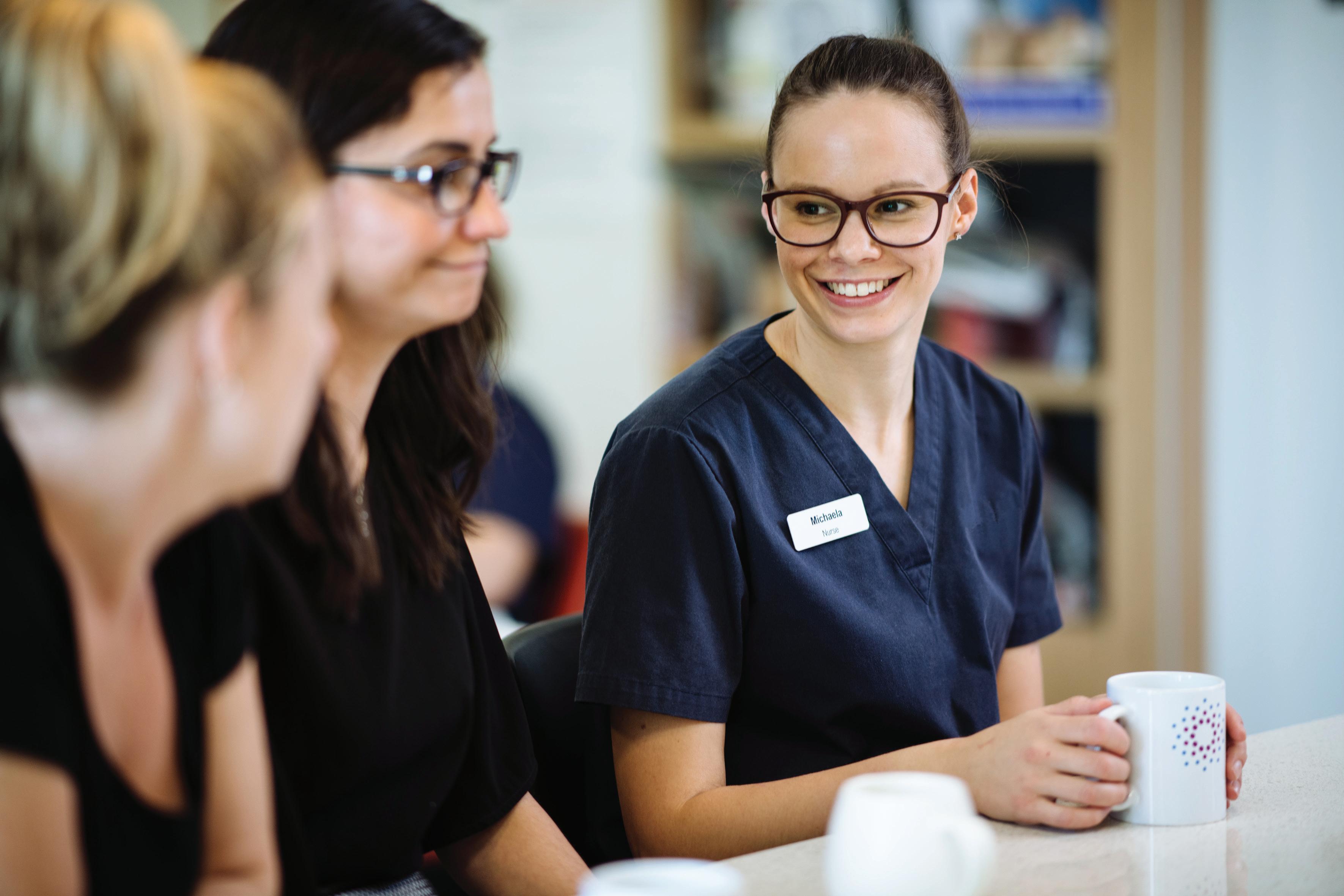
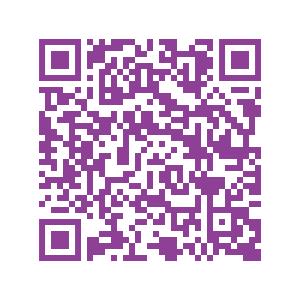
Develop specialised skills in rural general nursing practice with a Graduate Diploma of Rural Nursing Practice
By Melissa Deacon-Crouch, Isabelle Skinner and Lisa Hanson
To address these challenges and recognise the specialist skillset required of RNs, the National Rural and Remote Nursing Generalist Framework 2023-2027 was recently released.2 The Framework has provided the first explanation of the unique context of practice and core capabilities for rural and remote RN practice, founded on the Nursing and Midwifery Board of Australia’s (NMBA) Registered Nurse Standards for Practice (2016).3
Considering this Framework and extensive consultation with industry stakeholders, La Trobe University’s Rural Health School (LRHS) has developed a Graduate Diploma of Rural Nursing Practice. This program will equip RNs with specialised skills in rural general nursing practice and digital health. Completion of the Graduate Diploma of Rural Nursing Practice will equip RNs with specialty skills for rural generalist nursing. Graduates will be empowered to recognise and respond to the diverse needs of rural communities and individuals and adopt a place-based approach to care planning and community development. They will gain confidence and enhanced proficiency in delivering safe, high-quality urgent care,
aged care, palliative care and community care. Moreover, RNs will develop a deep understanding of cultural humility required to provide culturally safe, authentic patientcentred care when working with First Nations peoples and others. The Graduate Diploma will help address the inequity in rural healthcare access by equipping RNs with expert knowledge of digital health applications and solutions. Graduates of the program will be well prepared to lead and manage rural health services to meet the community’s and society’s expectations for high-quality, affordable healthcare.
The Graduate Diploma of Rural Nursing Practice is intended to be completed over 12 months or part-time equivalent, with most of the program delivered flexibly online. An early exit point, the Graduate Certificate of Rural Nursing Practice, is nested within the Graduate Diploma. The program focuses on essential rural skills, including urgent care, advanced life support, palliative care practice, rural aged care practice, remote emergency care, and public health, to develop interventions and plans to improve the health and wellbeing of communities and individuals. The Graduate Diploma
includes digital health, health leadership, research and quality improvementsimportant areas identified by industry partners. At the completion of the Graduate Diploma and in conjunction with the necessary clinical experience, students will be eligible to apply for the Master of Nursing (Nurse Practitioner) (https:// handbook.La Trobe.edu.au/courses/2023/ HMNNPO) and continue to specialise in rural practice at an advanced nursing level or pursue several other master degrees in nursing, public health and leadership. The structure of the postgraduate study has been designed to meet rural healthcare industry needs and support students to study and work concurrently. It will be delivered in subjects offered in online and blended modes. This type of program and structure is not offered elsewhere in Australia. The first intake will be for Term 5 2023.
References
1. AIHW, 2022. Rural and remote health. [Online] Available at: https://www.aihw.gov.au/reports/ rural-and-remoteaustralians/rural-and-remote-health [Accessed 6 June 2023].
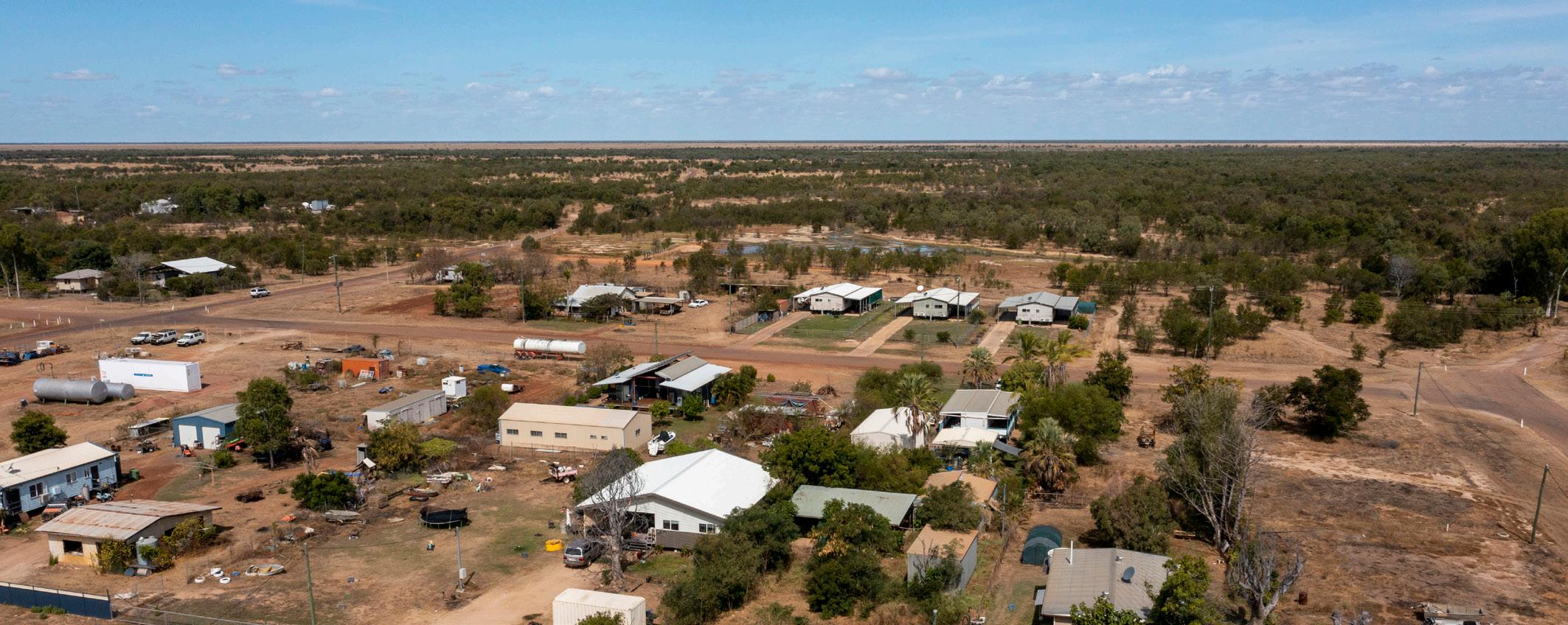
2. ANMJ, 2023. The National Rural and Remote Nursing Generalist Framework Unveiled [Online]. Available at https://anmj.org.au/national-rural-and-remote-nursinggeneralist-framework-unveiled/ [Accessed 6 June 2023].
3. NMBA 2026. Registered Nurse Standards for Practice. [Online]. Available at https://www.nursingmidwiferyboard. gov.au/codes-guidelines-statements/professional-standards/ registered-nurse-standards-for-practice.aspx [Accessed 6 June 2023].
Authors:
Dr Melissa Deacon-Crouch is Associate Professor of Rural Nursing, Head of Nursing Discipline, La Trobe Rural Health School.
Dr Isabelle Skinner is Director of Nursing Education and Research, Tasmanian Health Service- North West.
Dr Lisa Hanson is Associate Professor of Rural Health, Head of the Department Rural Health Sciences, La Trobe Rural Health School.
FOCUS 42 Oct–Dec 2023 Volume 28, No. 2
The complexities surrounding the health and wellbeing of rural and remote communities are often exacerbated by the limited access to healthcare resources and infrastructure compared with their urban counterparts.1
Suicide education for nurses from people with lived experience
By Taylor Yousiph, Christopher Patterson and Lorna Moxham
Suicide is a global tragedy. Globally, more than 700,000 people die due to suicide each year.1 In the Australian context, suicide continues to have a devastating impact. In 2021, 3,144 deaths occurred due to suicide, and 65,000 Australians made a suicide attempt.2
Nurses are often the first people in contact with a person in a suicidal crisis, and have a vital role in recognising risk, assessing warning signs, developing therapeutic rapport, and creating a care plan accordingly.
Moreover, as nurses, we can create a nurturing space for disclosure and an avenue for communication. Nurses, however, feel they are poorly educated in suicide care and feel confused about their role in caring for someone who is suicidal.3
Adequate training and preparation for nurses about suicide is vital. Currently, undergraduate nursing students undergo comprehensive education. However, there is variability in how mental healthcare is taught to nursing students across Australia.4 This is particularly the case with suicide. Many nursing students feel fear, apprehension and unprepared to care for someone with suicidality on their mental health clinical placements, requiring increased support.5
While suicide education initiatives and curriculum content have been proven to improve confidence and skills for nursing students in the short-term, future initiatives need to engage with lived experience educators to combat the fear and stigma around suicide.6

One known, effective strategy is the meaningful inclusion of people with lived experience of mental illness and suicide in the education of nursing students. Mental health nursing education from
people with lived experience has a positive effect on nursing student stigma around mental illness. It has led to students feeling more prepared for clinical placement experiences.7 It has also resulted in students having an increased awareness of personcentred care and an understanding of recovery-oriented practice.8 Learning directly from lived experience changes not only their ideas but also their nursing practice. But it also benefits the mental health of the educators.
People with a lived experience of mental health issues have found the process of educating to be empowering, purposeful and has had a positive effect on their mental wellbeing.9 They’ve expressed that having more involvement in the education process and prolonged time with students could benefit the impact of student education. This is the catalyst for my doctoral project. We are exploring the impact of educating on the people with a lived experience of suicide who are delivering it.
We need to consider lived experience education as the gold standard for suicide education. Nursing students need to hear and have exposure to people with a lived experience of suicide in the educational setting to combat stigma around suicide, be better able to talk about suicide and engage with people living with suicidality.
Our future nurses need to be better equipped to care for the 65,000 Australians seeking suicide care, and it starts with learning about it from the people who live it.
References
1. World Health Organization. Suicide [Internet]. Who.int. World Health Organization: WHO; 2021. Available from: https://www.who.int/news-room/fact-sheets/detail/suicide
2. Causes of death [Internet]. Abs.gov.au. AU; Commonwealth of Australia; Australian Bureau of Statistics; 2018. Available from: http://www.abs.gov.au/Causes-of-Death
3. Vedana KGG, Pereira CCM, dos Santos JC, Ventura C, Moraes SM, Miasso AI, et al. The meaning of suicidal behaviour from the perspective of senior nursing undergraduate students. International Journal of Mental Health Nursing. 2017 Dec 28;27(3):1149–61. https://doi.org/10.1111/inm.12431
4. Neville C, Goetz S. Quality and substance of educational strategies for mental health in undergraduate nursing curricula. International Journal of Mental Health Nursing. 2013 May 29;23(2):128–34. https://doi.org/10.1111/inm.12025
5. Sun F, Long A, Chiang C, Wu M, Yao Y. The psychological processes voiced by nursing students when caring for suicidal patients during their psychiatric clinical practicum: A qualitative study. Journal of Clinical Nursing. 2019 Dec 6;29(34):525–34. https://doi.org/10.1111/jocn.15090
6. Ferguson M, Reis J, Rabbetts L, McCracken T, Loughhead M, Rhodes K, et al. The impact of suicide prevention education programmes for nursing students: A systematic review. International Journal of Mental Health Nursing. 2020 Jun 22;29:756–71. https://doi.org/10.1111/inm.12753
7. Happell B, Bennetts W, Tohotoa J, Wynaden D, PlataniaPhung C. Promoting recovery-oriented mental health nursing practice through consumer participation in mental health nursing education. Journal of Mental Health. 2017 Mar 14;28(6):1–7. https://doi.org/10.1080/09638237.2017.1294734
8. Happell B, Waks S, Bocking J, Horgan A, Manning F, Greaney S, et al. There’s more to a person than what’s in front of you: Nursing students’ experiences of consumer taught mental health education. International Journal of Mental Health Nursing. 2019 Apr 5;28(4):950–9. https://doi.org/10.1111/ inm.12596
9. Yousiph T, Patterson C, Moxham L. Exploring the benefits and challenges of being a consumer educator in nursing education: A scoping review. Journal of Psychiatric and Mental Health Nursing. 2023 Feb 3; https://doi.org/10.1111/ jpm.12909
Authors:
Taylor Yousiph is a PhD Candidate at the University of Wollongong, NSW Australia.
Dr Christopher Patterson is Senior Lecturer at the University of Wollongong, NSW Australia.
Professor Lorna Moxham is Professor of Mental Health Nursing at the University of Wollongong, NSW Australia.
FOCUS Oct–Dec 2023 Volume 28, No. 2 43
Nursing and medical education in Uganda

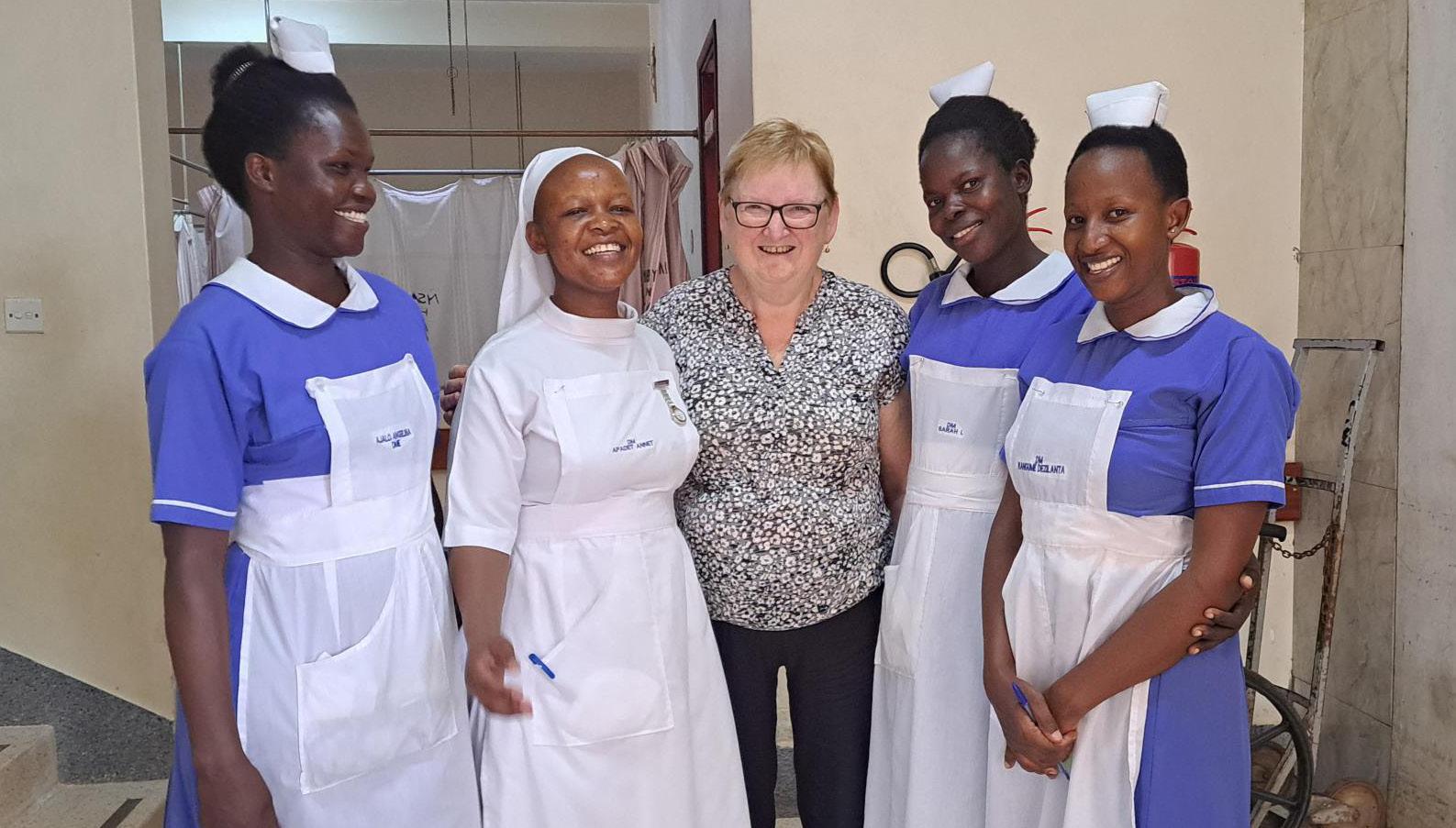 By Christine Murray, Judith Goh and Hannah Krause
By Christine Murray, Judith Goh and Hannah Krause
Uganda is a low-resource country in Africa. It does not have a nationalised health service but employs a user-pays system.
The population does not have easy or affordable access to healthcare. In Uganda, obstetric fistula is a common complication of childbirth, usually caused by prolonged and obstructed labour. Up to 2% of Ugandan women suffer this injury, resulting in an abnormal connection between the bladder or bowel and vagina.1
An interdisciplinary collaboration of Australian Urogynaecologists, Professor Judith Goh (AO) and Professor Hannah Krause (AO) and a nurse (CM) visited Uganda for a surgical camp in April 2023. In conjunction with African Mission Healthcare, who sponsored the camp, advertising was undertaken to encourage women in Kampala to present to St Francis Nsambaya Hospital to assess childbirth injuries. Over one week, 86 women presented to the hospital and 29 operations were performed. For many women, birth injuries were long-standing and, up until then, largely untreated. The most common operations performed included operations on previously unrepaired obstetric anal sphincter injuries, prolapse and fistula repairs. Women also presented with other gynaecological conditions such as sexual dysfunction, menorrhagia, overactive bladder or stress incontinence.
and post-operative patient management. Areas of education in the outpatient setting included good bladder including, timing and type of fluid intake, caffeine reduction, management of constipation and pelvic floor exercises. Post-operative inpatient ward care centred on urinary catheter management, trial of void following catheter removal and patient discharge education.
References
1. Krause HG, Wong V, Ng S-K, Tan GI, & Goh JT.W. 2019. Pelvic floor ultrasound findings in Ugandan women with obstetric fistula, unrepaired fourth-degree obstetric tear, and pelvic organ prolapse. Aust N Z J Obstet Gynaecol. 59, 585-589.

2. Hollis JL, Seward K, Collins CE, Tully B, Brett K, Hunter M, Foureur M, Schumacher T, Lawrence W, MacDonald-Wicks W. 2022. Evaluating a train-thetrainer model for scaling-up healthy conversation skills training: A pre-post survey using the theoretical domains framework. Patient Education and Counseling. 105, 3078-3085.
Authors:
Professor Judith Goh AO is a urogynaecologist in Brisbane.
Professor Hannah Krause AO is a Urogynaecologist in Brisbane and on the Gold Coast.
Dr Christine Murray is a nurse, midwife and Lecturer in the School of Nursing & Midwifery at La Trobe University, Melbourne.
MENTAL HEALTH & ALCOHOL AND OTHER DRUGS
The midwives and nurses at St Francis Hospital were more than willing to educate their fellow countrywomen. Surgical and conservative education and management of pelvic disorders were also taught during educational sessions with the medical staff. Daily education sessions were conducted in various areas of Urogynaecology practice, such as pelvic anatomy, management of pelvic organ prolapse, anal sphincter repair, urodynamic assessment, constipation and catheter care.
As a urogynaecology specialist nurse, I adopted a train-the-trainer model of teaching to ensure optimum transfer of skills to local nurses and midwives.2 This technique led to the recognition of an Education Champion in both the patient screening clinic and the post-operative inpatient ward. A senior midwife and nurse were recruited and instructed in the relevant elements of conservative
Overall, a very successful surgical camp was conducted. We returned to Australia grateful for the opportunity to collaborate and support the Ugandan people.
Student nurses at St Francis Nsambaya Hospital, Kampala, Uganda
FOCUS 44 Oct–Dec 2023 Volume 28, No. 2
Ward Champion Nurse Resty with Dr Christine Murray
IPEPA Animations – breaking down the barriers to palliative care for Aboriginal and Torres Strait Islander Peoples
By Allyra Hulme and Sharon Wetzig
The Indigenous Program of Experience in Palliative Approach (IPEPA) animation project is a series of videos drawing on Aboriginal and Torres Strait Islander cultural strengths and perspectives to educate and entertain communities and health professionals in a grass-roots way.
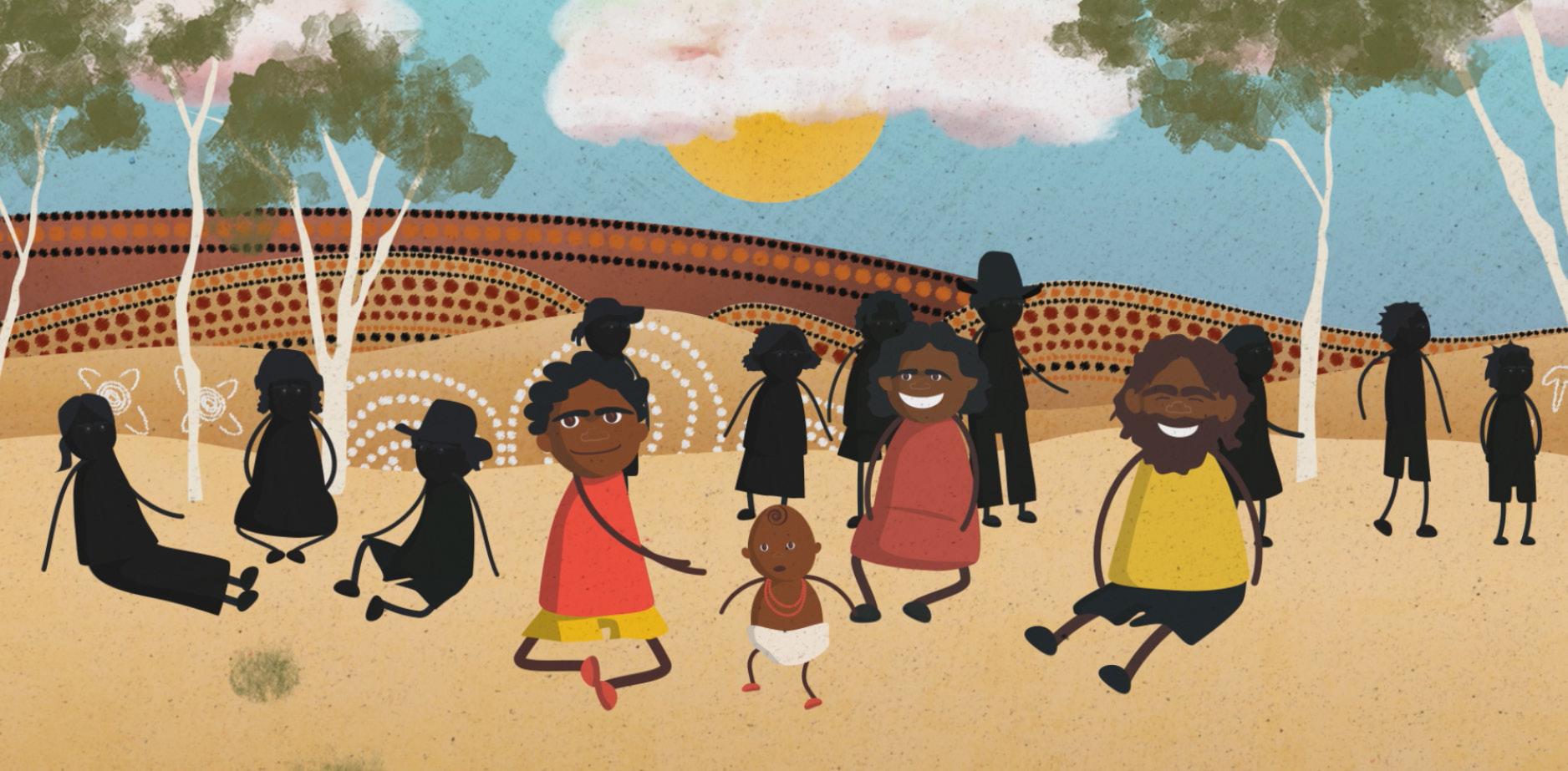


This project was designed by former IPEPA Lead Nicole Hewlett (a proud Palawa woman) alongside other members of the IPEPA community. The series features the voice and an animated version of the multitalented comedian Sean Choolburra, an avid communicator of positive messages for Aboriginal and Torres Strait Islander Health.
In 2022, informed by our yarns with Elders, community members and workforce and knowing how strong and deadly our people are, IPEPA set out to demystify and destigmatise palliative care and undermine the fears that have been cultivated around the palliative care setting and dying. We embarked on the journey to use one of the most significant keys to our resilience: our humour. Series one of the IPEPA animations includes five short videos showing
Sean embarking on a journey of understanding palliative care and exploring different aspects of what happens when we are diagnosed with a life-limiting illness.
Due to our overwhelmingly positive feedback, IPEPA is about to release series two.
Series two explores palliative care supportive services, peace on the end-of-life journey, and symptom management topics like pain management, constipation and shortness of breath. The IPEPA animations can assist health professionals in having conversations with our Aboriginal and Torres Strait Islander patients and families in a culturally safe and responsive manner. To view all the deadly IPEPA animations, you can access the playlist on our IPEPA YouTube channel - https://www.youtube.com/playlist?list=PLuOQzJeN14e1ePjcFwuqZ2U4q7z-riHI
Who is IPEPA? IPEPA is funded by the Australian Government Department of Health and delivered by QUT, but our strength is that we are a program for our community, by our community. We are governed by Aboriginal and Torres Strait Islander peoples, and the content that informs educating all health professionals – is written and facilitated by Aboriginal and Torres Strait Islander peoples. The Spirit of IPEPA seeks to break down the barriers to accessing palliative care that is experienced by Aboriginal and Torres Strait Islander peoples by working with Indigenous and non-Indigenous peoples to build knowledge, healing and trust in a way that promotes, respects and celebrates the strengths of our Indigenous cultures. For more information, please visit the PEPA website: http:// pepaeducation.com/about-ipepa/
Authors:
Allyra Hulme, IPEPA National Indigenous Manager, Cancer and Palliative Care Outcomes Centre, QUT.
FOCUS Oct–Dec 2023 Volume 28, No. 2 45
Sharon Wetzig, PCC4U/PEPA Learning and Development Coordinator, Cancer and Palliative Care Outcomes Centre, QUT.
Exploring virtual clinical simulation in the preparation of student nurse practitioners: Sentinel U SUNSURG study
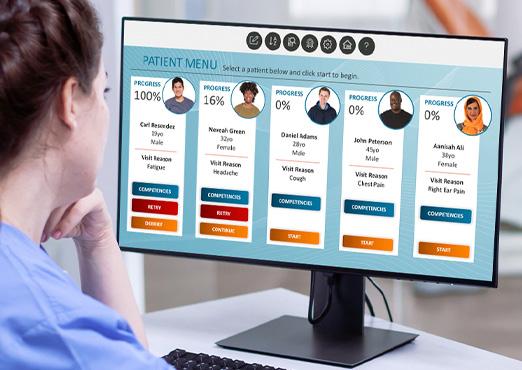 By Lori J Delaney, Suzanne Williams and Sandra Johnston
By Lori J Delaney, Suzanne Williams and Sandra Johnston
Nurse practitioner (NP) education must support the development of advanced clinical skills, knowledge acquisition and comprehensive clinical reasoning capabilities to prepare graduands to become autonomous leaders in healthcare.
Advanced practice nurses have enabled transformational healthcare practice across numerous dimensions, such as unmet and complex patient needs, accessibility, and provider shortages.1 However, research has flagged concerns with the preparation of NPs, reporting that 60% of students self-identified gaps in knowledge and clinical skills related to their practice. 2 These discrepancies jeopardise the advancement of the NP role within healthcare.
Traditional didactic education approaches may lead to disengagement and dissatisfaction with educational approaches and methods.3 Curriculum developers must embrace technological advancements and advance constructive learning approaches in nursing education. Educational approaches that implement technology, such as virtual clinical simulation (VCS), may enhance learning and retention of information in more personalised and meaningful ways.4 This change in learning approach may support the development of advanced metacognitive skills such as clinical reasoning and clinical competency. In turn, VCS may provide a pedagogical strategy to facilitate knowledge retention and clinical reasoning skills. VCS supports the active participation of students in cultivating mastery-based learning and aims to enhance understanding and the application of knowledge rather than learning based on memorisation and recall.5 However, its impact on clinical reasoning skills amongst advanced practice nurses has not been fully explored.
The feasibility and impact of virtual clinical simulation on the learning experiences and skill development of students undertaking the Masters of Nurse Practitioners at the Queensland University of Technology are currently being explored. This research has been supported by funding from Sentinel U: Healthcare and simulation innovations. The Sentinel U virtual clinical simulations are computer-based learning activities that allow students within the Master of Nurse Practitioner program to practice clinical skills and decisionmaking in a safe, risk-free environment. The theoretical underpinning for virtual simulation, including the Advanced Practice Series, is based on increasing difficulty, requiring nurses to master specific skills before advancing to the next level. Each simulation includes real-world context and a set passing standard for each encounter. Simulations are designed to replicate a wide range of clinical
scenarios, including patient interactions, physical assessments, diagnostic testing, and treatment interventions. Simulations can be programmed to provide immediate feedback to students, allowing them to evaluate their performance and adjust their clinical decision-making. This is especially important for NP students who may need more experience or confidence in certain areas of clinical practice. By providing a safe and controlled environment, virtual simulations allow students to make mistakes, learn from them, and refine their skills without putting patients at risk. Simulations can be programmed to focus on specific areas of clinical practice, such as medication management, patient counselling, or disease management. By customising simulations to meet the educational needs of NP students, educators can ensure that students are prepared to provide high-quality care to their patients.
References
1. Havola S, Haavisto E, Mäkinen H, Engblom J, Koivisto J-M. 2021. The effects of computer-based simulation game and virtual reality simulation in nursing students’ self-evaluated clinical reasoning skills. CIN: Computers, Informatics, Nursing: 39 (11), p 725-735 doi: 10.1097/ CIN.0000000000000748
2. MacKay M, Glynn D, McVey C, & Rissmiller P. 2018. Nurse practitioner residency programs and transition to practice. Nursing Forum. 53 (2), p 156-160).
3. Stacey G, Wilson C, Reddy H, Palmer C, Henderson J, Little H, & Bull H. 2018. Diagnosing and treating enquiry based learning fatigue in graduate entry nursing students. Nurse Education in Practice, 28, 310-313.
4. Tinôco JDDS, Enders BC, Sonenberg A, & Lira ALBDC. 2021. Virtual clinical simulation in nursing education: a concept analysis. International Journal of Nursing Education Scholarship 18(1), 20200001.
5. Saab MM, Hegarty J, Murphy D, & Landers M 2021. Incorporating virtual reality in nurse education: A qualitative study of nursing students’ perspectives. Nurse Education Today, 105, 105045.
Authors:
Lori J Delaney PhD, RN, School of Nursing, Midwifery and Social Work, the University of Queensland, St Lucia QLD, Australia.
Suzanne Williams MNSc(NP), RN, School of Nursing Faculty of Health, Queensland University of Technology (QUT), Kelvin Grove, QLD, Australia. Acute Pain Service, Children’s Health Queensland Hospital and Health Service, Queensland Health, QLD, Australia and Emergency Department, Children’s Health Queensland Hospital and Health Service, Queensland Health, QLD, Australia.
As healthcare continues to evolve, students within NP programs must receive comprehensive and rigorous education and training to ensure they are prepared to provide high-quality patient care. Through broadening the education approach to prepare NP students for clinical practice, the researchers aim to ascertain if virtual clinical simulation facilitates the students’ clinical skills and decision-making, provides a standardised method of evaluating clinical skills and decision-making, and is a costeffective and efficient way to provide education and training. Introducing this resource to guide student learning is hoped to provide students with a new level of engagement and active participation in their knowledge acquisition.
Sandra Johnston, Acute Pain Service, Children’s Health Queensland Hospital and Health Service, Queensland Health, QLD, Australia.
FOCUS 46 Oct–Dec 2023 Volume 28, No. 2
SUNSURG virtual clinical simulation activity
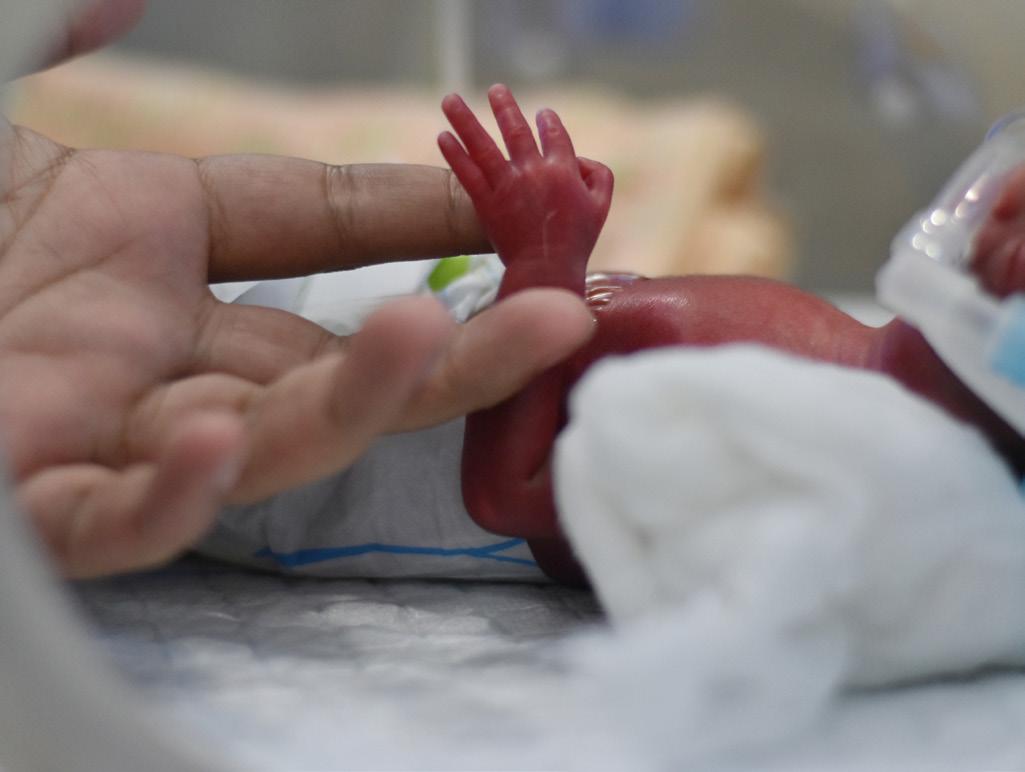



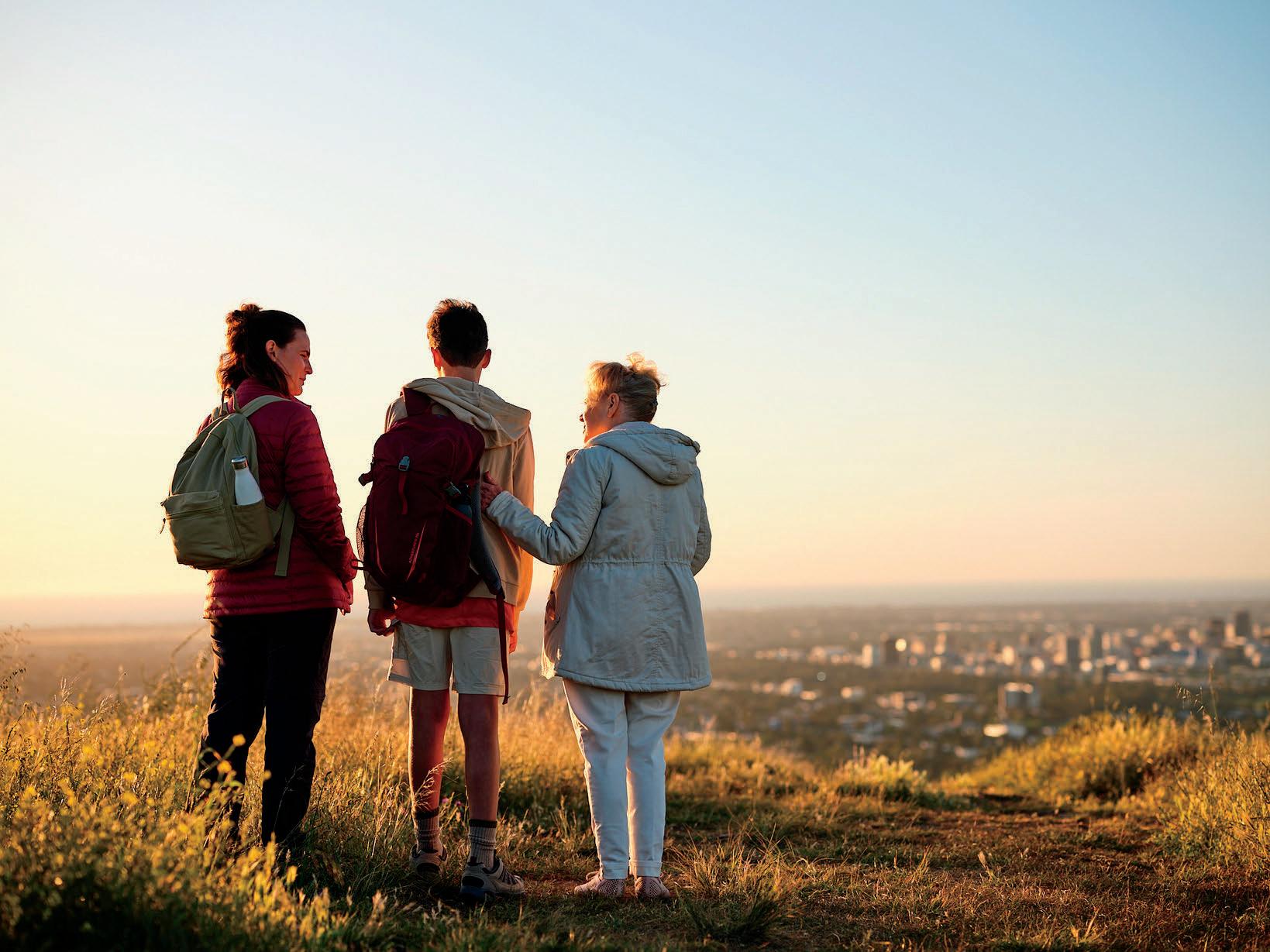





For over 35 years, the Australian Journal of Advanced Nursing (AJAN) has been at the forefront of nursing and Seeking Peer Reviewers and Associate Editors for AJAN — Join our Team of Experts! FOSTERCARE.LUTHERANCARE.ORG.AU BE THE VILLAGE foster care It takes a village to raise a child NOW RECRUITING SPECIALIST CARERS, GENERALIST CARERS AND RESPITE CARERS FOR CHILDREN OF ALL AGES. ENQUIRE ONLINE.
Can education promote prioritisation of staff wellbeing?
By Katrina Eisenhauer and Julie Aquilina
The high prevalence and impact of burnout in nursing and midwifery is well recognised, with growing numbers reported following the COVID-19 pandemic. There is a real need for meaningful, person-centred approaches to wellbeing, but is simply promoting wellbeing enough? Can we engage proactively and work with the willing to improve the culture of prioritising wellbeing through education? Code Lavender is proving to be a successful strategy in addressing this.
Code Lavender is shifting how nurses and midwives engage with wellbeing offerings at St George Hospital in Kogarah, Sydney. Staff can access a diverse range of resources meaningful to their needs via a dedicated room away from the clinical environment, equipped with comfortable furniture, soft
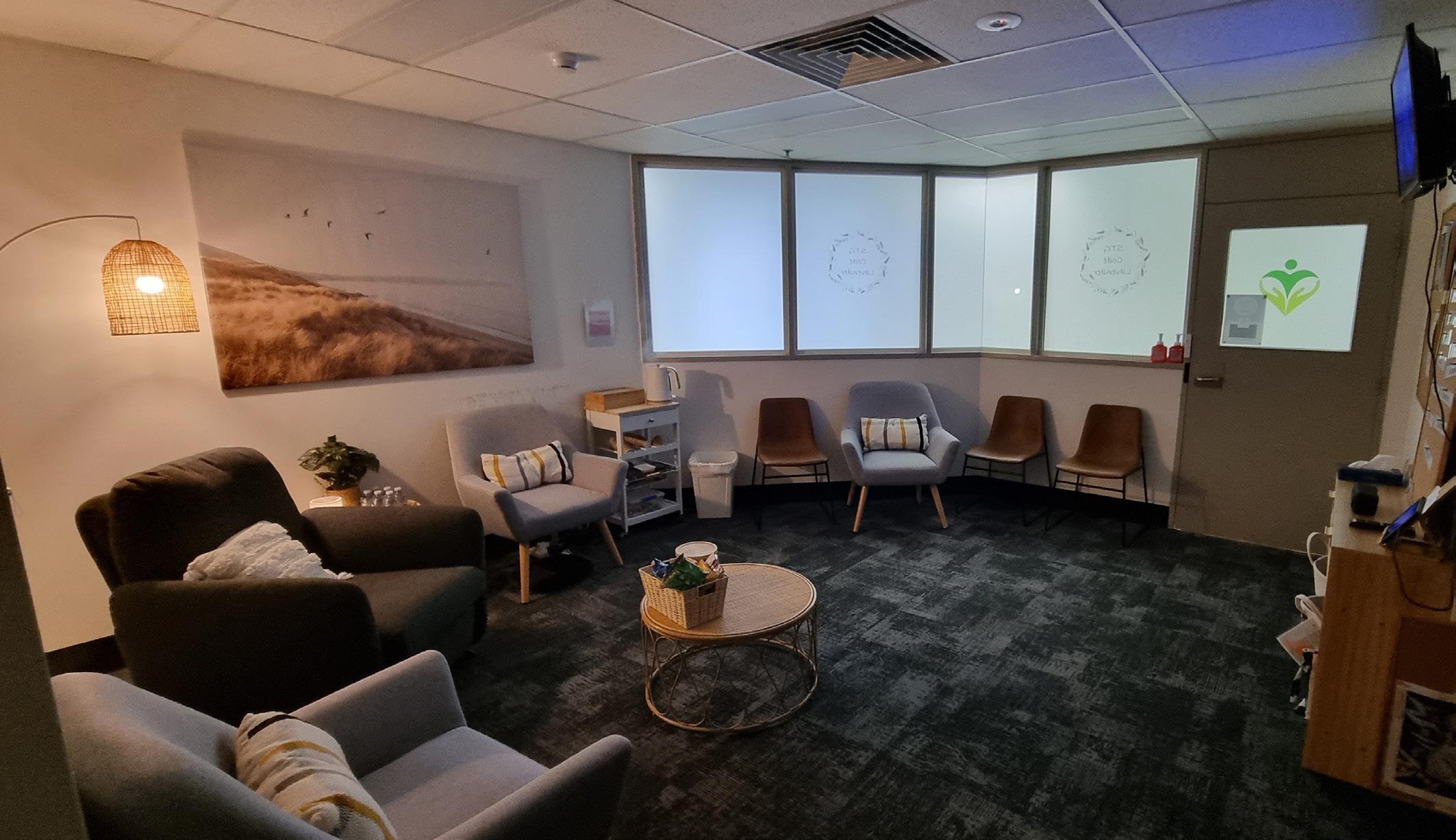
lighting and a wide variety of wellbeing resources. Alternatively, a mobile trolley is available for flexible access for staff wishing to use their own setting. Flexibility has been key to its success, with both pre-booked and immediate response sessions available. The sessions meet staff where they are at, creating an inclusive and reflexive space where facilitators work with participants rather than on them.
Recognising the need to provide leadership and support within the space, every session is facilitated by a trained Wellbeing Champion. Providing the opportunity for a grassroots approach to wellbeing, Champions are ward/unit-based clinicians interested in facilitating wellbeing initiatives for their colleagues.
Knowing that education equals empowerment, Champions attend an experiential facilitator development workshop. This workshop was developed not only with the intent to build capacity and capability but also to empower clinicians to lead wellbeing opportunities within the clinical environment. It provided the opportunity to practice facilitation exercises and engage together in ways that can be adapted to suit each clinical environment.
In addition to facilitating Code Lavender offerings, this workshop has seen a groundswell of fresh wellbeing initiatives,
with impressive displays of innovation and culture shifting. Other outcomes have seen clinicians develop their leadership and facilitation skills seeing a 300% increase in attendance post workshops. With over 80 Wellbeing Champions and more being added, the momentum continues, ensuring sustainability.
Staff are prioritising their wellbeing, with 524 staff members attending a Code Lavender across over 100 sessions in 2022 and 95 bookings in the first six months of 2023. Not only are staff attending, but 97% agree that the session has benefited their wellbeing and that they feel refreshed after. Feedback from staff remains overwhelmingly positive, with staff reporting feeling valued and recognised for their work, ‘This was great, as a student midwife I felt supported’, ‘Amazing! Much needed’, ‘Great idea super de-stressed’. Education is a vital tool in empowering staff to embrace wellbeing. Facilitation training and Code Lavender have proven to be valuable resources in the wellbeing toolkit. With ongoing support and investment, this unique resource is one part of building workforce wellbeing.
Authors:
Katrina Eisenhauer is a Nurse Educator, St George Hospital in Kogarah, NSW.
Julie Aquilina is a Nurse Manager, South Eastern Sydney Local Health District.
FOCUS 48 Oct–Dec 2023 Volume 28, No. 2
A place to switch off: St George Hospital’s Code Lavender Room
The Maternity Emergency Program (MEP): The development of simulation-based maternity education in Queensland
By Lisa Peberdy, Megan Barker, Mia McLanders and Lauren Kearney
BACKGROUND:
Interprofessional maternity emergency training is associated with improvements in perinatal outcomes and has demonstrated improvements in teamwork, knowledge, and clinical skills.1,2
The Maternity Emergency Program (MEP) is delivered by the Clinical Skills Development Service (CSDS), Metro North Health Service, to interprofessional maternity staff to enhance a team approach to maternity emergencies. MEP courses are face-to-face simulation-based workshops developed in response to different levels of expertise and experience in maternity settings.

FOUNDATION
COURSE DEVELOPMENT:
MEP was developed from an identified gap whereby simulation-based maternity education programs catered to experienced staff, not novices. Staff feedback and market scans identified a ‘soft introduction to maternity simulation’ was required for clinicians new to maternity care, rotating back to the birthing environment or employed in services with low exposure to birthing, such as graduate midwives, junior medical officers and return to practice midwives.
The MEP Foundation Course (MEP-FC) was implemented following an iterative approach, including topic identification
from existing training programs, subject matter expert input and review, and pilot program testing.
MEP-FC is case-based, following a woman’s labour, birth and postnatal period with the management of a fixed set of complications, addressed through interactive case discussion and management, skills stations with application into a simulated environment, and supported debriefing to enable learners to improve knowledge of clinical practice.
Results from participant questionnaires from the simulation-based workshops revealed that 74% would change their clinical practice, and 75% would recommend the program to colleagues.
EXPANSION INTO MORE PACKAGES:
In response to the MEP-FC success and following consultation with maternity staff, MEP Advanced (MEP-AD) was developed for staff with extensive experience in birthing care working in maternity services. Other maternity courses were available. However, these varied from site to site and feedback called for increased simulation practice.
As a bespoke course, MEP-AD facilitators choose different case-based scenarios depending on participant-identified learning needs for immersive simulations, skill stations and debriefing exercises. Post-course questionnaires revealed 87% found the hands-on activities supported their learning.
To enable MEP to be conducted state-wide, MEP ‘On the Road’ (MEP-OTR) facilitator training workshops were developed to deliver ‘immersive’ simulation opportunities in their own workplace environment for the training, which is highly valuable to support clinicians in other Health and Hospital Services (HHS) to ensure consistency of MEP to meet accreditation standards.
LICENSING:
Both MEP-FC and MEP-AD are accredited by the Australian College of Midwives (ACM)
and Royal Australian and New Zealand College of Obstetricians and Gynaecologists (RANZCOG) and meet Queensland Health Clinical Services Capability Framework’s (CSCF) mandatory maternity emergency education and training requirements.3 MEP is now licenced in nine HHHs across Queensland.
FUTURE DIRECTIONS:
The current accredited MEP-FC must be run as structured to cover set scenarios. Therefore, the interdisciplinary focus across obstetrics and midwifery does not cater to non-maternity staff.
In many rural facilities Emergency Department and ward staff assist with maternity emergency management. Future priorities for MEP-FC are to enable it to be bespoke and inclusive of non-maternity care providers or alternately develop a separate course for that demographic.
Information regarding MEP is located on the CSDS website: https://csds.qld.edu.au
References
1. Lenguerrand E, Winter C, Innes K, et al. THISTLE: Trial of hands-on Interprofessional simulation training for local emergencies: A research protocol for a stepped-wedge clustered randomised controlled trial. BMC Pregnancy and Childbirth, 2017, Vol.17 (1), p.294-294. DOI: 10.1186/s12884-0171455-9
2. Kumar A, Sturrock S, Wallace EM, et al. Evaluation of learning from practical obstetric multi-professional training and its impact on patient outcomes in Australia using Kirkpatrick’s framework: a mixed methods study. BMJ Open 2018;8: e017451. doi:10.1136/ bmjopen-2017-017451
3. Queensland Health. Clinical Services Capability Framework. V 3.2 (2014). Queensland Government. https://www.health. qld.gov.au/clinical-practice/guidelines-procedures/servicedelivery/cscf
Authors:
Dr Lisa Peberdy, Senior Research Fellow – Maternity, Clinical Skills Development Service, Metro North Health Service, Qld Australia.
Ms Megan Barker, Program Director Queensland Maternity Education, Clinical Skills Development Service, Metro North Health Service, Qld Australia.
Dr Mia McLanders, Manager - Research, Clinical Skills Development Service, Metro North Health Service, Qld Australia
Dr Lauren Kearney, Associate Professor of Midwifery, University of Queensland and Metro North Health Service, Qld Australia.
FOCUS Oct–Dec 2023 Volume 28, No. 2 49
Development of water immersion for labour and birth education package
By Megan Barker, Lisa Peberdy, Mia McLanders and Lauren Kearney
BACKGROUND
Water immersion is a safe, nonpharmacological pain relief option for labour and birth.1-3 Women with access to water immersion report increased autonomy, control, and positive birth experience.2,4
However, utilising water immersion during labour across Queensland remains low (6%). Of the 64,111 births in Queensland in 2021, only 1,969 (3.1%) of births occurred in water, with slightly more women (4,005, 6.3%) using warm water immersion for pain relief.5 Barriers to uptake are multi-factorial, including a gap in appropriate educational resources for clinicians.6
EDUCATION PACKAGE DEVELOPMENT
From November 2021 to December 2022, the Clinical Skills Development Service (CSDS), Metro North Health Service, Queensland, extensively consulted with key stakeholders, including consumers, clinicians, and Directors of Nursing and Midwifery across Queensland. A training needs analysis was conducted, which included:
1. scoping of published guidelines;
2. credentialing processes; and
3. market scan of available education was undertaken.
A wide variation in policy and workplace instructions, inconsistency in credentialing requirements, and a lack of available education options were identified. In partnership with key stakeholders, CSDS developed a blended learning package comprising interactive online e-learning education modules and a half-day face-to-face immersive simulation workshop.
The education package is designed to equip maternity care providers with contemporary, evidence-based information and skills to provide high-quality care for women considering water immersion for labour and/ or birth.
The e-learning package contains three online modules that provide foundational knowledge, each designed to take approximately 80 minutes to complete and progress sequentially. Each module includes interactive learning material and concludes with an assessment. The pass rate is 100%, and feedback is provided for incorrect responses and multiple attempts are allowed. Module One introduces water immersion for labour and birth; Module Two outlines clinical considerations for labour and birth in water; Module Three covers neonatal considerations and water immersion in the context of complexity.
IMPLEMENTATION AND EVALUATION
The e-learning package was launched on International Midwives Day (5 May) 2023, and 400 participants enrolled within the first six weeks of the launch date. A formal evaluation of the training package will measure water immersion for labour and birth rates, changing clinician attitudes, corresponding behaviour changes, and associated clinical outcomes.
A thorough consultation with stakeholders, particularly consumers, enabled a more comprehensive approach to training needs and added invaluable insight into the complex interaction between local policy and procedures, accreditation requirements, and women’s ability to access water immersion. The resultant training package addresses barriers to access, including a variation of policy and credentialing practices and clinician perceptions. Future CSDS training needs analyses will seek a higher level of consumer engagement, according to the International Association for Public Participation’s (IAP2) spectrum, designed to assist with the level of participation that defines the public’s role in community engagement programs.7 Specifically, moving from involving the consumer to true collaboration, where the consumer is central to the training needs analysis and development of education packages and supporting resources.
The e-learning package is free, and registration to complete the online modules is via the CSDS website: https://csds.qld.edu.au
References
1. Cluett ER, Burns E, Cuthbert A, Cluett ER. Immersion in water during labour and birth. Cochrane Database Syst Rev. 2018;2018(6):CD000111-CD000111.
2. Sidebottom AC, Vacquier M, Simon K, et al. Maternal and Neonatal Outcomes in HospitalBased Deliveries With Water Immersion. Obstet Gynecol 2020;136(4):707-715.
3. Bovbjerg ML, Cheyney M, Caughey AB. Maternal and neonatal outcomes following waterbirth: a cohort study of 17 530 waterbirths and 17 530 propensity score‐matched land births. BJOG. 2022;129(6):950-958.
4. Ulfsdottir H, Saltvedt S, Georgsson S. Women’s experiences of waterbirth compared with conventional uncomplicated births. Midwifery. 2019;79:1-7.

5. Queensland Government Statistician’s Office. Vital Statistics: Births. Available at: https://www.qgso.qld.gov.au/ statistics/theme/population/ vital-statistics/births. Accessed 9 November, 2022.
6. Cooper M, McCutcheon H, Warland J. A critical analysis of Australian policies and guidelines for water immersion during labour and birth. Women Birth. 2017;30(5):431-441.
7. International Association for Public Participation. IAP2 Public Participation Spectrum. 2019. http://iap2.org.au/resources/ spectrum/ Accessed 22 June, 2023
Authors:
Ms Megan Barker, Program Director Queensland Maternity Education, Clinical Skills Development Service, Metro North Health Service, Qld Australia.
Dr Lisa Peberdy, Senior Research Fellow – Maternity, Clinical Skills Development Service, Metro North Health Service, Qld Australia.
Dr Mia McLanders, Manager - Research, Clinical Skills Development Service, Metro North Health Service, Qld Australia.
Dr Lauren Kearney, Associate Professor of Midwifery, University of Queensland and Metro North Health Service, Qld Australia.
FOCUS 50 Oct–Dec 2023 Volume 28, No. 2




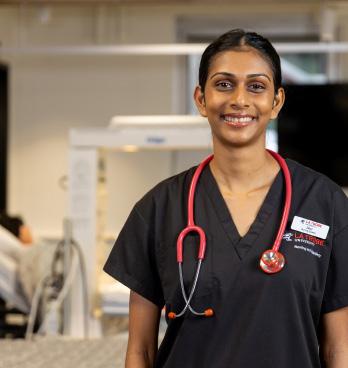
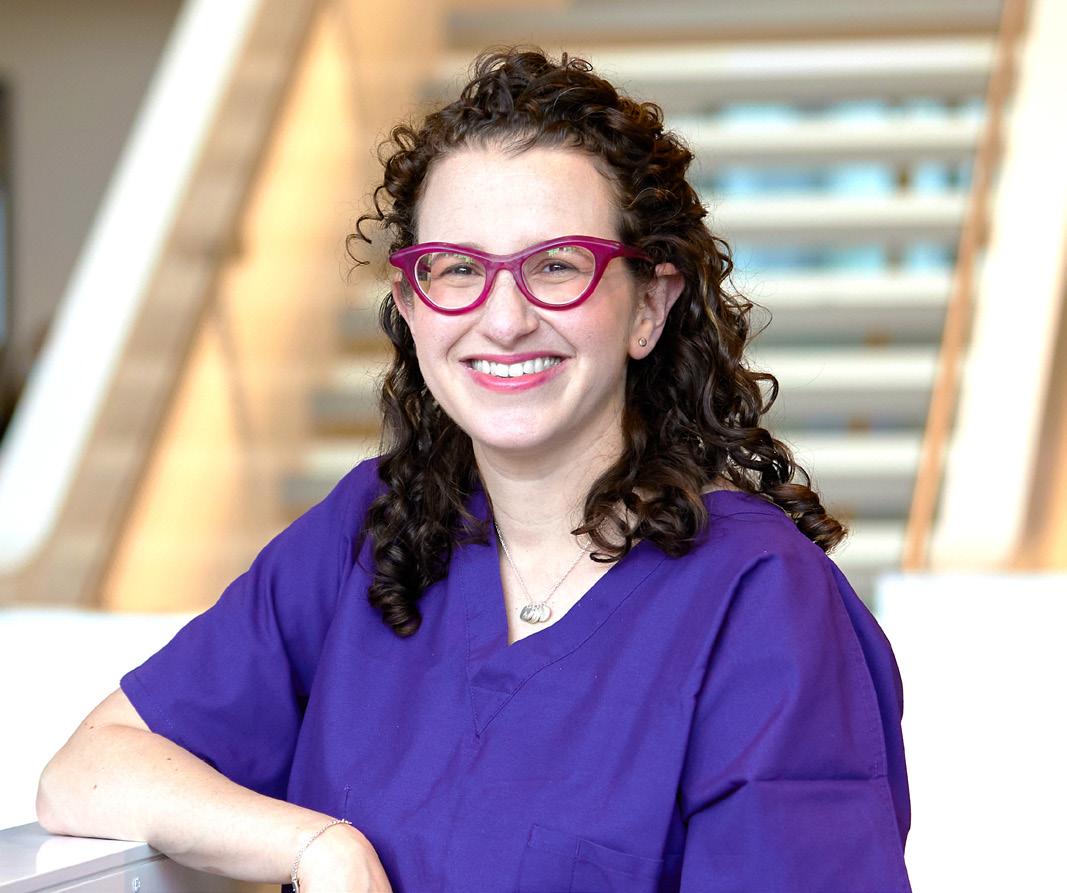
3 Buffalo Court Berwick VIC info@safe-super.com.au INVEST IN YOUR FUTURE I N V E S T S A F E L Y REACH OUT TO LEARN MORE With property prices now rising, don't wait too long U S E Y O U R S U P E R O R H O M E E Q U I T Y P A Y L O W O R N O T A X O N I N C O M E O N G O I N G P R O P E R T Y M A N A G E M E N T Purchase an investment Purchase an investment property in Melbourne's property in Melbourne's rapidly expanding rapidly expanding South East for South $1,000 deposit. $1,000 deposit. S e l e c t 4 - b e d r o o m p r o p e r t y i n v e s t m e n t s a r e m o r e s t a b l e a n d p r o f i t a b l e t h a n i n v e s t m e n t s i n s h a r e s ( 0 3 ) 9 7 0 2 2 5 9 5 SAFE-SUPER COM AU La Trobe Nursing & Midwifery START IN SEMESTER 1, 2024 La Trobe University CRICOS Provider Code Number 00115M. TEQSA PRV12132 –Australian University. DC40489 –09/23 APPLICATIONS NOW OPEN Master of Nursing (Nurse Practitioner) Master of Midwifery Practice Master of Mental Health Nursing Graduate Diploma in Child, Familyand Community Nursing Graduate Diploma in Midwifery Eligibility criteria and conditions apply. Teachers Federation Health Ltd ABN 86 097 030 414 trading as Nurses & Midwives Health. A Registered Private Health Insurer NMH-ANMJ-09/23
Enhancing classroom learning: Enter the Escape Room
By Erin Wakefield
Have you ever wondered why hospital admission forms ask if the patient or their family members have had an unusual reaction to anaesthetic?
Malignant Hyperthermia (MH) is a rare autosomal dominant genetic disorder,1 a life-threatening reaction to a drug used to facilitate endotracheal intubation (suxamethonium) or to anaesthetic gasses.1 Suxamethonium is used to facilitate emergency intubation in all clinical environments. In the operating theatre, we use this drug more often than in the general ward setting. Endotracheal intubation is, for us, an everyday occurrence rather than a potentially life-saving intervention in an emergency situation.
Given that a patient may not know they have this rare disorder, it is vital that nurses, as a part of the multi-disciplinary team, can recognise it and initiate rapid management. In theatre, we call this a ‘low-frequency high mortality’ event for which continuing education is suggested.2

MH is one such curriculum topic in the post-graduate perioperative nursing course I have the privilege of leading. We cover not only the recognition and nursing management strategies of MH, but also the leadership and communication traits required to ensure that the large-scale and complex life-saving treatment is initiated rapidly.
So, how to ensure that the knowledge and skills required of postgraduate-prepared perioperative nurses are not simply recalled but able to be applied? Enter the Escape Room as an engaging and - dare I say it – fun – classroom activity.
As a teaching tool, Escape Rooms bring together many facets of effective, experiential adult education: Participants are actively involved in their own learning,3 practical and theoretical knowledge and skills are tested,4 and as teams work together to achieve a common goal, the opportunity for leadership, and achievement under pressure is created.5
Our MH Escape Room is devised of eight different ‘rooms’. Each has a puzzle to be solved, the correct answer to which provides a letter ‘key’ to ‘escape’ from the room. The eight ‘keys’ form a scrambled word; the first team to solve the puzzle and ‘exit’ the game wins. Examples include:
Room task: Using the MH Information poster6, complete the crossword and unscramble the letter clues to gain the key.
Room task: How much antidote (Dantrolene) is needed? How long will the hospital supply last? Correct mathematical answers provide the key.
Room task: Acid-Base Balance: Patients in MH rapidly become acidotic. Analyse the Arterial Blood Gasses to obtain the key.
Room task: MH is autosomal dominant: Create an origami structure of a DNA double helix to escape from the room. Although I don’t have formal research to share, my anecdotal evidence supports contemporaneous literature: Escape Room participants find them an enjoyable3 and satisfying way to learn.4,5 Escape Rooms do take an extensive amount of time to prepare, 7 but the focused classroom chatter, teamwork, and observable active engagement with activities make it definitely worthwhile!
References
1. Malignant Hyperthermia Australia and New Zealand. 2022. Malignant Hyperthermia Resource Kit. Retrieved from https:// malignanthyperthermia.org.au/resource-kit/
2. Australian and New Zealand College of Anaesthetists. 2016. PS08(A) Assistant for anaesthetist. Retrieved from https:// www.anzca.edu.au/getattachment/473f7e0d-b14a-4939aad1-034c0474c603/PS08(A)-Position-statement-on-theassistant-for-the-anaesthetist-(PS08)#:~:text=Ensure%20 staff%20and%20patient%20safety%20when%20 utilising%20equipment%20in%20anaesthetising%20 locations.&text=Discuss%20anaesthesia%20techniques%20 involving%20all%20areas%20of%20perioperative%20 practice%20including%3A&text=Preparation%20 and%20participation%20in%20surgical%20safety%20 checklists.&text=Patient%20positioning.
3. Gómez-Urquiza J, Gómez-Salgado J, Albendín-García L, Correa-Rodríguez M, González-Jiménez E & Cañadas-De la Fuente G. 2019. The impact on nursing students’ opinions and motivation of using a “Nursing Escape Room” as a teaching game: A descriptive study. Nurse Education Today, 72, 73–76.
4. Iverson L, Theresa Jizba T & Manning L. 2023. Beat The Clock! Implementation and Evaluation of an Escape Room. The Journal for Nurse Practitioners, 19(5),104523.
5. Gomez-Urquiza J, Requena-Palomares I, Gorjon-Peramato E, Gomez-Salgado J, Canadas-De la Fuente G & Albendin-Garcia L. 2022. Emergency and critical care professionals’ opinion on escape room as a health sciences evaluation game. Medicine, 101(25), e29432–e29432.
6. Malignant Hyperthermia Australia and New Zealand. 2018. ‘Management of Malignant Hyperthermia: You’ve Only Got a Few Minutes’. Retrieved from https://malignanthyperthermia. org.au/wp-content/uploads/2018/09/MALIGNANTHYPERTHERMIA-POSTER-2018.pdf
7. Hebert D. 2023. Implementation of educational escape rooms in a nurse practitioner doctoral curriculum. Journal of Professional Nursing, 45, 8–13.
Author:
Erin Wakefield, RN, RM is a Lecturer, Perioperative Lead in the School of Nursing and Midwifery at Monash University, Clayton, Victoria Australia.
FOCUS 52 Oct–Dec 2023 Volume 28, No. 2
Understanding enrolled nurse pre-registration nursing students
By Kelly Lewer
Now more than ever, we need to change the way we think about career trajectories and progression via higher education to cater for diversity within nursing student populations.
As the healthcare sector continues to feel the pressure of workforce shortages, and universities widen participation, energy and focus must be directed at how we are best placed to meet the needs of nursing students. It starts with the way we think.
The nurse’s role is indispensable in the Australian healthcare sector and offers diverse opportunities for career progression. One pathway is transitioning from an Enrolled Nurse (EN) to a Registered Nurse (RN).

In many Australian jurisdictions, ENs have collegelevel diploma qualifications. Some universities offer ENs direct entry into the second year of a Bachelor of Nursing Program as recognition of their previous studies.1 This atypical pathway transition bridges the EN qualifications and the requirements for becoming an RN.
Within nursing literature, Hutchinson et al., Craft et al., and Wall et al. provide an understanding of the experiences and trajectories of ENs within the higher education setting.1-3 Largely absent from this body of work, however, is the use of French philosopher Pierre Bourdieu’s concepts of capital, field and habitus as a framework for the analysis of resources (capital) and dispositions (habitus) of ENs within the higher education setting (field).4 Thinking in this way, O’Shea (first-in-family students), Lewer (students impacted by domestic violence), and Reay (women and social class) provided nuanced understandings of previously hidden cohorts within higher education.5-7 Understanding EN pre-registration students in this way will be vital to inform and provide sustainable and quality improvements in policy and service provision for these students.
References
1. Hutchinson L, Mitchell C, & John WST. 2011. The transition experience of Enrolled Nurses to a Bachelor of Nursing at an Australian university. Contemporary Nurse: a Journal for the Australian Nursing Profession, 38(1/2), 191–200. https://doi.org/10.5172/ conu.2011.38.1-2.191
2. Craft JA, Hudson PB, Plenderleith MB, & Gordon CJ. 2017. Enrolled nurses entering undergraduate studies at second year to become registered nurses – A mixed methods study on commencing perceptions of bioscience. Collegian (Royal College of Nursing, Australia), 24(4), 317–324. https://doi.org/10.1016/j. colegn.2016.05.002
3. Wall P, Fetherston C, & Browne C. 2020. Transitioning through a Bachelor of Nursing program: The enrolled nurse experience. Collegian (Royal College of Nursing, Australia), 27(4), 396–401. https://doi.org/10.1016/j. colegn.2019.11.004
4. Bourdieu P. 1977. Outline of a theory of practice (R. Nice, Trans.). Cambridge, UK: Cambridge HE Press.
5. O’Shea S. 2016. Avoiding the manufacture of “sameness”: First-in-family students, cultural capital and the higher education environment. Higher Education, 72(1), 59–78. https:// doi.org/10.1007/s10734-015-9938-y
6. Lewer K. 2023. How do the life histories of women who have experienced domestic violence impact the ways they decide on and engage with higher education? Student Engagement in Higher Education Journal, 4(3), 48–67. Retrieved from https:// sehej.raise-network.com/raise/ article/view/1150
7. Reay D. 2021. The working classes and higher education: Meritocratic fallacies of upward mobility in the United Kingdom. European Journal of Education, 56(1), 53–64. https:// doi.org/10.1111/ejed.12438
Author:
Kelly Lewer RN, PhD, Med, BN, Lecturer School of Nursing, University of Wollongong, NSW Australia.
Oct–Dec 2023 Volume 28, No. 2 53
FOCUS
La Trobe University Austin Clinical School of Nursing celebrates a milestone in education
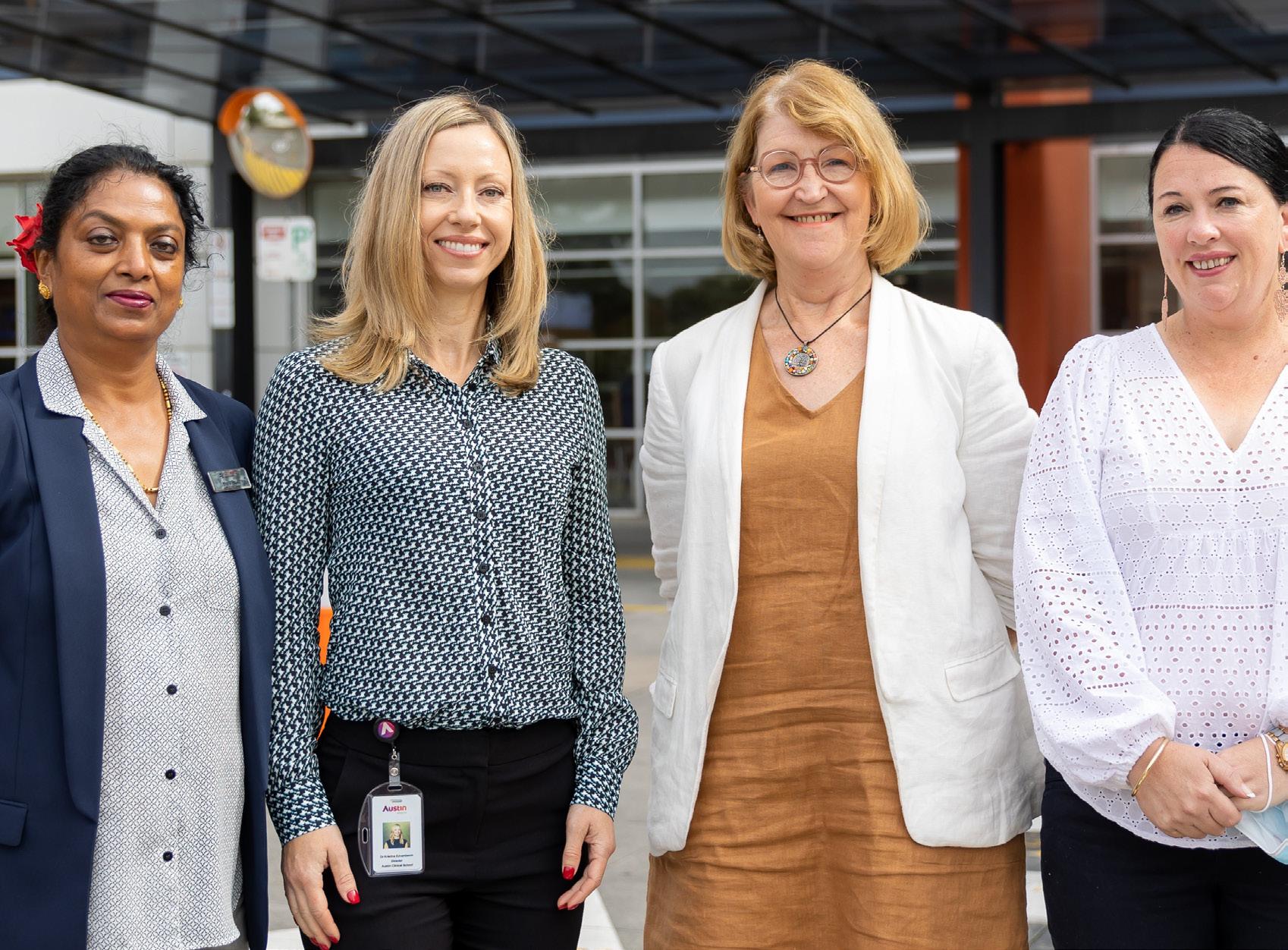 By Maria Murphy, Jacqueline Johnston, Christine Murray, Jennifer Austerberry, Marcia George OAM, Mercy Rajan and Kristina Edvardsson
By Maria Murphy, Jacqueline Johnston, Christine Murray, Jennifer Austerberry, Marcia George OAM, Mercy Rajan and Kristina Edvardsson
A Clinical School had been reported as the merger of … “the aims and operations of the university as a learning culture and the health agency as a provider of health services. Students placed in clinical schools intellectually pursue nursing through studying its practices and searching for the science underpinning these practices through engaging in practice and processes of reflection, guided equally by the expert clinicians of the health agency and academics of the university”.1(para 1)
La Trobe University commenced teaching Year 3 Bachelor of Nursing (BN) students in their newly launched Clinical School of Nursing at Austin Health in 2003. During this time, the Austin Clinical School evaluated program efficacy.2,3 The BN student perspectives of final year theory and placement in the one health service confirmed that many students saw a Clinical School model as the best of both worlds.4 Its influence on selecting a graduate year was reported.5
The students from Austin Clinical School come from diverse backgrounds. Mostly school leavers mature age, Indigenous, on humanitarian visas, and international students. The Austin Clinical School continues to welcome exchange students from other universities and local and international post-graduate and post-doctoral students.
As Austin Clinical School reflects on how quickly 20 years flies by, it’s an opportunity to thank all clinical nurses who have preceptored and/or may now find themselves as a preceptor of a final-year student. There are La Trobe Clinical School of Nursing models in partnership with Alfred, Northern, Royal Melbourne and Rural Health, who have their own journeys and milestones to celebrate!
References
1. Pearson A. 2000. A proposal to establish La Trobe Clinical Schools. La Trobe University. Melbourne.
2. Watt E, Murphy M, Pascoe E, Scanlon A, & Gan S. 2011. An evaluation of a structured learning programme as a component of the clinical practicum in final year Bachelor of Nursing programme: a pre–post-test analysis. Journal of Clinical Nursing. 20 (15-16) 2286-9.
3. Watt E, Murphy MC, MacDonald L, Pascoe E, Storen H, & Scanlon A. 2016. An evaluation of a structured learning program as a component of the clinical practicum in undergraduate nurse education: A repeated measures analysis. Nurse Education Today. 36 (1) 172–177.
4. Watt E, & Pascoe E. 2013. An exploration of graduate nurses’ perceptions of their preparedness for practice after undertaking the final year of their bachelor of nursing degree in a university-based clinical school of nursing. International Journal of Nursing Practice, 19(1), 23–30.
5. Scanlon A. 2008. How do University Clinical School of Nursing graduates choose their Graduate Nurse Year program? Australian Journal of Advanced Nursing. 26 (2) 34-38.
Authors:
A/Professor Kristina Edvardsson PhD is Clinical School Site Coordinator at La Trobe Austin Clinical School, Heidelberg Victoria Australia.
Dr Christine Murray DN, is Lecturer at La Trobe Austin Clinical School, Heidelberg Victoria Australia.
Ms Mercy Rajan BSc; DipBus(Frontline Mgmt) is Austin Clinical School Administration Officer at La Trobe Austin Clinical School, Heidelberg, Victoria Australia.
Ms Jen Austerberry MN is Bachelor of Nursing Course Coordinator, Discipline Lead, Nursing at La Trobe Austin Clinical School, Heidelberg Victoria Australia.
Professor Marcia George DN is Adjunct SONM appointment at La Trobe Austin Clinical School, Heidelberg, Victoria Australia.
Ms Jacqui Johnston MN is BN (Singapore) course coordinator at La Trobe Austin Clinical School, Heidelberg, Victoria Australia
Dr Maria Murphy, PhD is a Lecturer at La Trobe Austin Clinical School, Heidelberg Victoria Australia.
FOCUS 54 Oct–Dec 2023 Volume 28, No. 2
Members of the Clinical School (L-R) Mercy Rajan, Kristina Edvardsson, Jen Austerberry and Jacqui Johnston
What is effective patient education?
By Olivia Sonneborn
Effective patient education can empower patients, improving patient satisfaction and understanding, and reduce hospital length of stay and hospital readmissions for patients.1,2

However, current evidence has yet to agree on the most effective patient education method. Current evidence recognises effective patient education should include:
• information specific to the patient’s clinical situation (rather than generic or non-specific information)
• structured education (rather than an ad hoc question-and-answer format)
• inclusive and diverse languages and be culturally sensitive
• more than one teaching strategy (eg. written information and verbal descriptions).2,3
Written materials, lectures, webbased teaching, audiotapes, and video tapes improve patient knowledge and satisfaction.3 Verbal teaching and discussions are considered the least effective education strategies, yet verbal, unstructured patient information and education continue to be a broadly used method for patient intervention in health services.
NURSE-LED EDUCATION
Nurses have the capacity to undertake a greater role in effective patient education. Patient education is an integral part of a nurse’s role, as they often spend the most time with patients compared to other healthcare providers. As such, they generate a strong rapport and relationship with patients to influence their healthcare.2,4 Nurse-led education can potentially improve patient adherence to treatment, satisfaction, and understanding of information.2 Specific methods of education nurses can lead and deliver for effective patient education needs to be explored further and is a future area of practice where nurses have the potential to undertake greater nurse-led initiatives.5
References
1. Bakan G, Akyol AD. Theory-guided interventions for adaptation to heart failure. J Adv Nurs. 2008;61(6):596-608.
2. Rice H, Say R, Betihavas, B. The effect of nurse-led education on hospitalisation, readmission, quality of life and cost in adults with heart failure. A systematic review. Patient Edu Couns. 2018 Mar;101(3):363-374.
3. Friedman AJ, Cosby R, Boyko S, Hatton-Bauer J, Turnbull, G. Effective teaching strategies and methods of delivery for patient education: a systematic review and practice guideline recommendations. J Canc Edu. 2011 Mar;26(1):12-21.
4. Sonneborn O, Bui T. Opioid induced constipation management in orthopaedic and trauma patients: treatment and the potential of nurse-initiated management. Int J Othop Trauma Nurs. 2019 Aug;34:16-20.
5. Sonneborn O, Miller C. The pain nurse practitioner and the pain nurse’s role and views on opioid management in Australia: a national questionnaire survey. Pain Manag Nurs 2021 Dec;22(6):740-746.
Author:
Olivia Sonneborn is a Nursing Lecturer with La Trobe University and a Clinical Nurse Consultant for Alfred Health in Victoria. Her research interests relate to nurseled care and improving education strategies for patients.
FOCUS Oct–Dec 2023 Volume 28, No. 2 55
Welcome to Healthy Eating
Each issue we will be featuring a recipe from Maggie Beer’s Foundation, which ensures research, education and training will lead to better outcomes and the delivery of nutritious and flavoursome meals to our ageing population in nursing homes. Maggie’s vision is not only to improve nutrition and wellbeing for the aged, but also for all who enjoy good wholesome food.

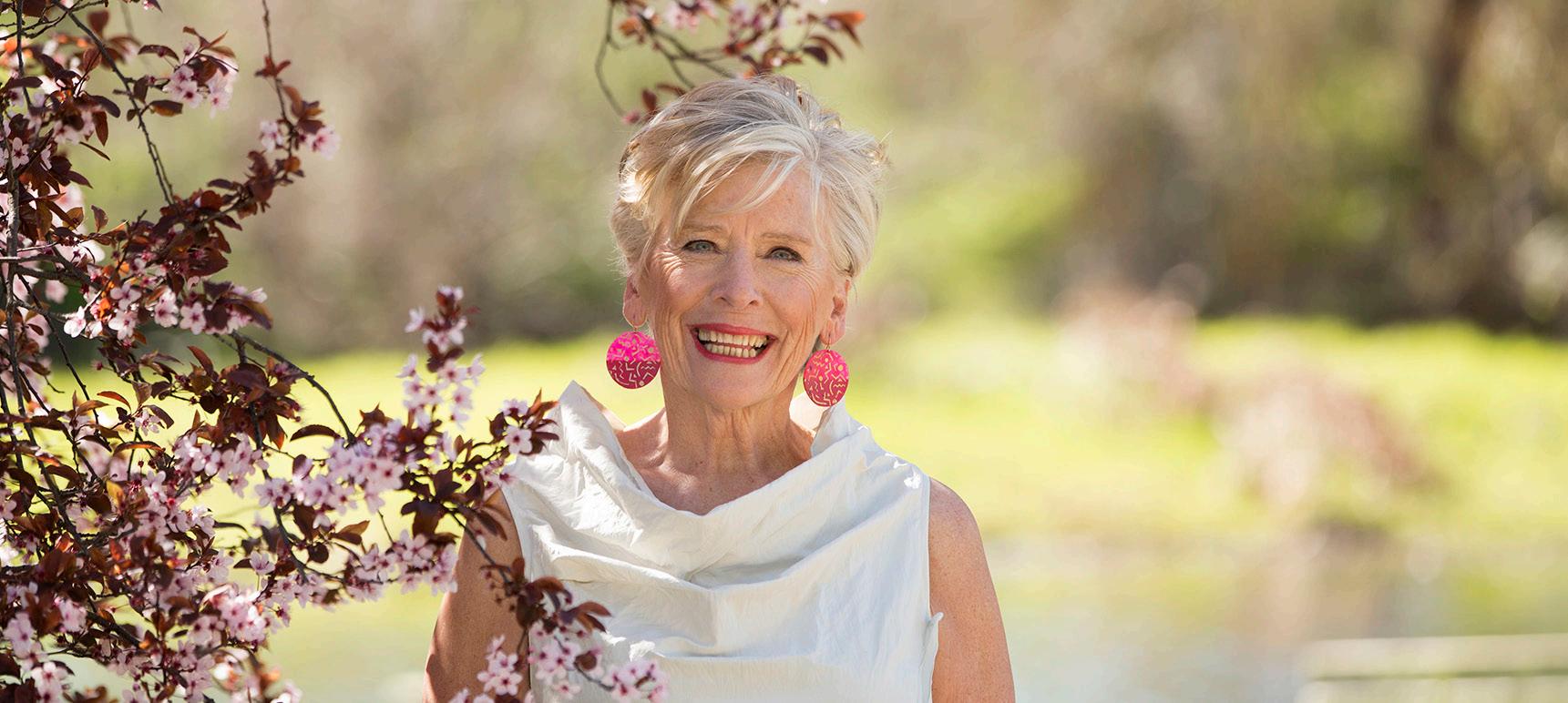
Spring Frittata

The benefits
Eggs are a compact and versatile source of high-quality protein, vitamins and minerals, in fact eggs are one of the few vegetarian sources of Vitamin D, which is essential for healthy bones. Combined with calcium-rich cheese and the fresh flavours of chard, asparagus and caramelised onion, this frittata is a flavour filled nutrient rich anytime meal.
INGREDIENTS
3 tablespoons Extra Virgin Olive oil
2 brown onions - peeled and thinly sliced
Sea salt flakes
30g unsalted butter
1 garlic clove- finely chopped
1 tablespoon apple cider vinegar (good quality with mother)
200g chard/silverbeet- stalks and leaveswashed and finely chopped
1 bunch asparagus
1 tablespoon lemon thyme leaves chopped
6 fresh free range eggs
Freshly cracked black pepper
30g parmesan (finely grated)
80g soft goats cheese or fetta
Salad leaves to serve
METHOD
1. Preheat a fan forced oven to 180c.
2. Grease and line a 20cm oven-safe frypan or similar with parchment paper (have overlap up the sides- so you can easily lift out of the pan to serve)
3. Place a large shallow saucepan on the stove over medium heat, add the olive oil, sliced onions and a good pinch of salt, cook without colour stirring regularly, until soft and caramelised (10 minutes).
4. Add the butter and finely chopped garlic, and continue to cook for 2-3 minutes.
5. Deglaze the pan with the apple cider vinegar.
6. Increase the heat to high and add the finely chopped stalks and leaves of
We invite you to try and make Maggie’s recipes.
Send a photo of you and your creation from this issue, and in a sentence, let us know what you liked about It. If we pick your entry, we’ll publish it in the next ANMJ and reward you with a $50 Maggie Beer voucher. Send your entry to: healthyeating@anmf.org.au
Nicely done Kate Sheater on making Maggie’s, Warm pear & chocolate crumble, published last issue. We hope you enjoy your $50 Maggie Beer voucher.

“Well, isn’t Maggie Beer the GOAT. This pear and chocolate crumble is the perfect winter dessert. I will be making this again,” says Kate.
the chard/silverbeet, toss to wilt and evaporate off water. Take the mix and spread evenly over the base of the prepared fry pan.
7. Meanwhile –trim the stalks off the asparagus, cut into inch pieces and place in a microwave safe container with a splash of water. Place the lid on and cook for 1.5 minutes, cool slightly before draining. Spread over the chard mix.
8. In a medium sized bowl whisk together the lemon thyme, eggs and pepper, pour into frypan.
9. Top with the grated parmesan and crumbled goats or fetta cheese.
10. Place in the preheated oven and cook until set and golden 25-35 minutes. (You may need to grill the top if the mix is cooked and the top not golden)
11. Remove from the oven, allow to sit for 10 minutes before serving with salad.
15 mins
25–35 mins
4–6 serves for lunch with salad HEALTHY EATING 56 Oct–Dec 2023 Volume 28, No. 2
Preparation
Cooking
Serves
Project partners









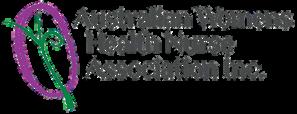








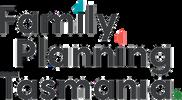







AusCAPPS.trial@monash.edu
Calling practice nurses, general practitioners, Calling practice nurses, general practitioners, and community pharmacists and community pharmacists
part in a national survey about providing long-acting reversible contraception and early medical abortion in primary care.
an online survey for your chance to WIN one of ten iPad Pros ! This study is funded by an NHMRC partnership grant and approved by the Monash University Human Research Ethics Committee #28002
For more information:
Take
Complete
The Department of Health and Aged Care is an official partner of AusCAPPS The Department of Health and Aged Care is an official partner of AusCAPPS https://redcap.helix.monash.edu/surveys/ ?s=WCRMJHRXCMT8EDE4
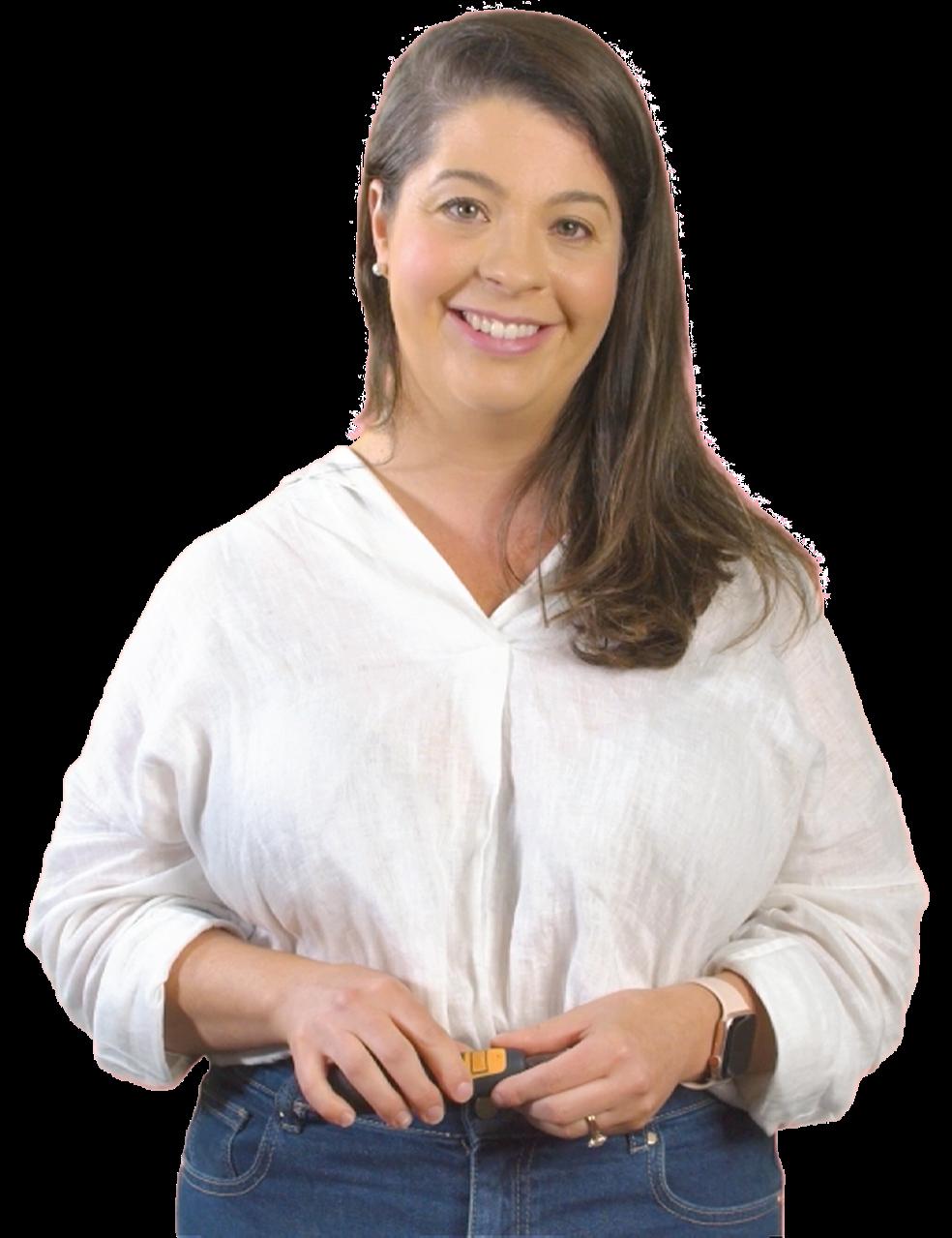































 Federal Vice President
Federal Vice President
 Natalie Dragon
Natalie Dragon























 Annie poses with Singapore nurses, who hosted the last Congress before COVID.
ANMF Federal Secretary Annie Butler with Emeritus Professor Christine Duffield
Researchers and specialists in Advanced Practice Nursing
Annie poses with Singapore nurses, who hosted the last Congress before COVID.
ANMF Federal Secretary Annie Butler with Emeritus Professor Christine Duffield
Researchers and specialists in Advanced Practice Nursing











 Yvette Gladwell
Yvette Gladwell
 Christina Luu
Christina Luu


 Molly Smart
Molly Smart








 Lucy Gardam GradDipN, BNurs, RN is a Clinical Nurse Consultant MN (Anaesthetics and Recovery), at Royal Hobart Hospital
Lucy Gardam GradDipN, BNurs, RN is a Clinical Nurse Consultant MN (Anaesthetics and Recovery), at Royal Hobart Hospital



 By Angela Sheedy
By Angela Sheedy

 By Rasa Kabaila
By Rasa Kabaila






 By Kirsty McLeod, Lisa Peberdy, Mia McLanders, Megan Barker and Lauren Kearney
By Kirsty McLeod, Lisa Peberdy, Mia McLanders, Megan Barker and Lauren Kearney






 By Christine Murray, Judith Goh and Hannah Krause
By Christine Murray, Judith Goh and Hannah Krause




 By Lori J Delaney, Suzanne Williams and Sandra Johnston
By Lori J Delaney, Suzanne Williams and Sandra Johnston




















 By Maria Murphy, Jacqueline Johnston, Christine Murray, Jennifer Austerberry, Marcia George OAM, Mercy Rajan and Kristina Edvardsson
By Maria Murphy, Jacqueline Johnston, Christine Murray, Jennifer Austerberry, Marcia George OAM, Mercy Rajan and Kristina Edvardsson




























